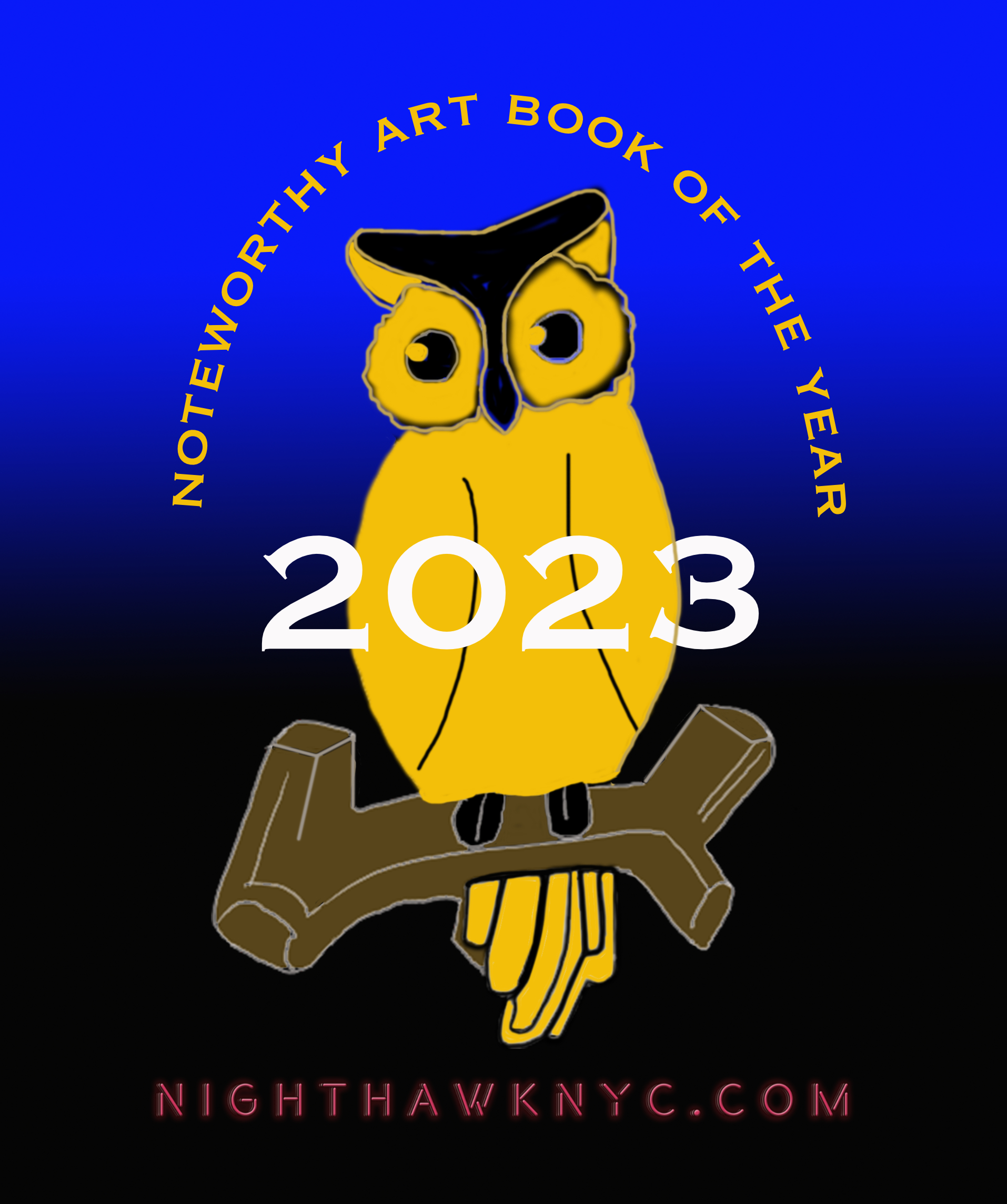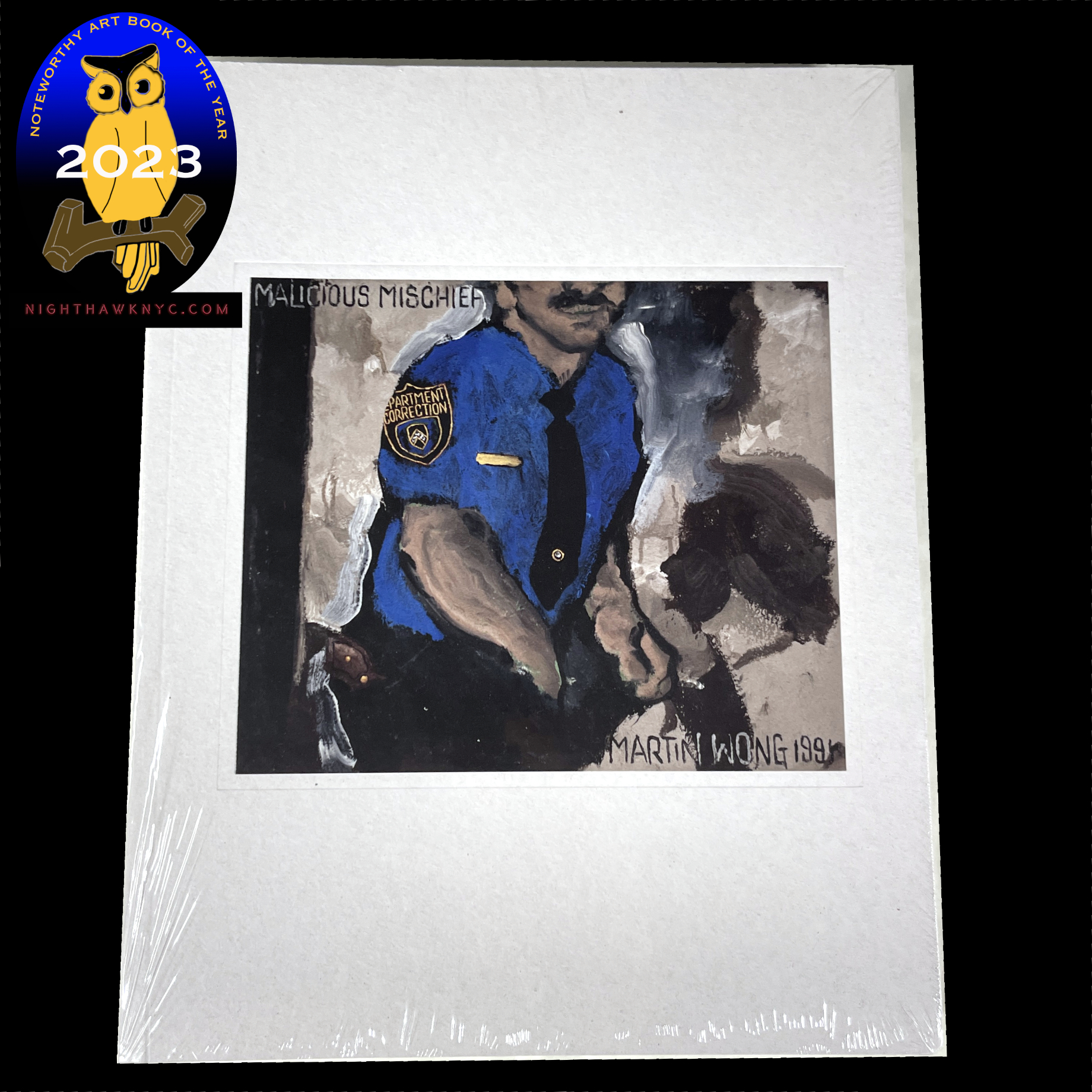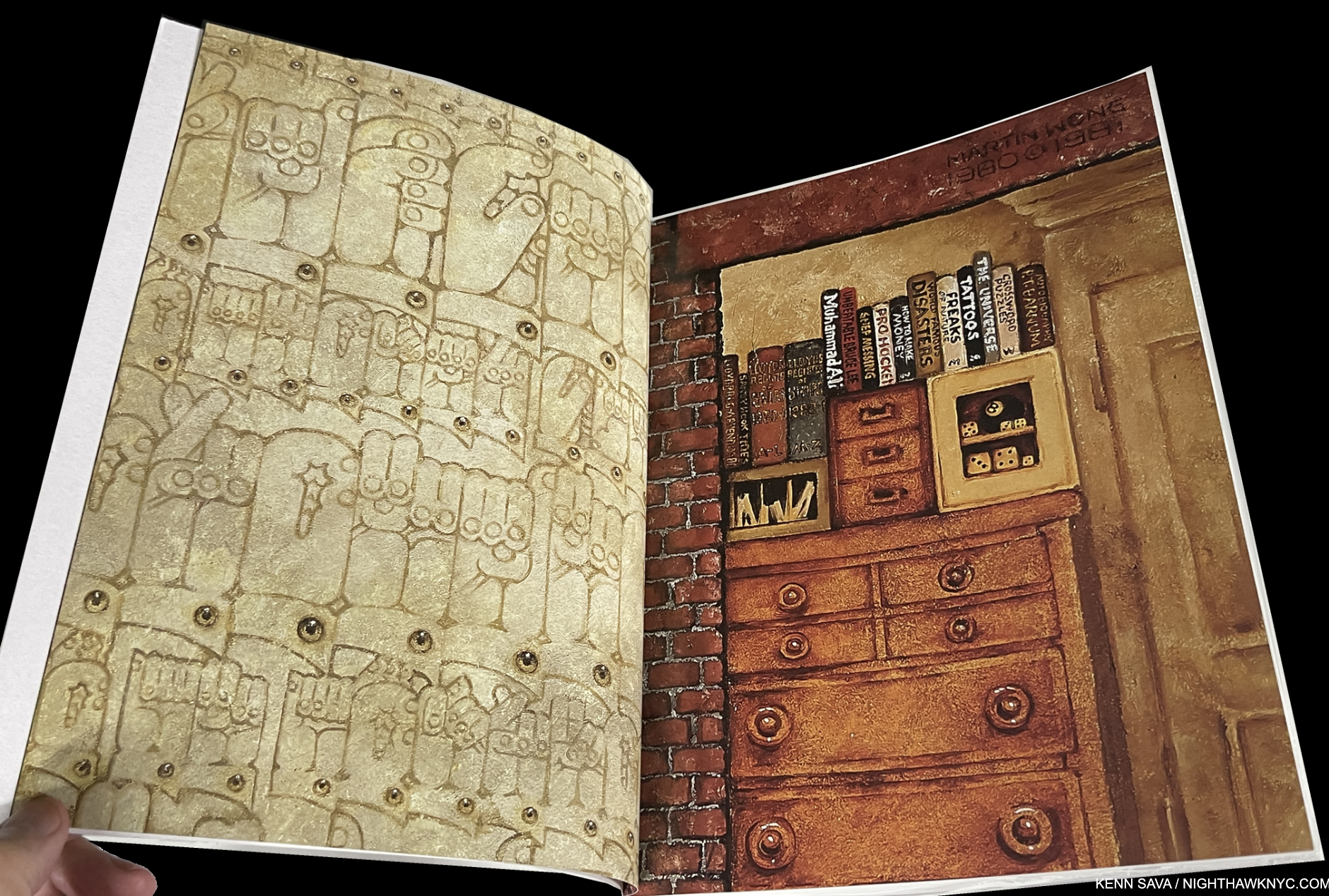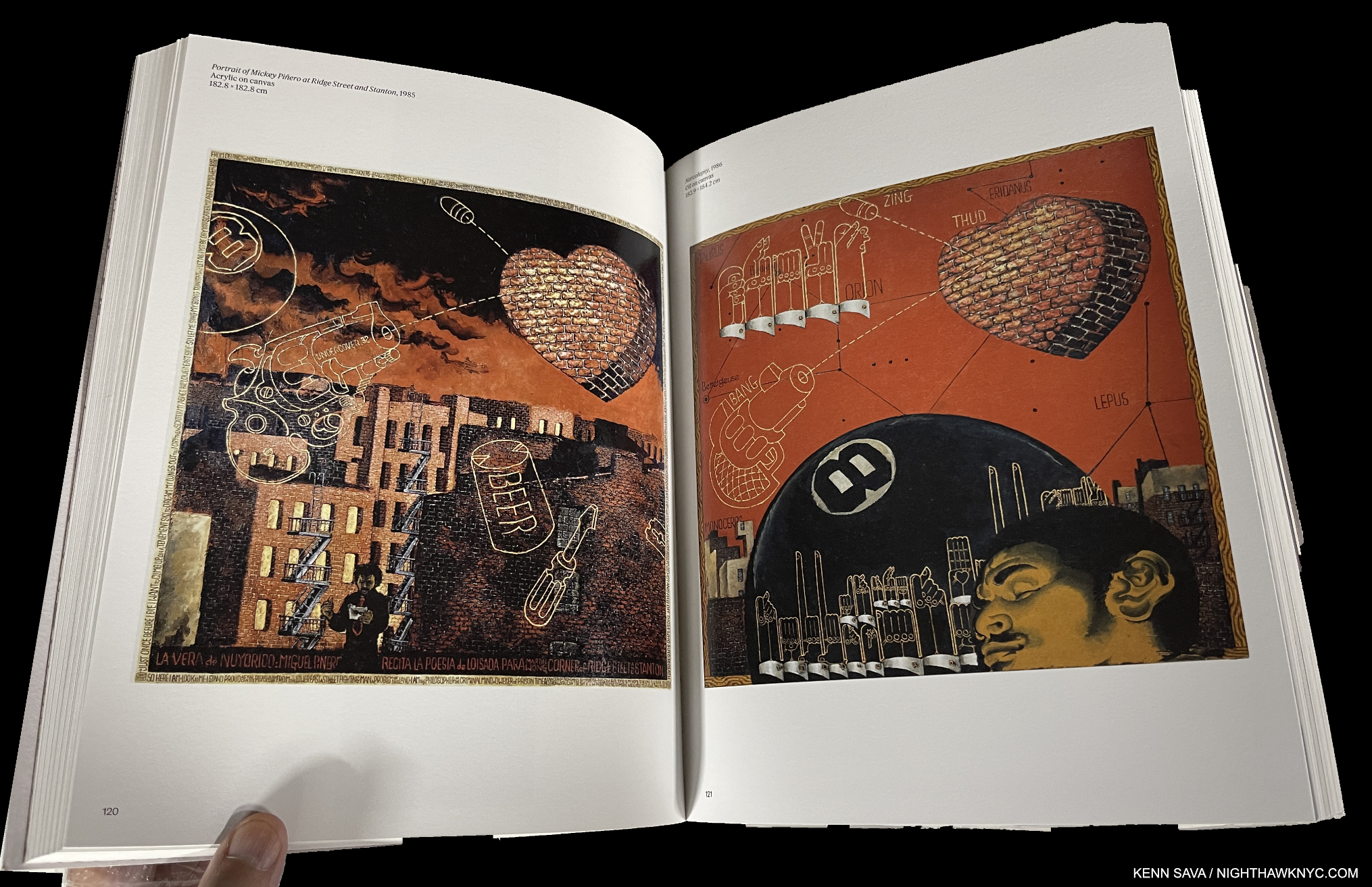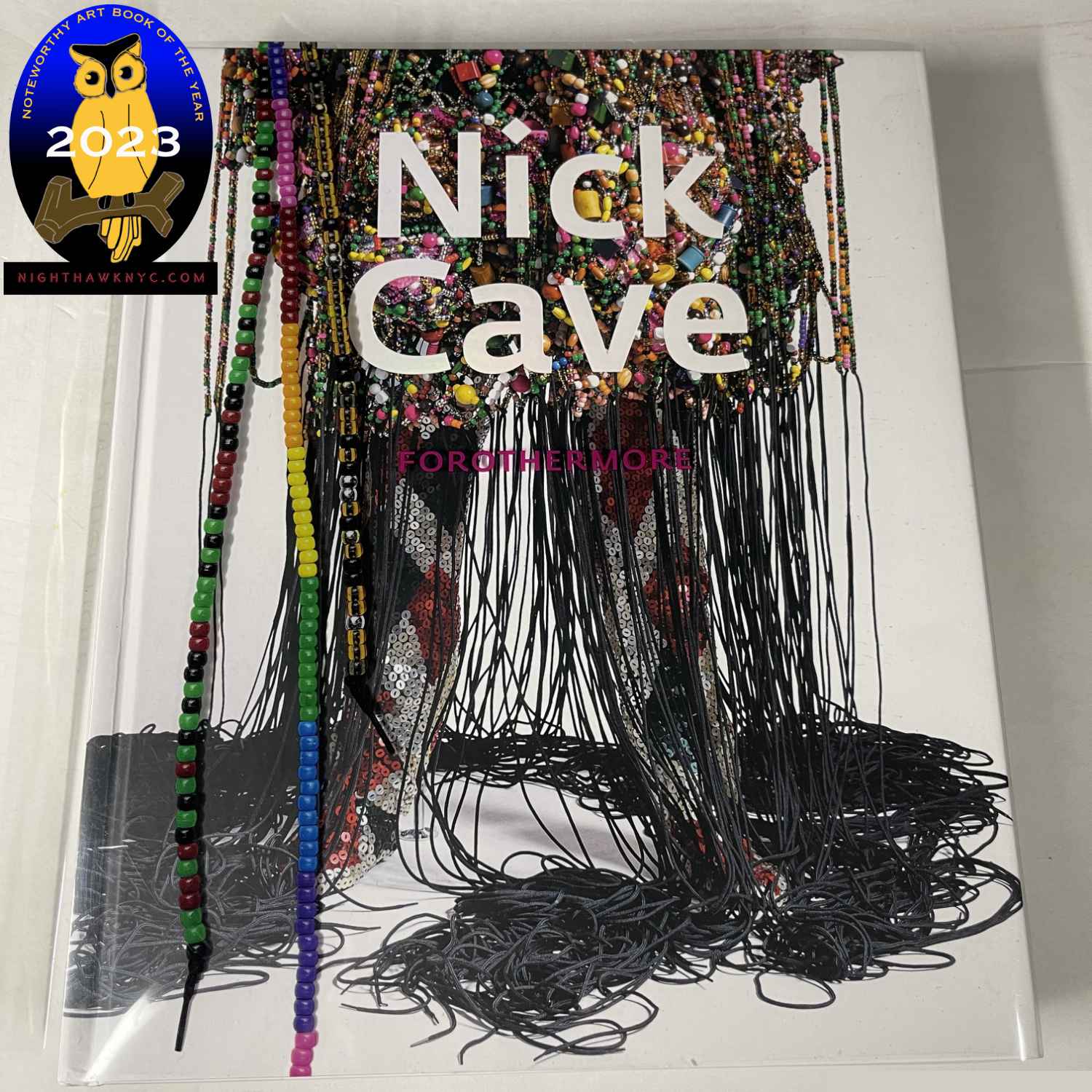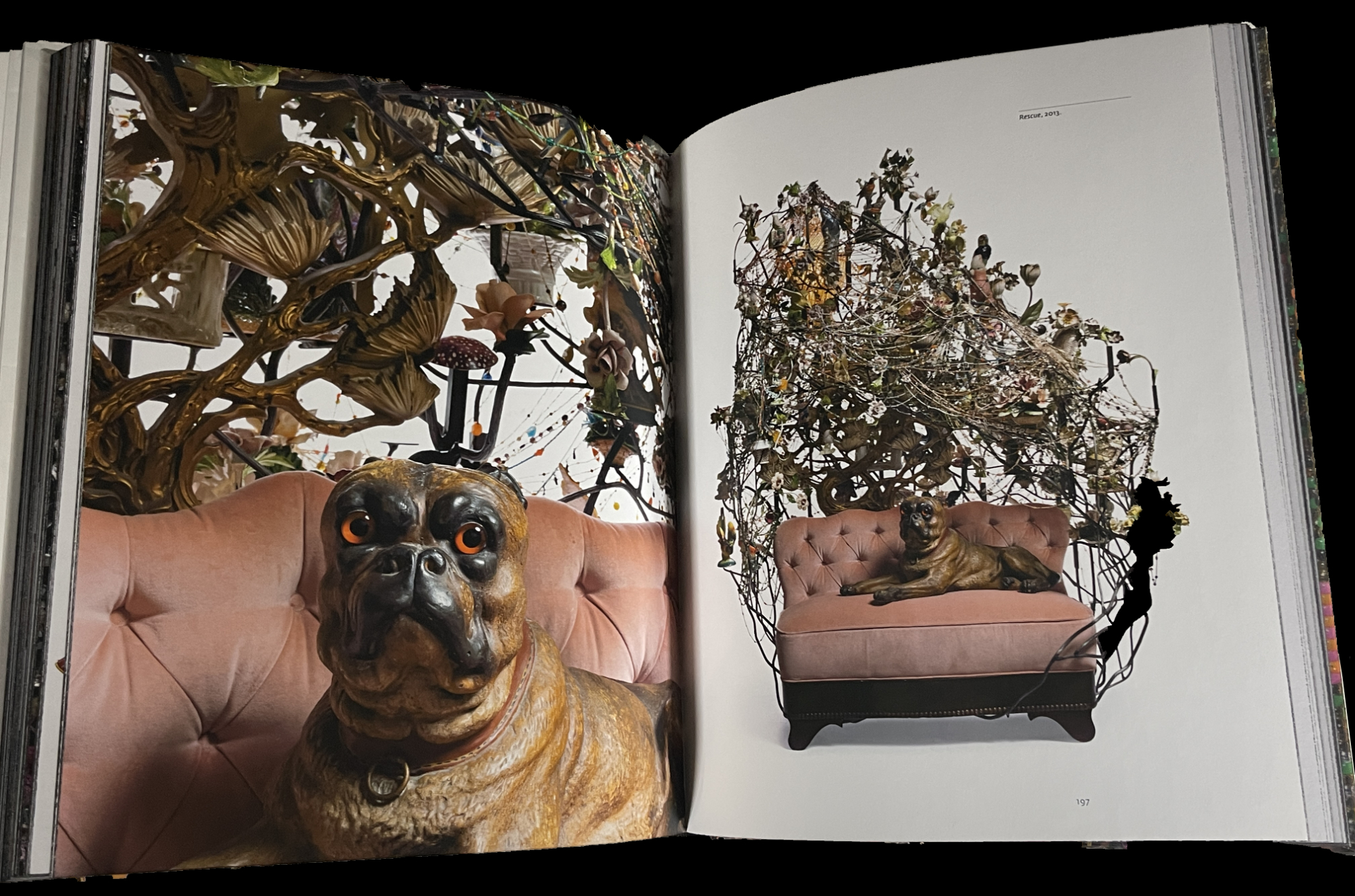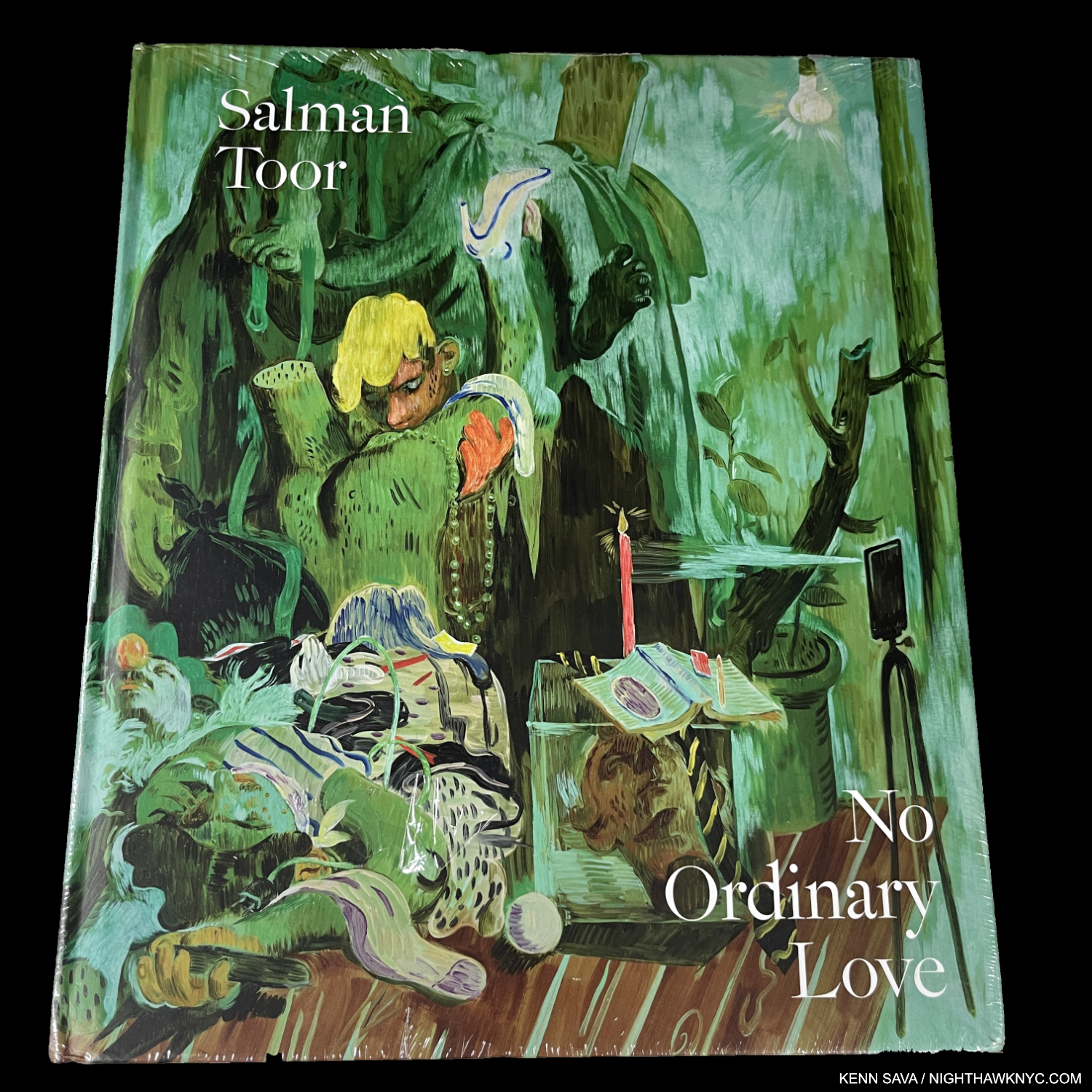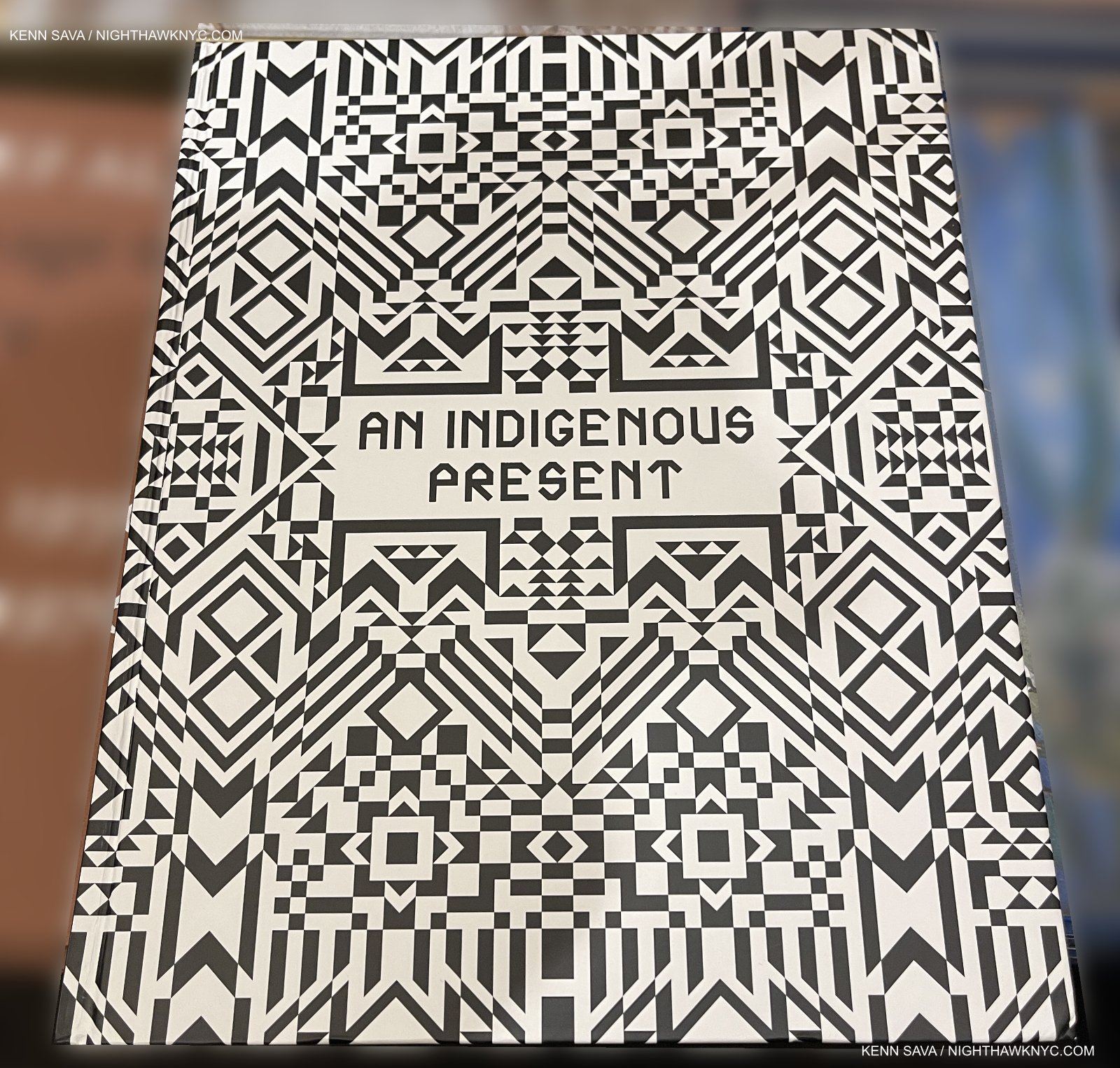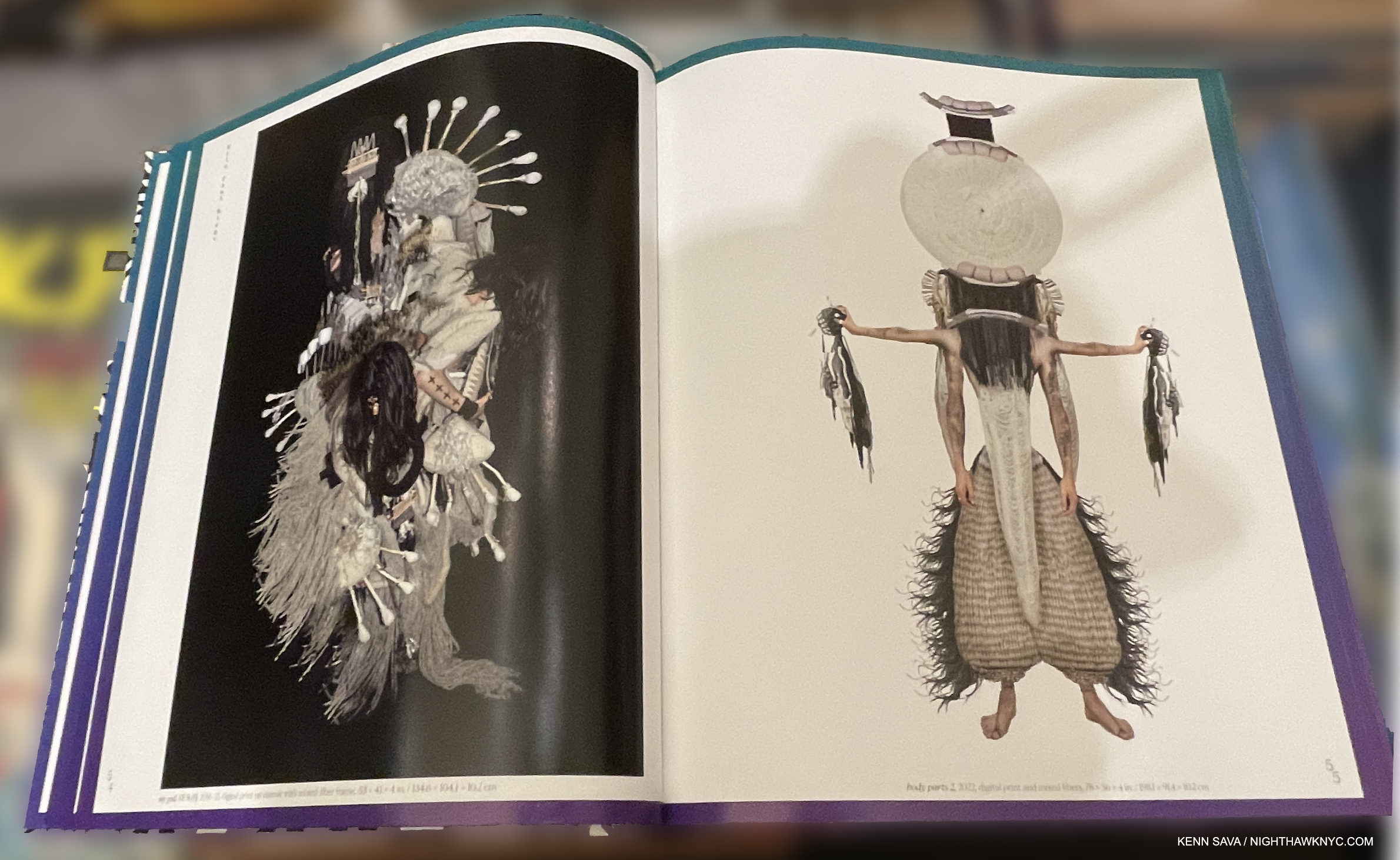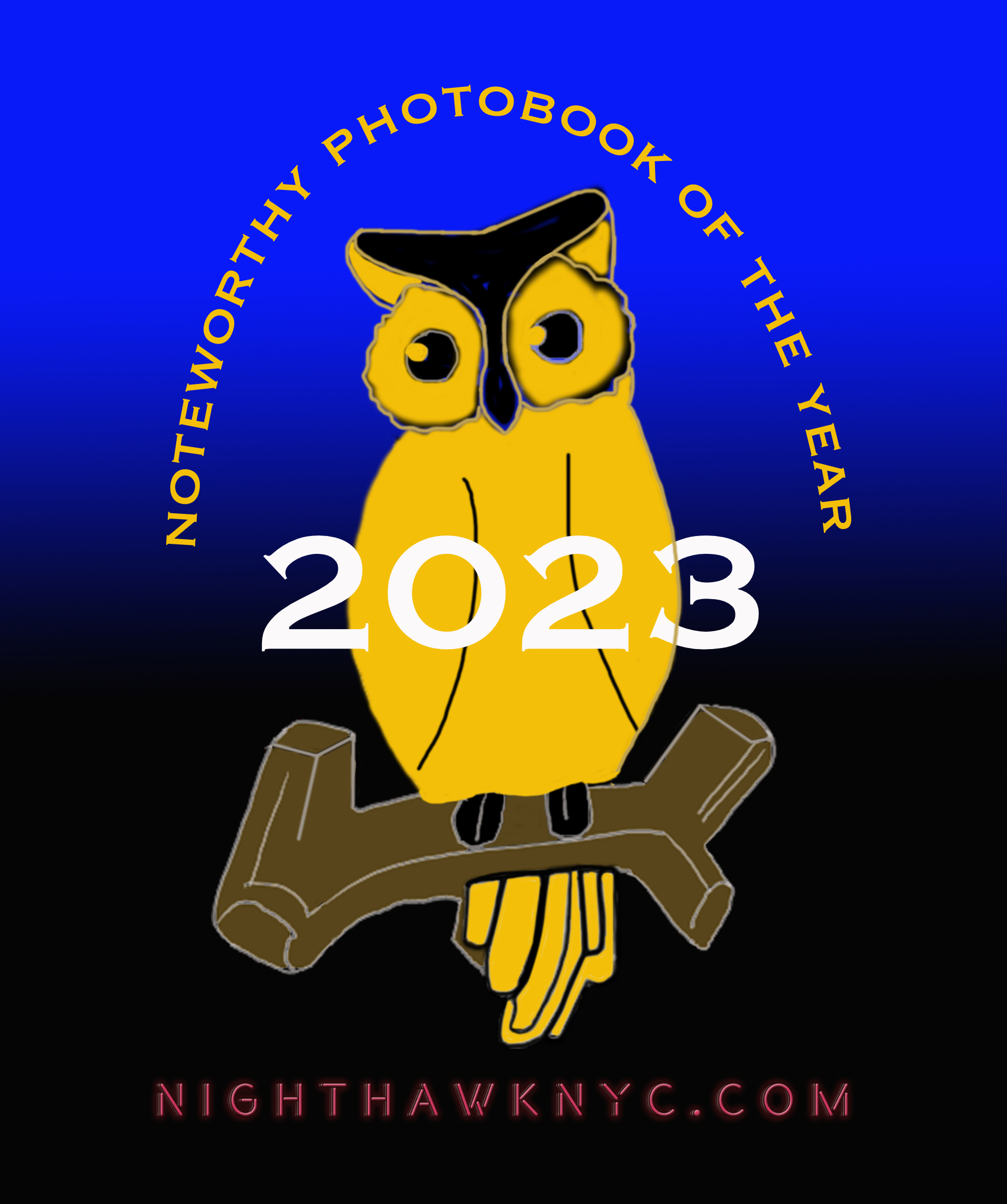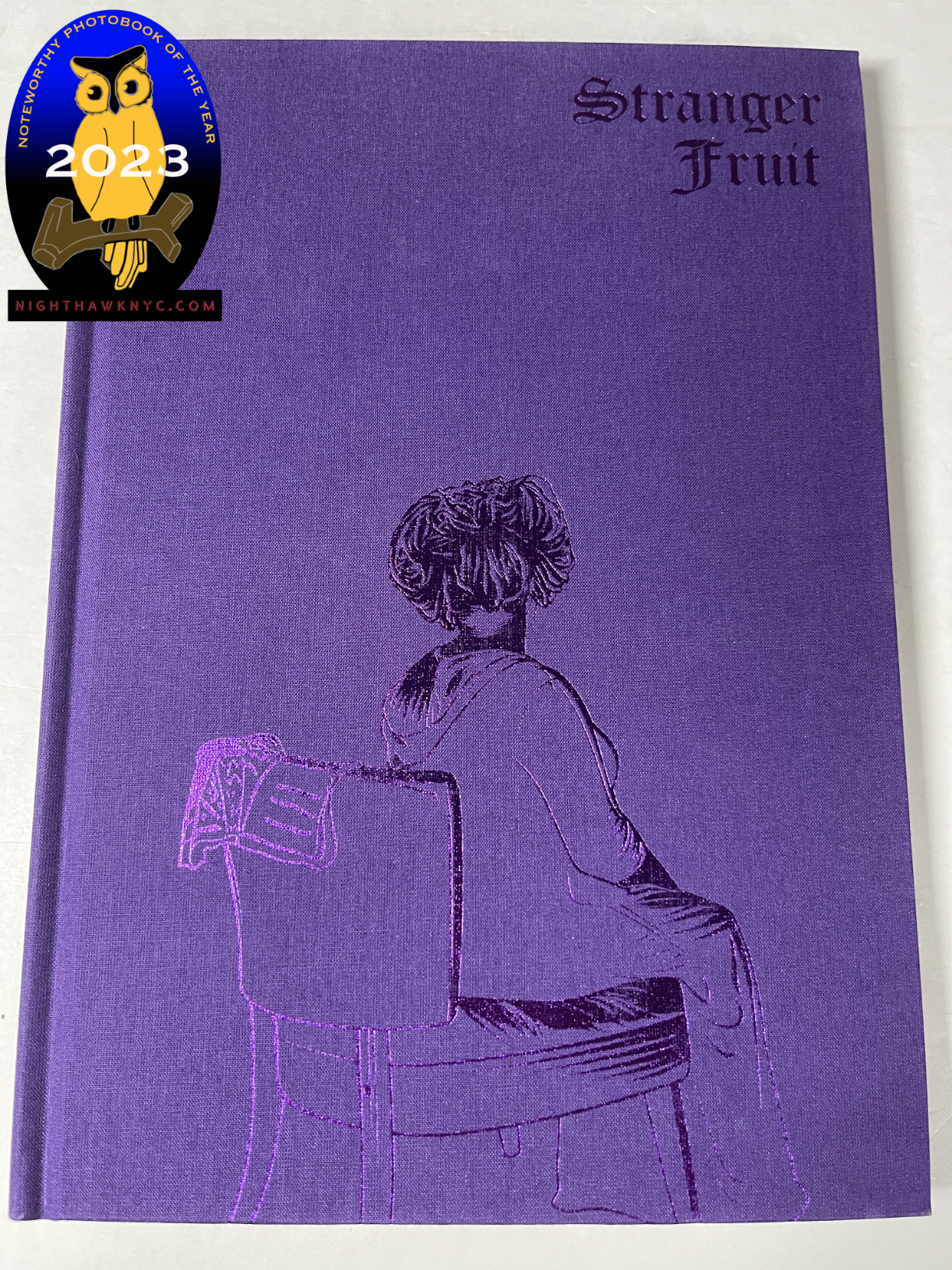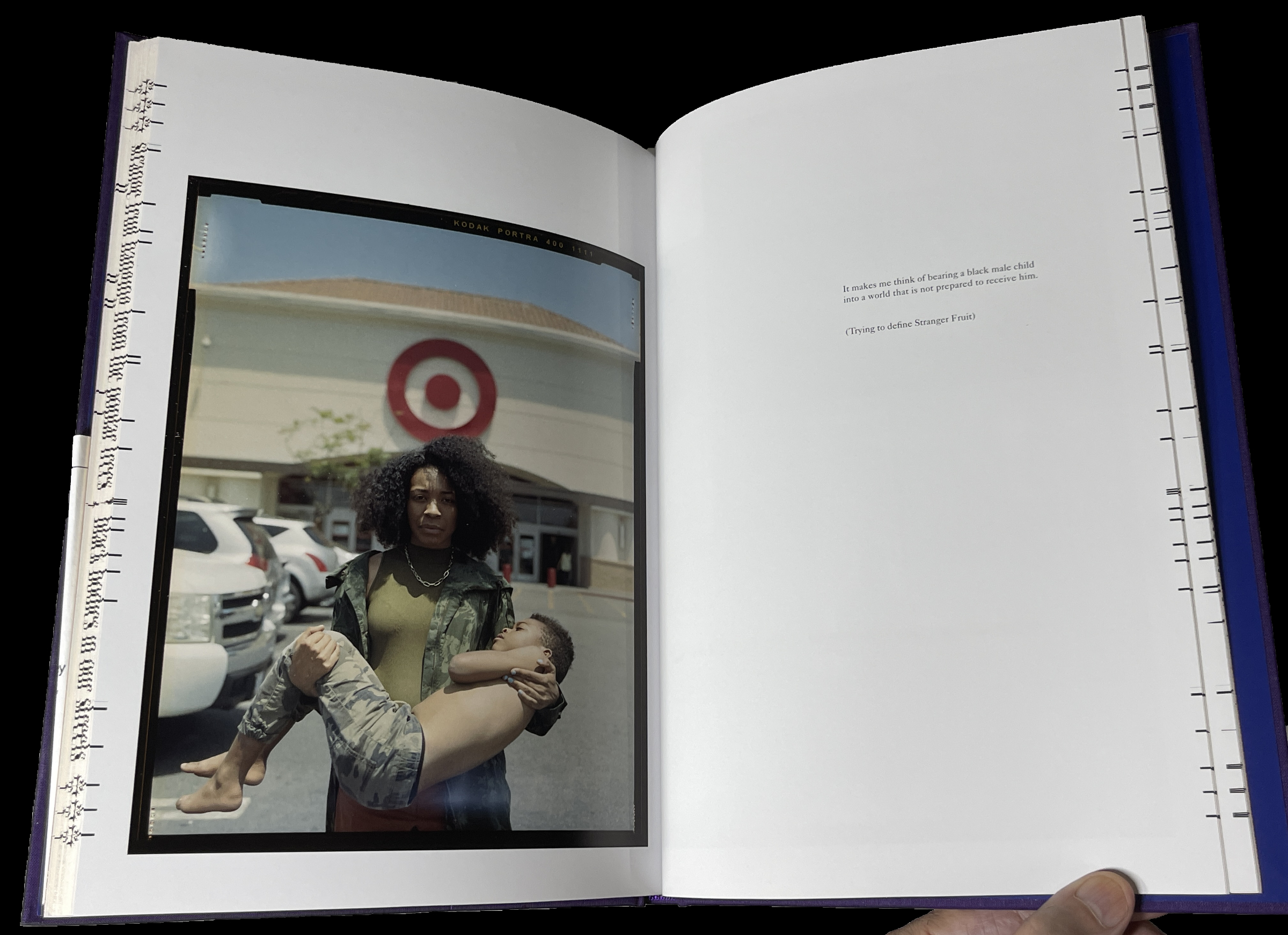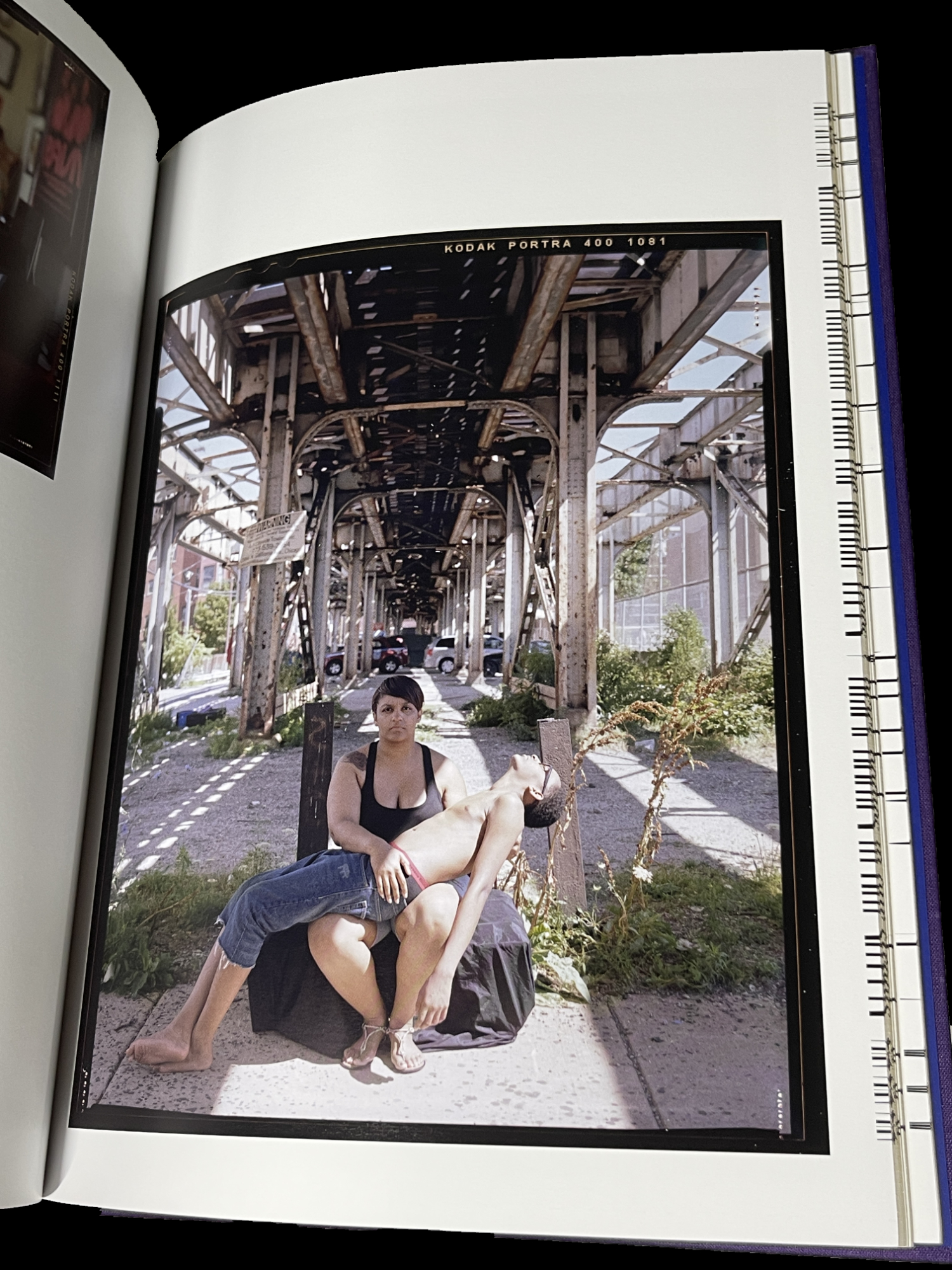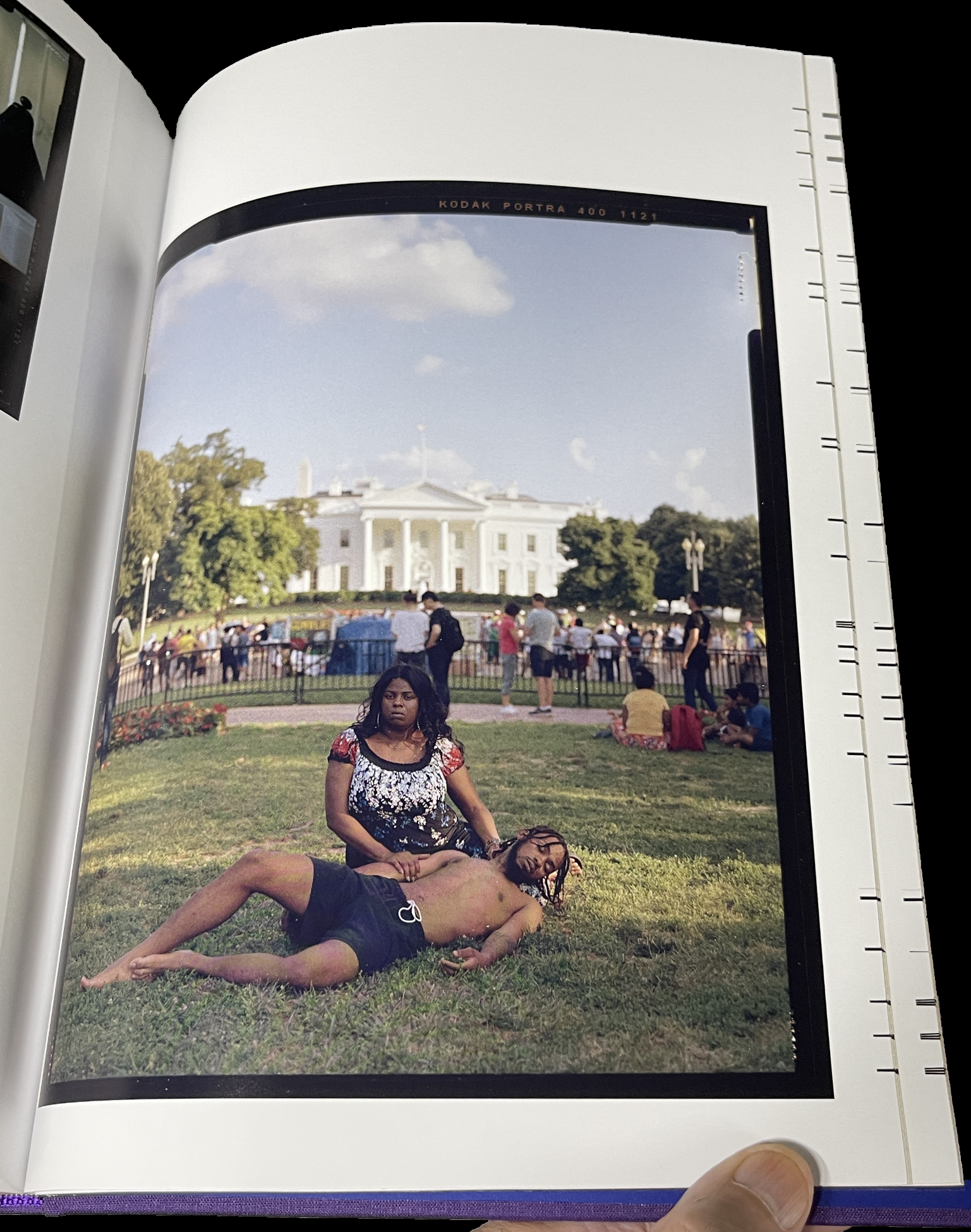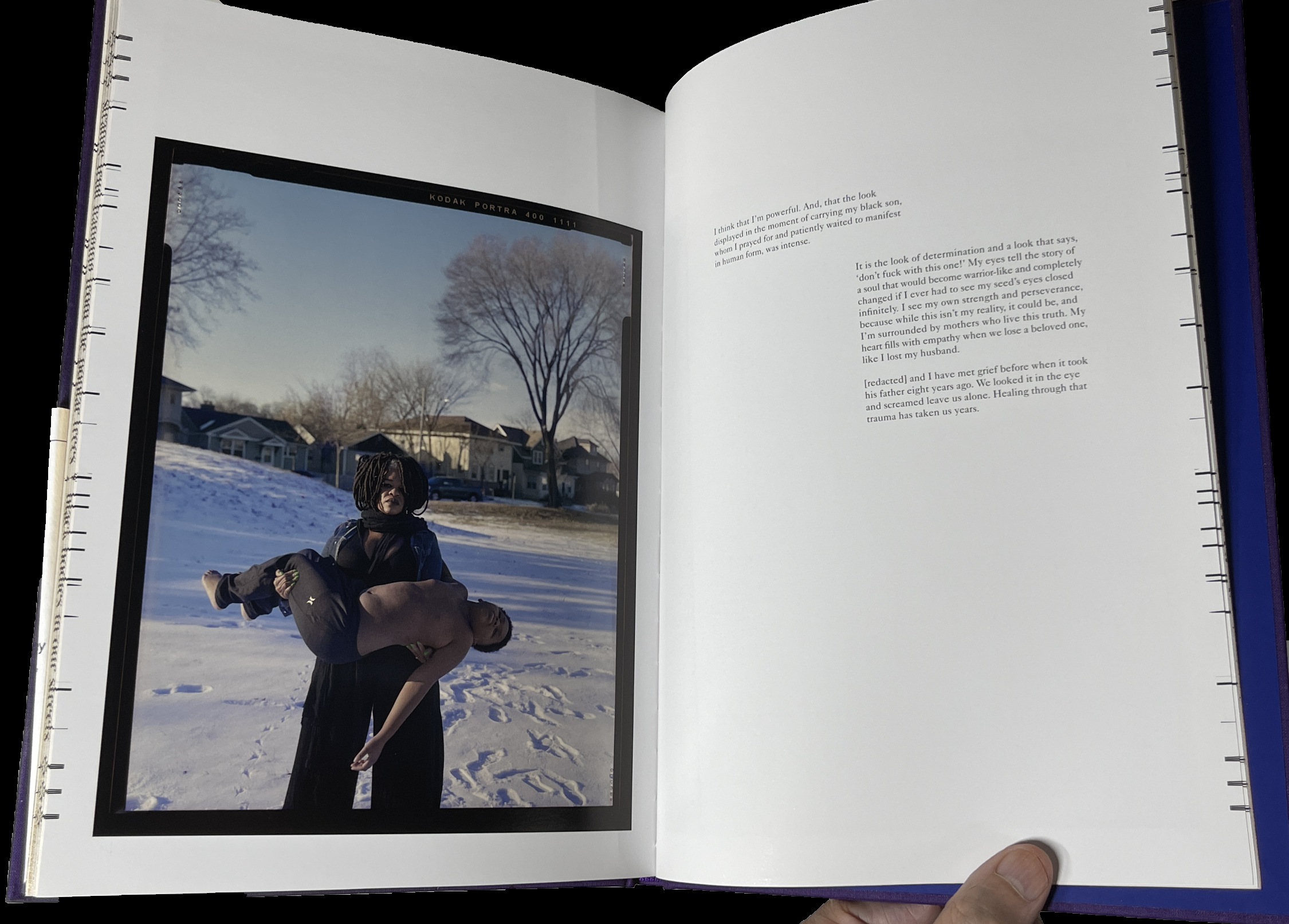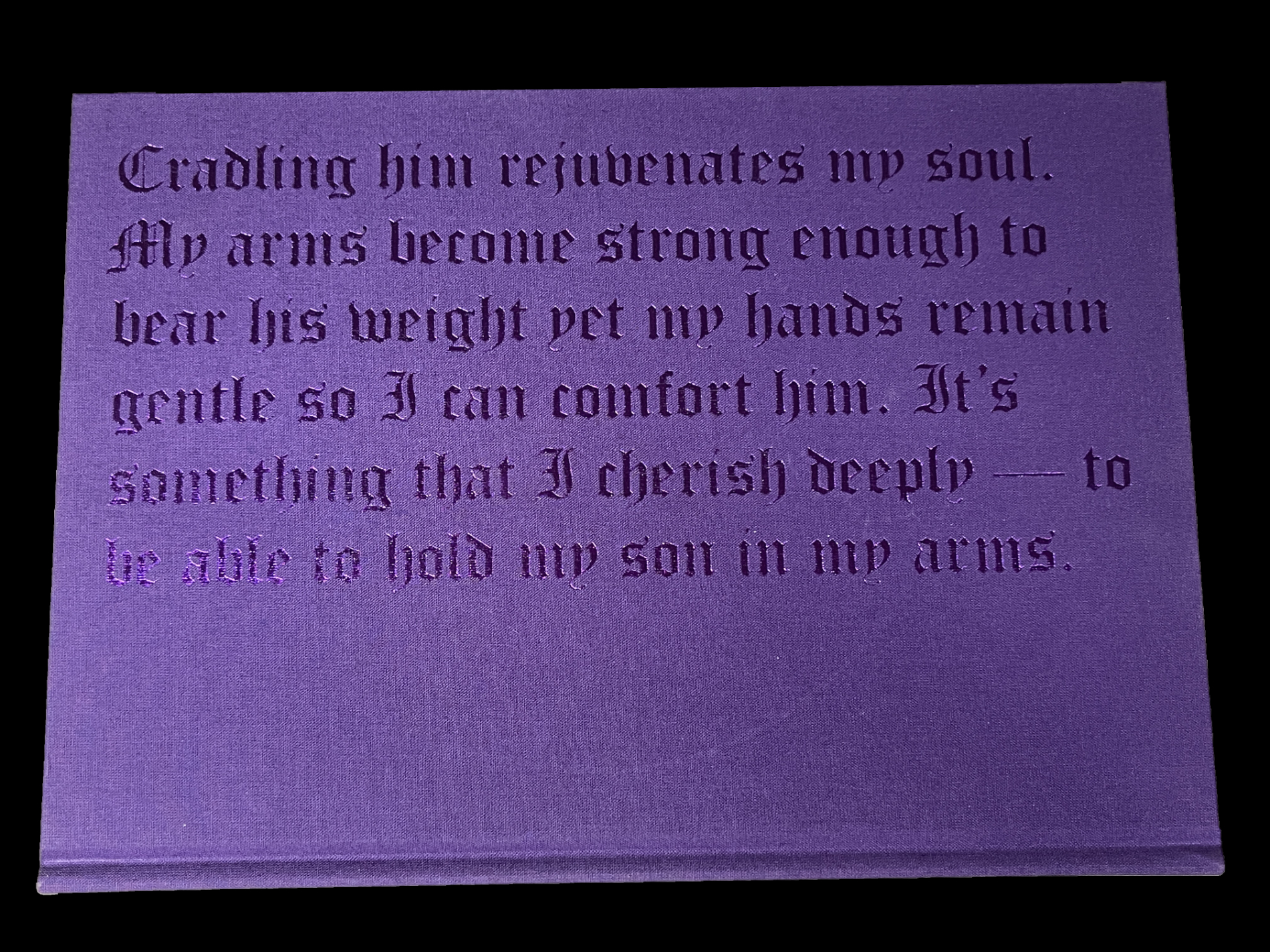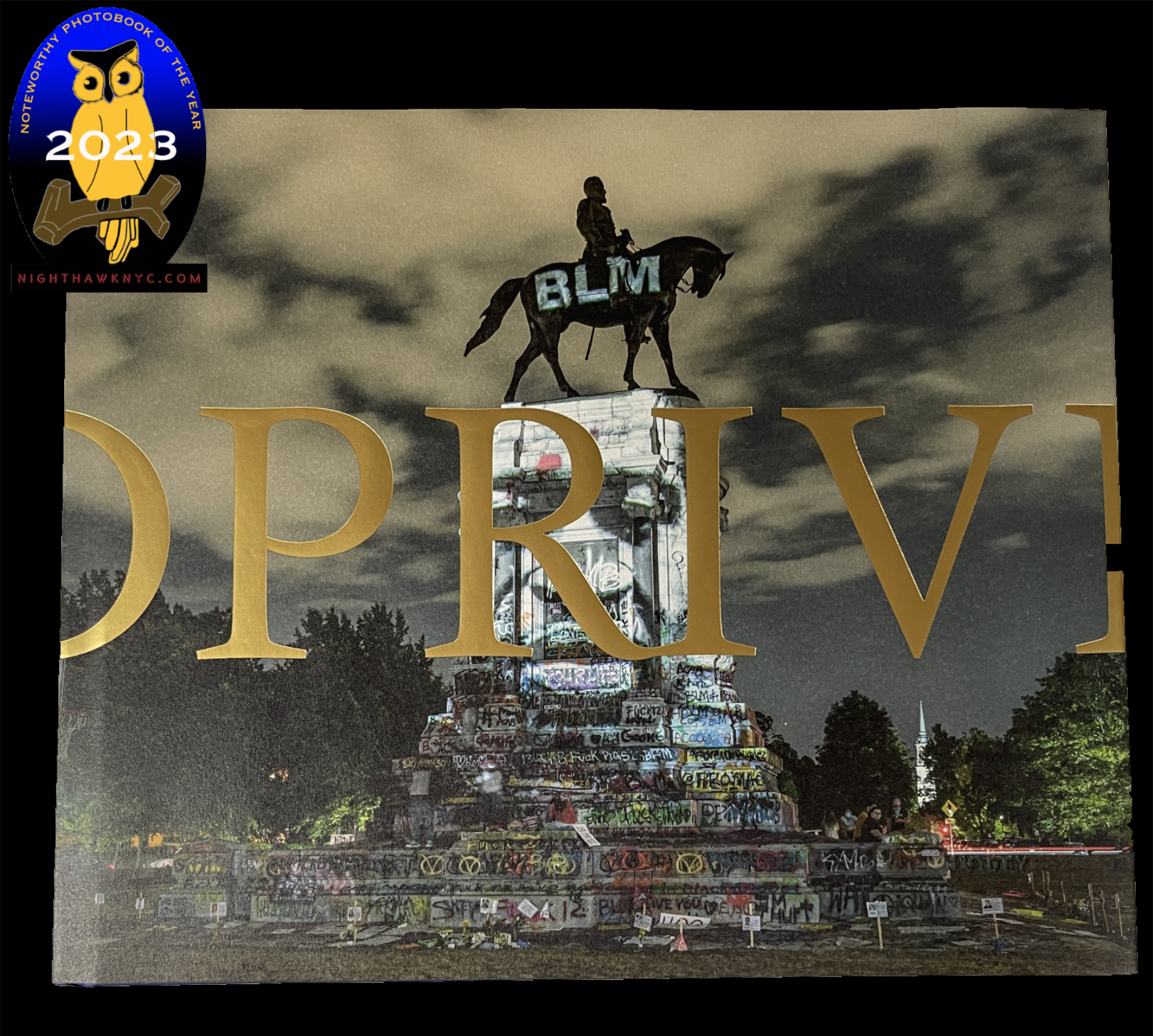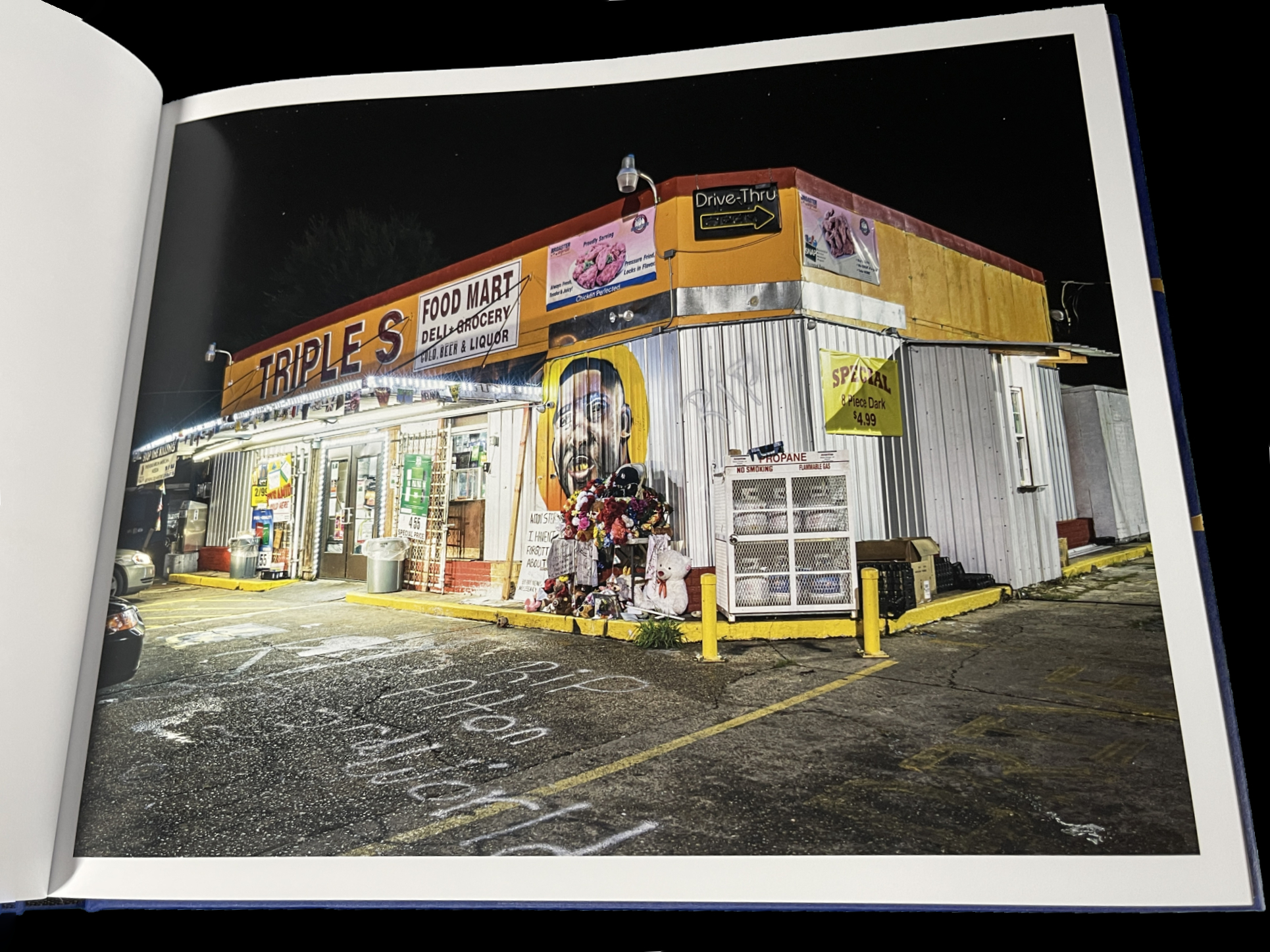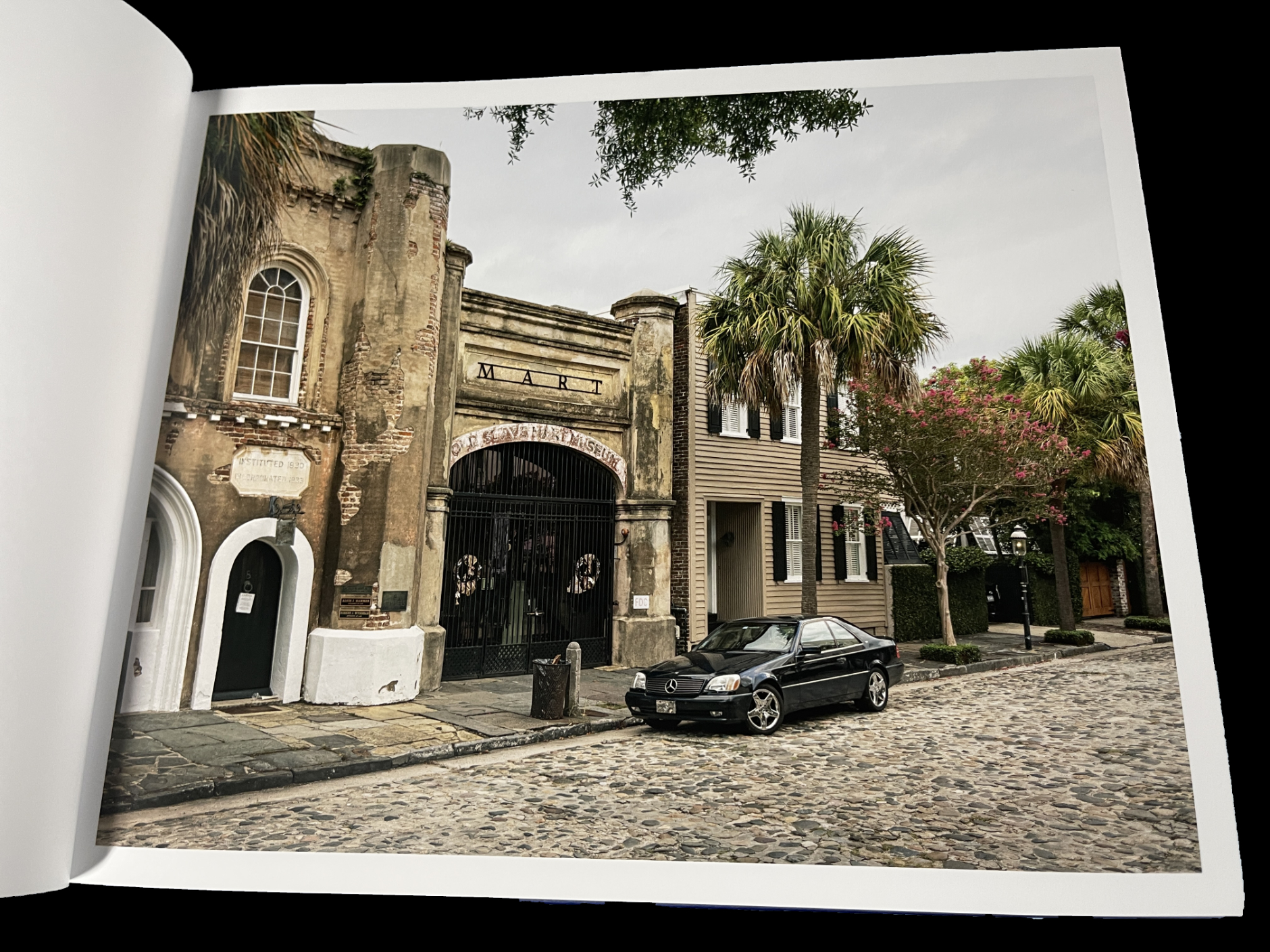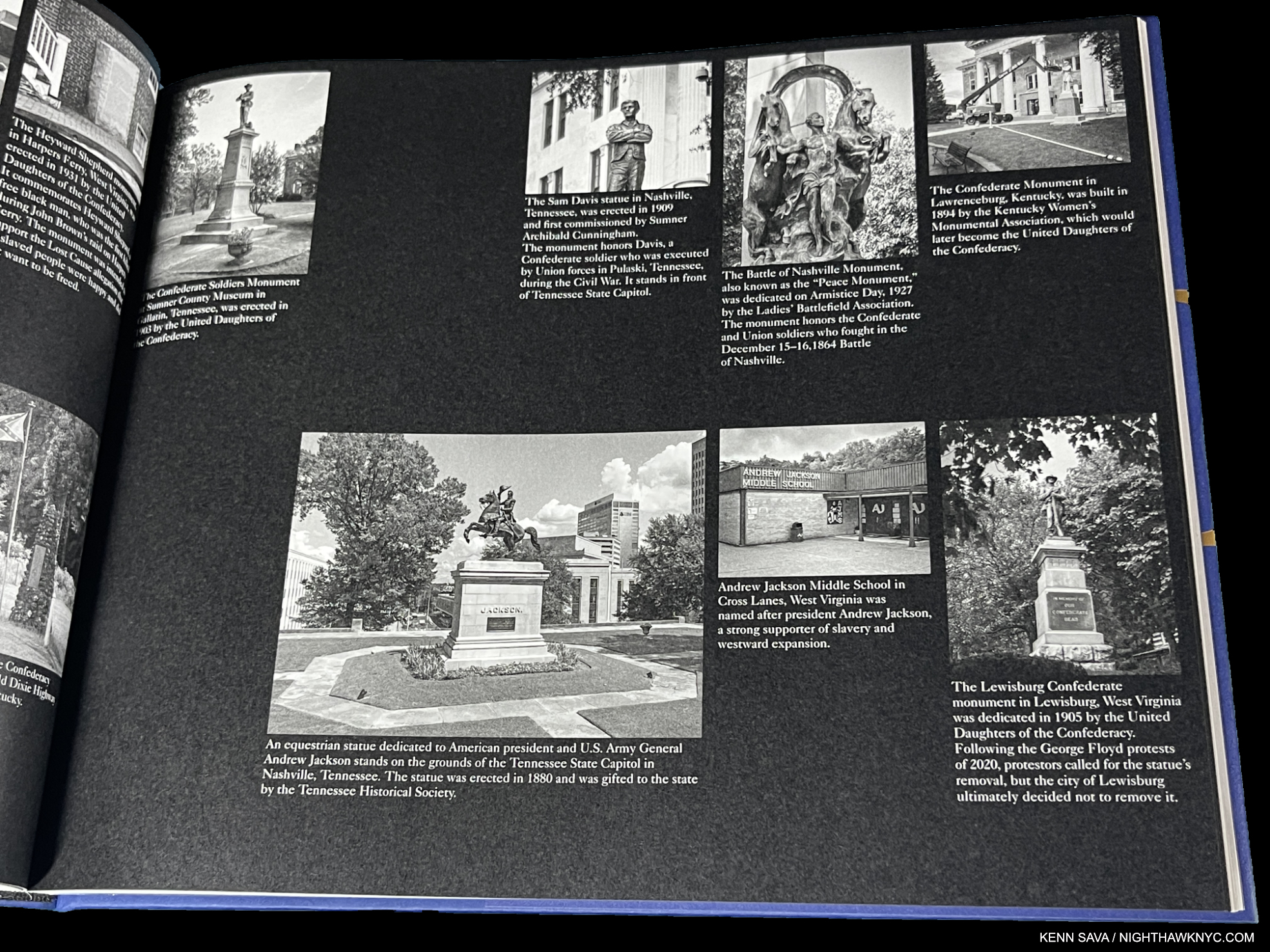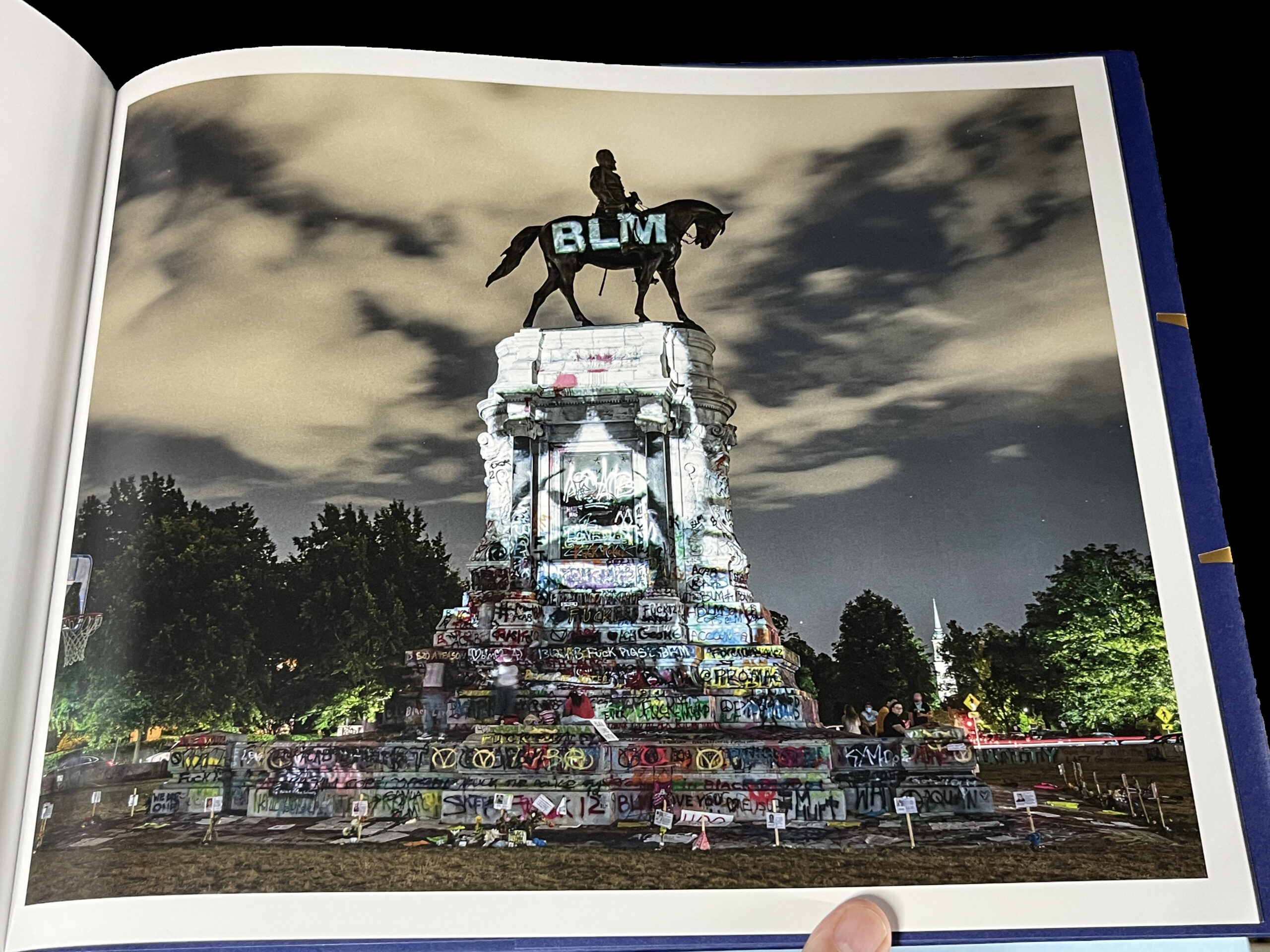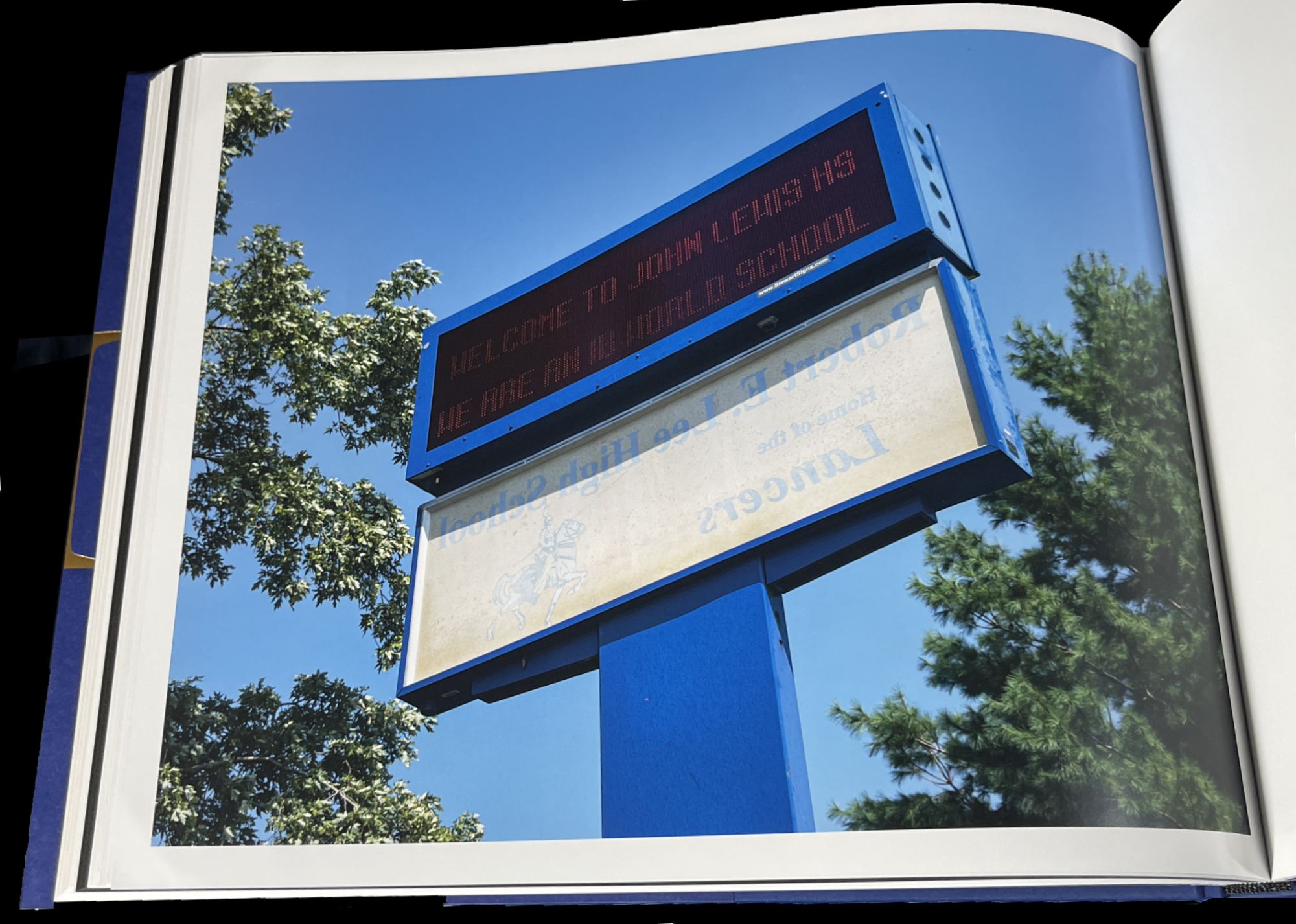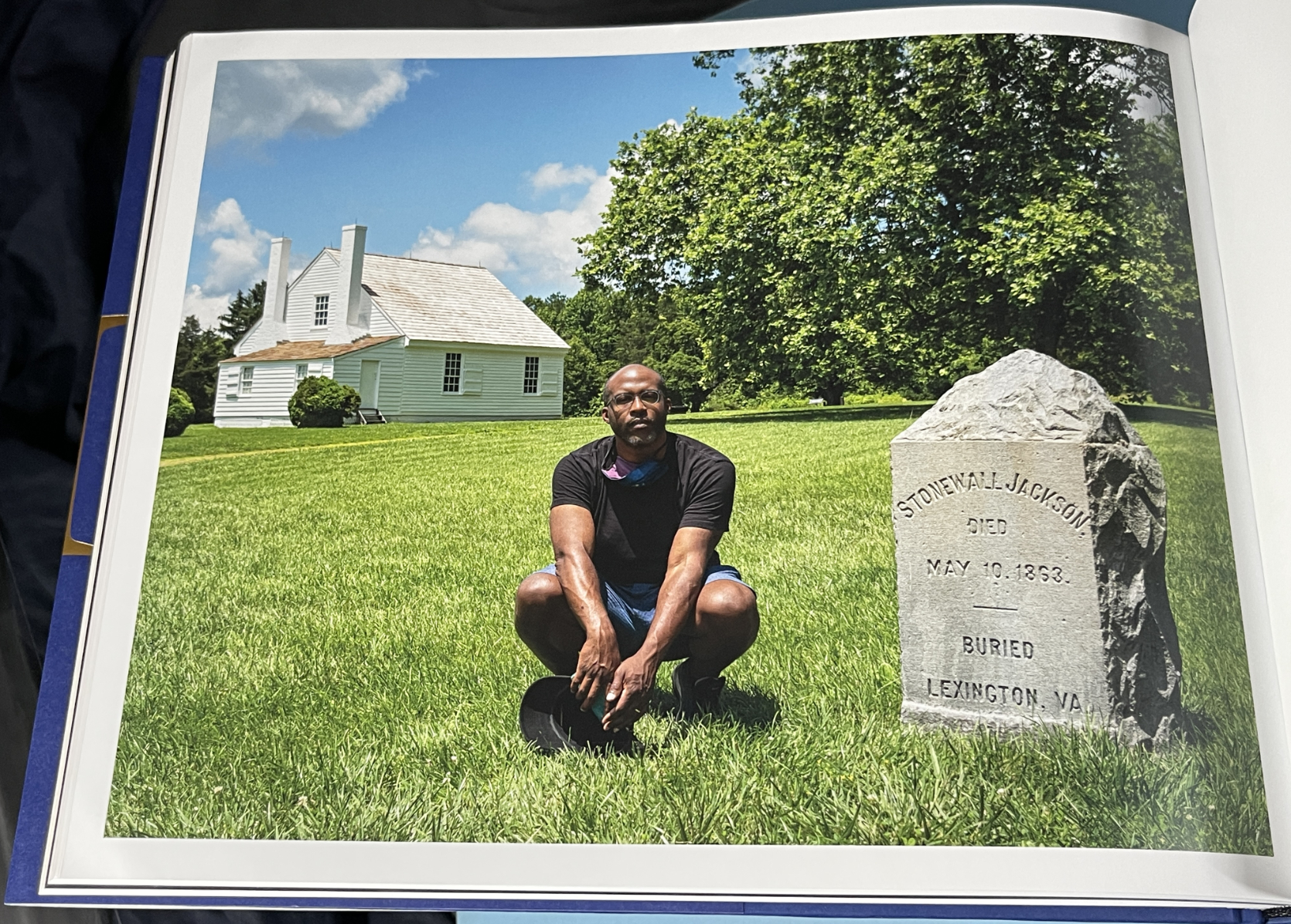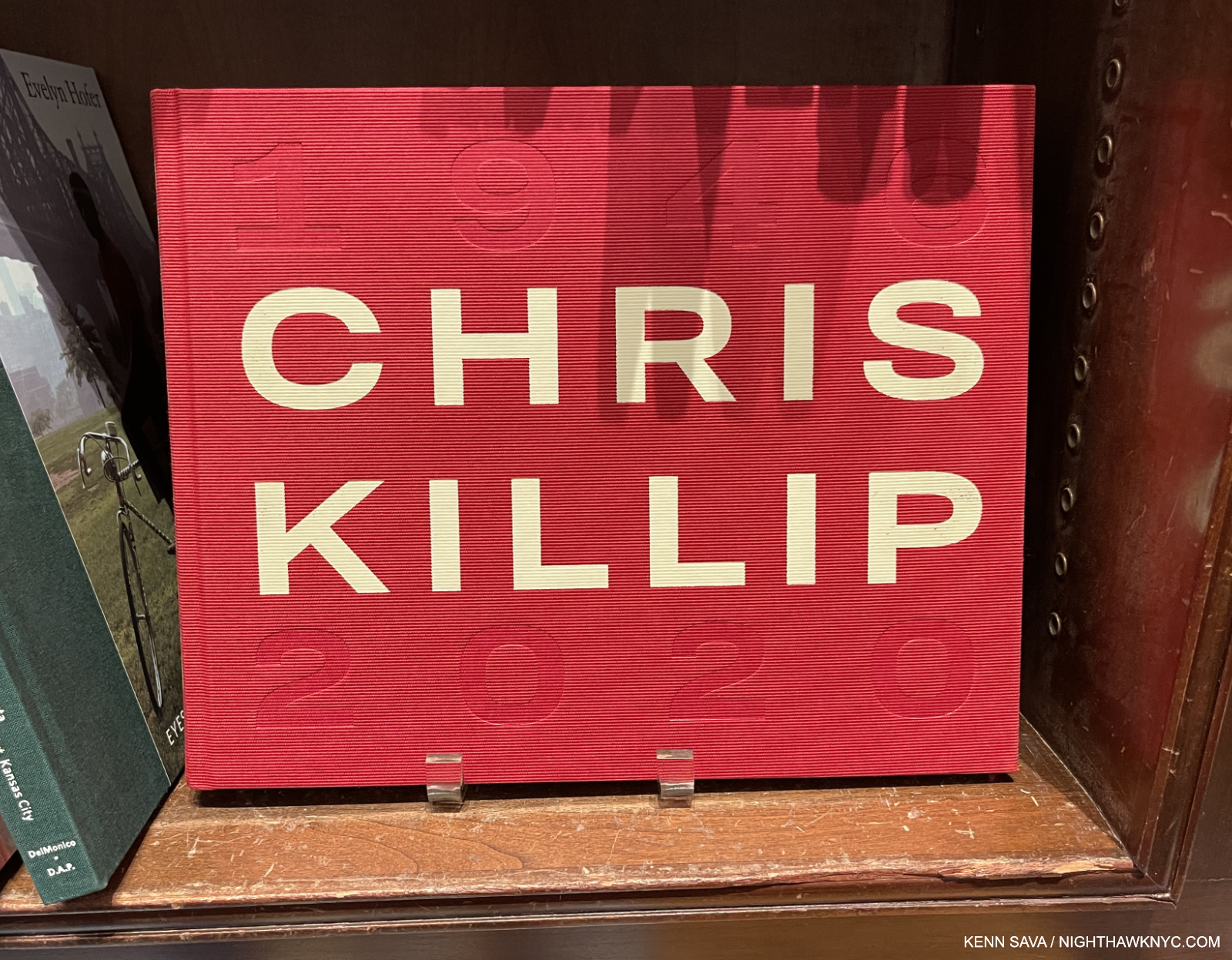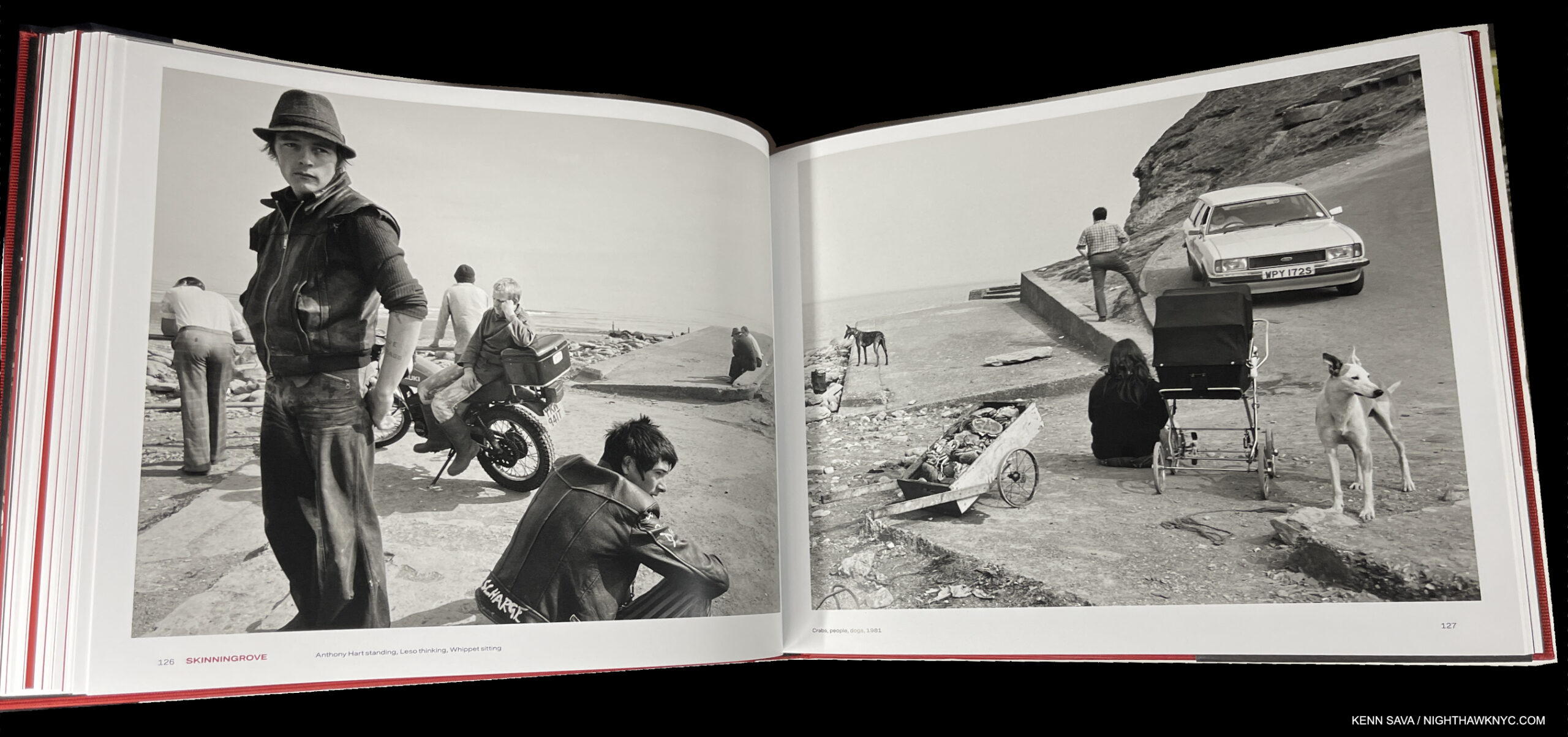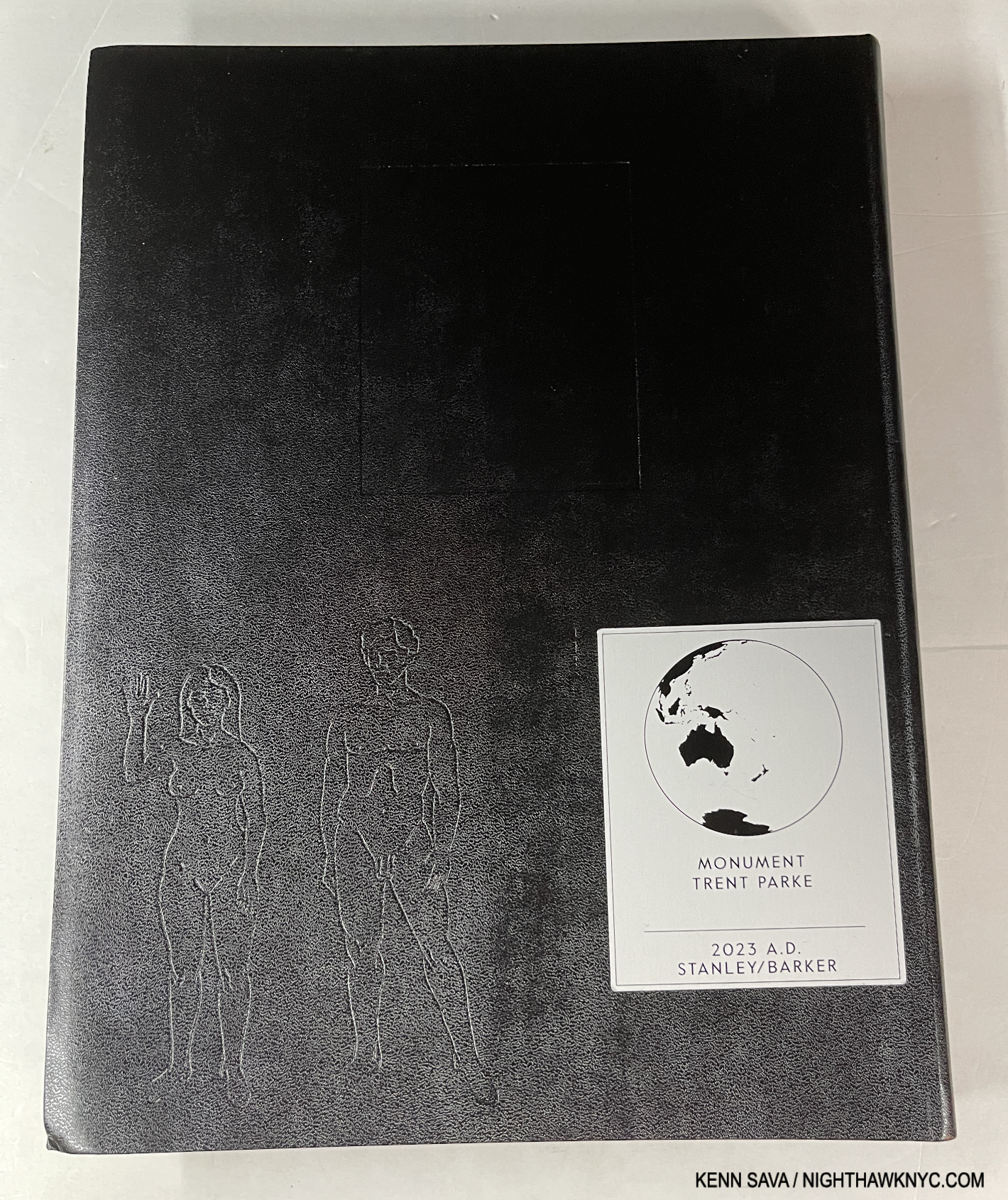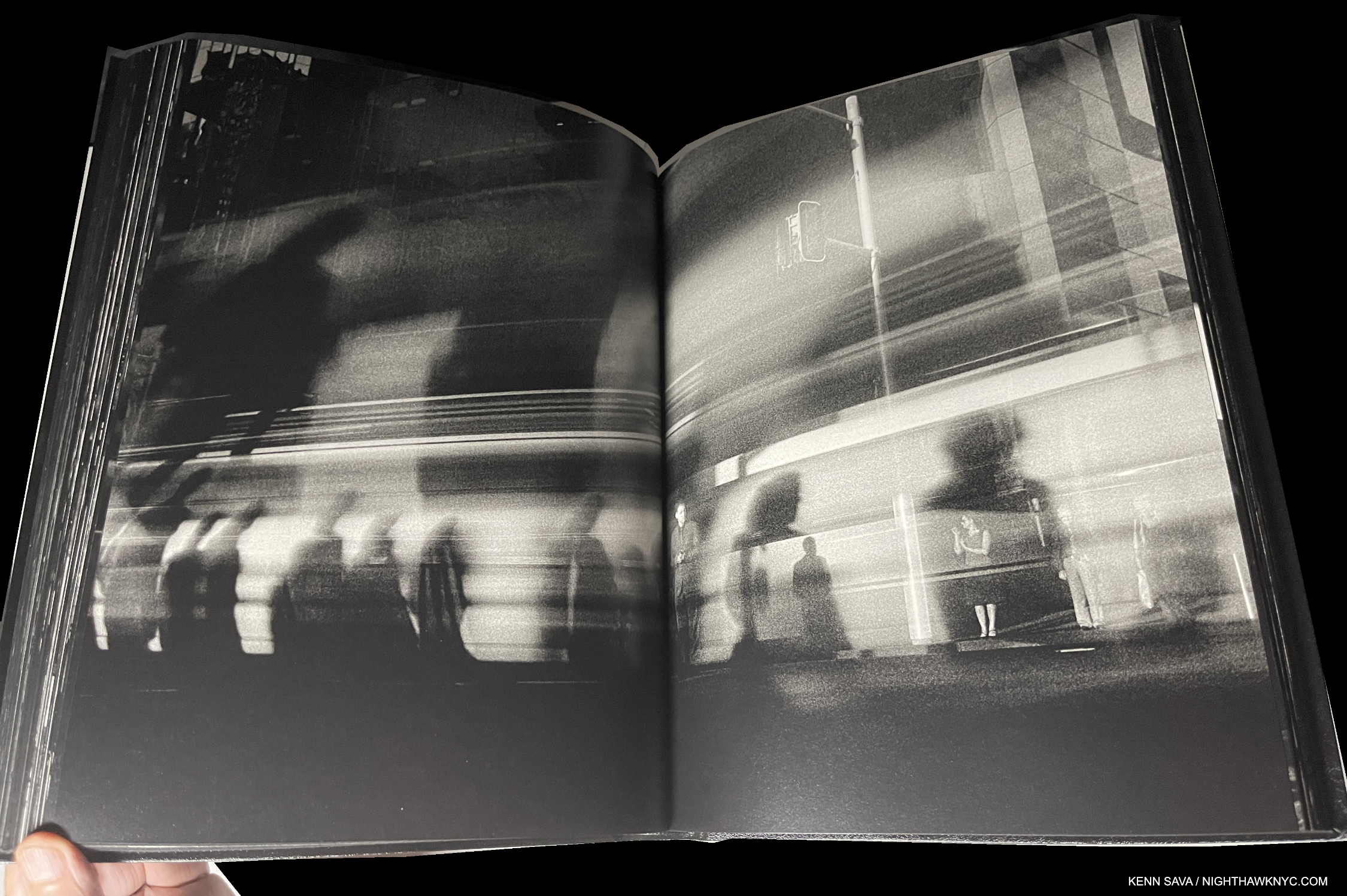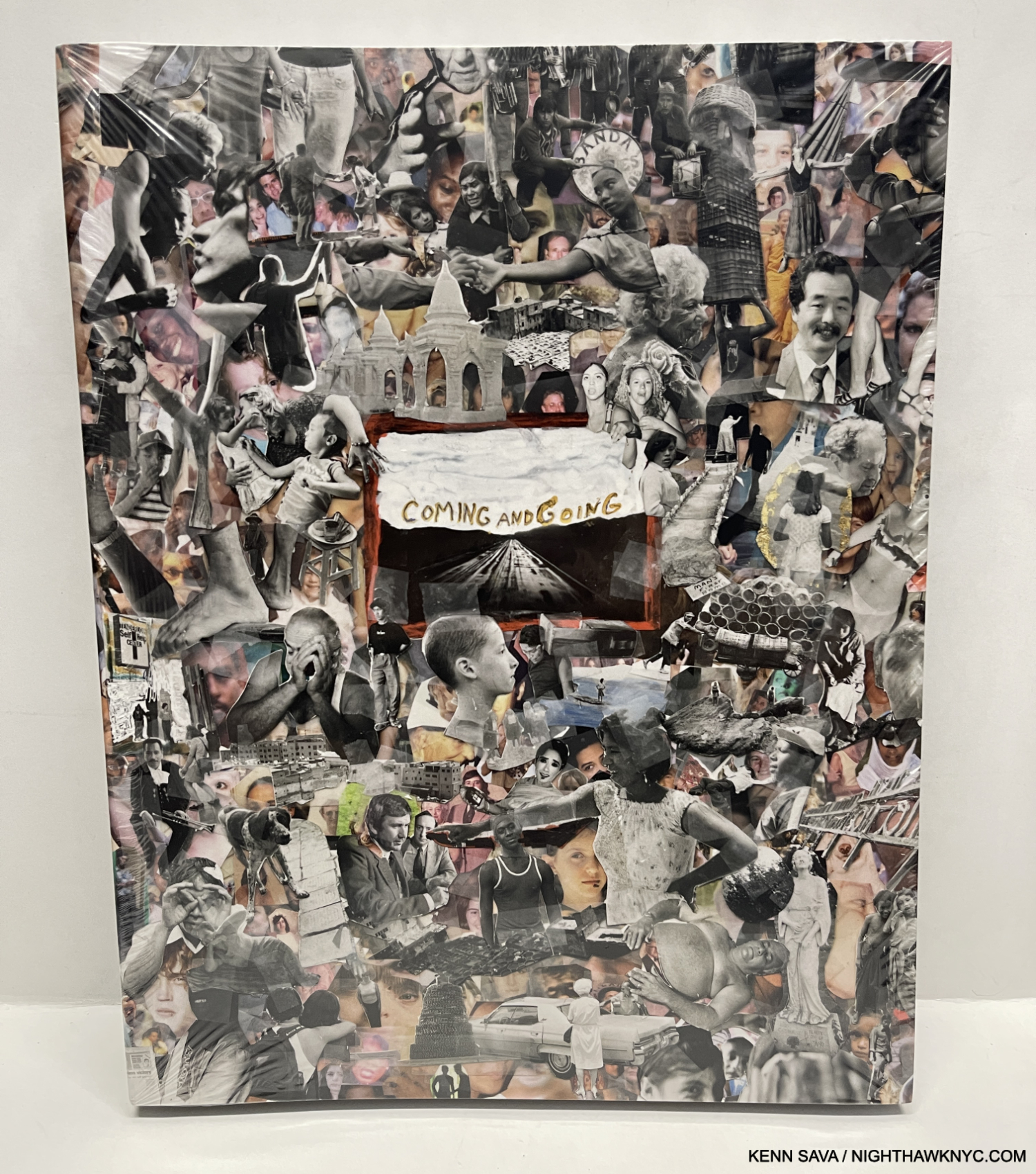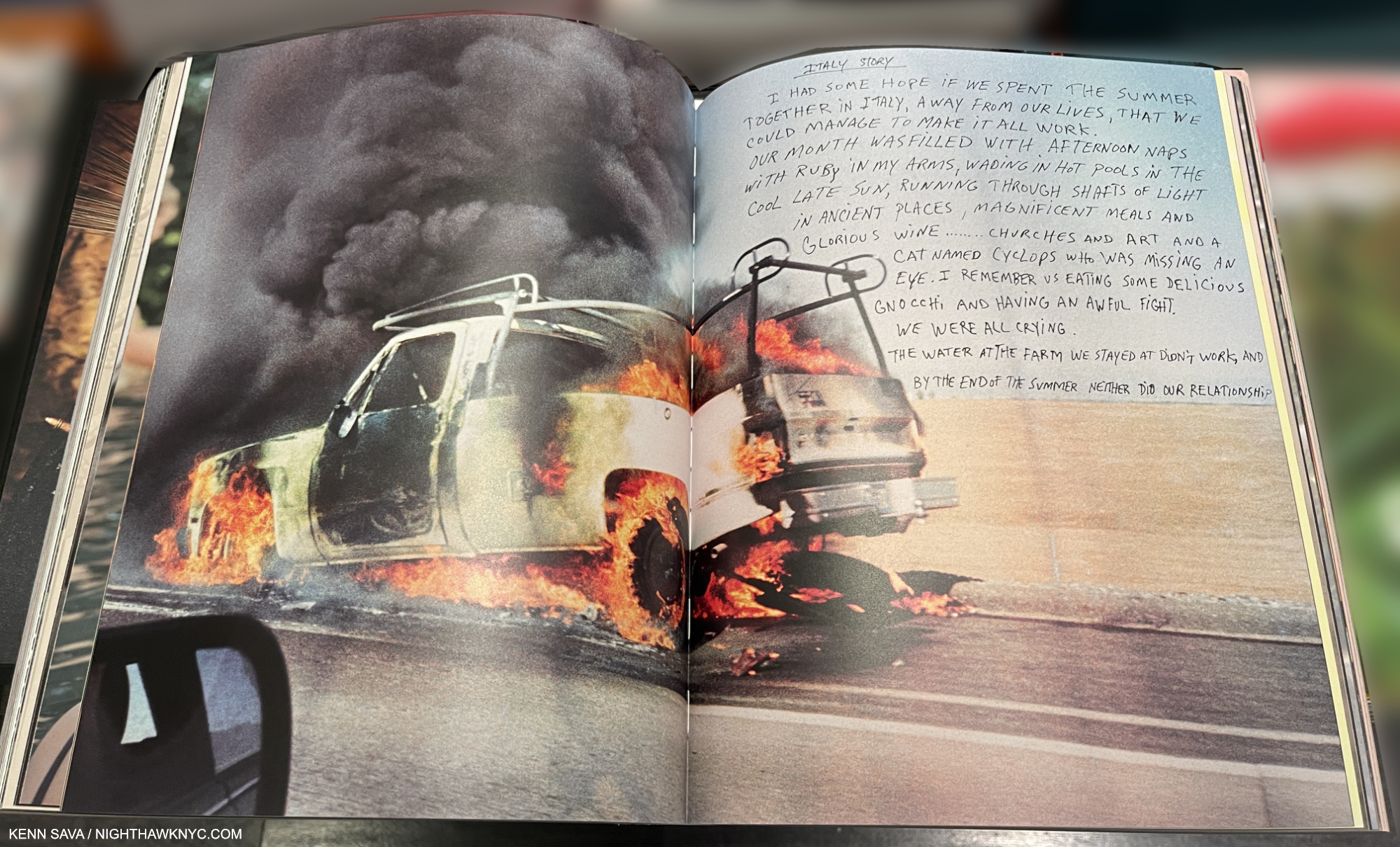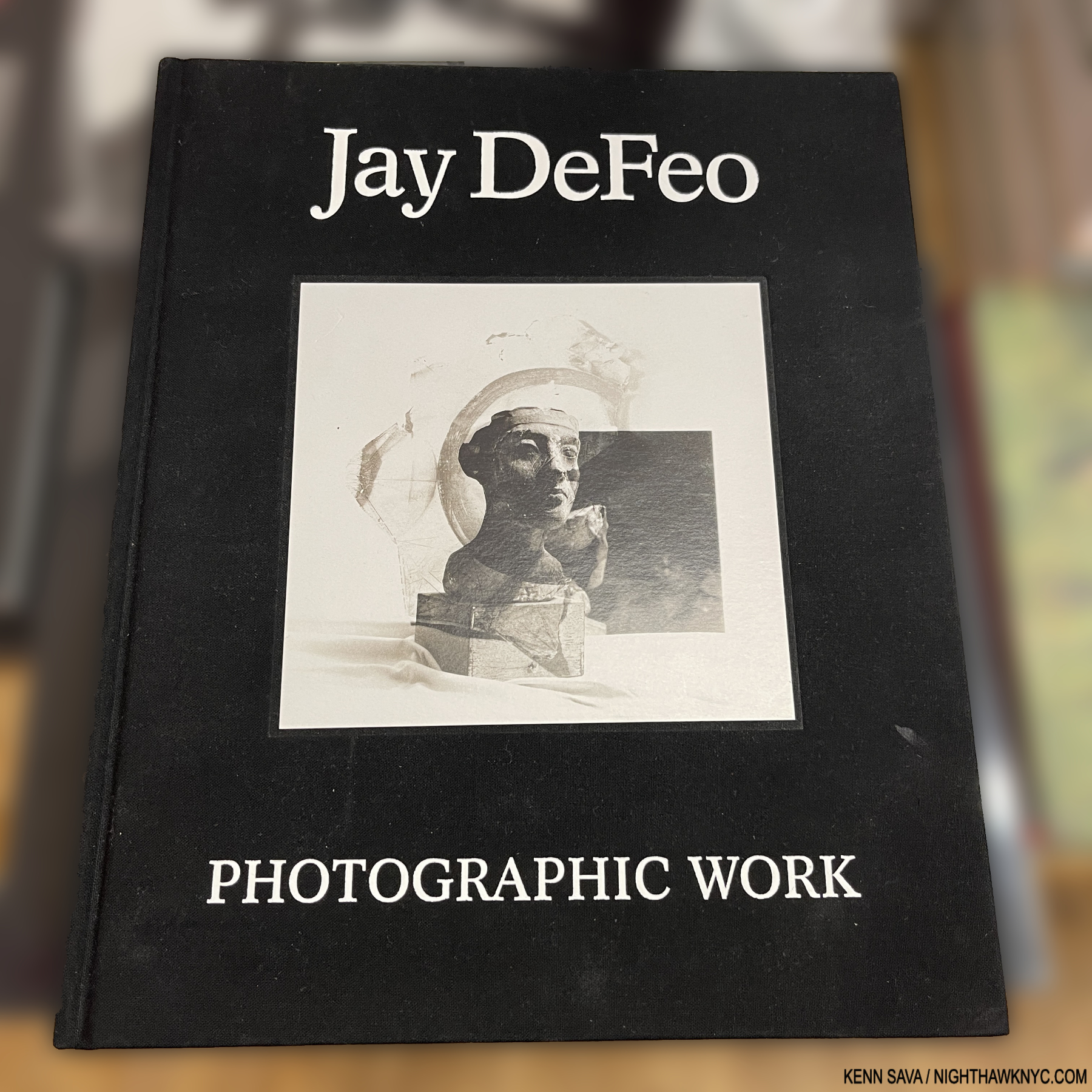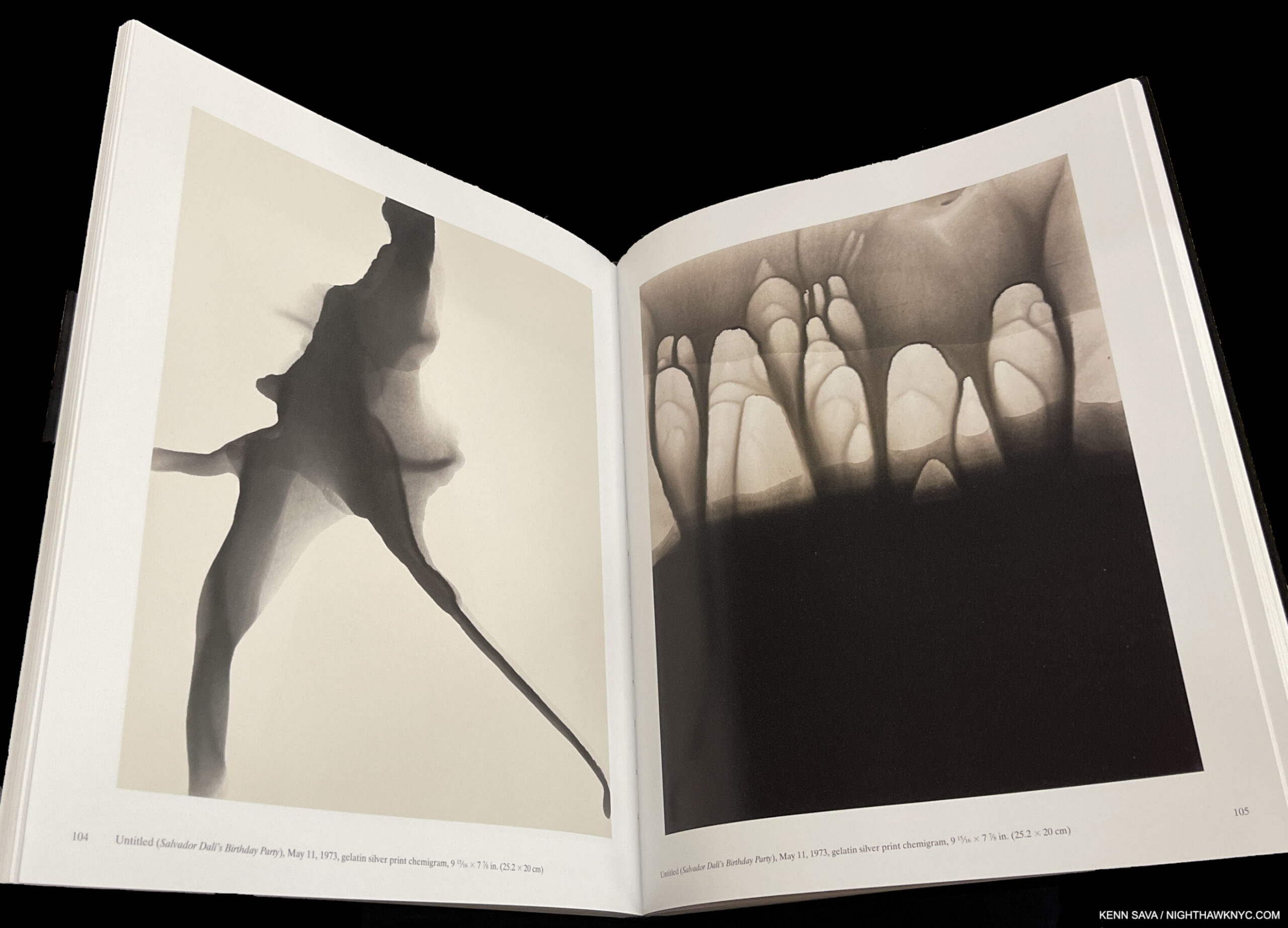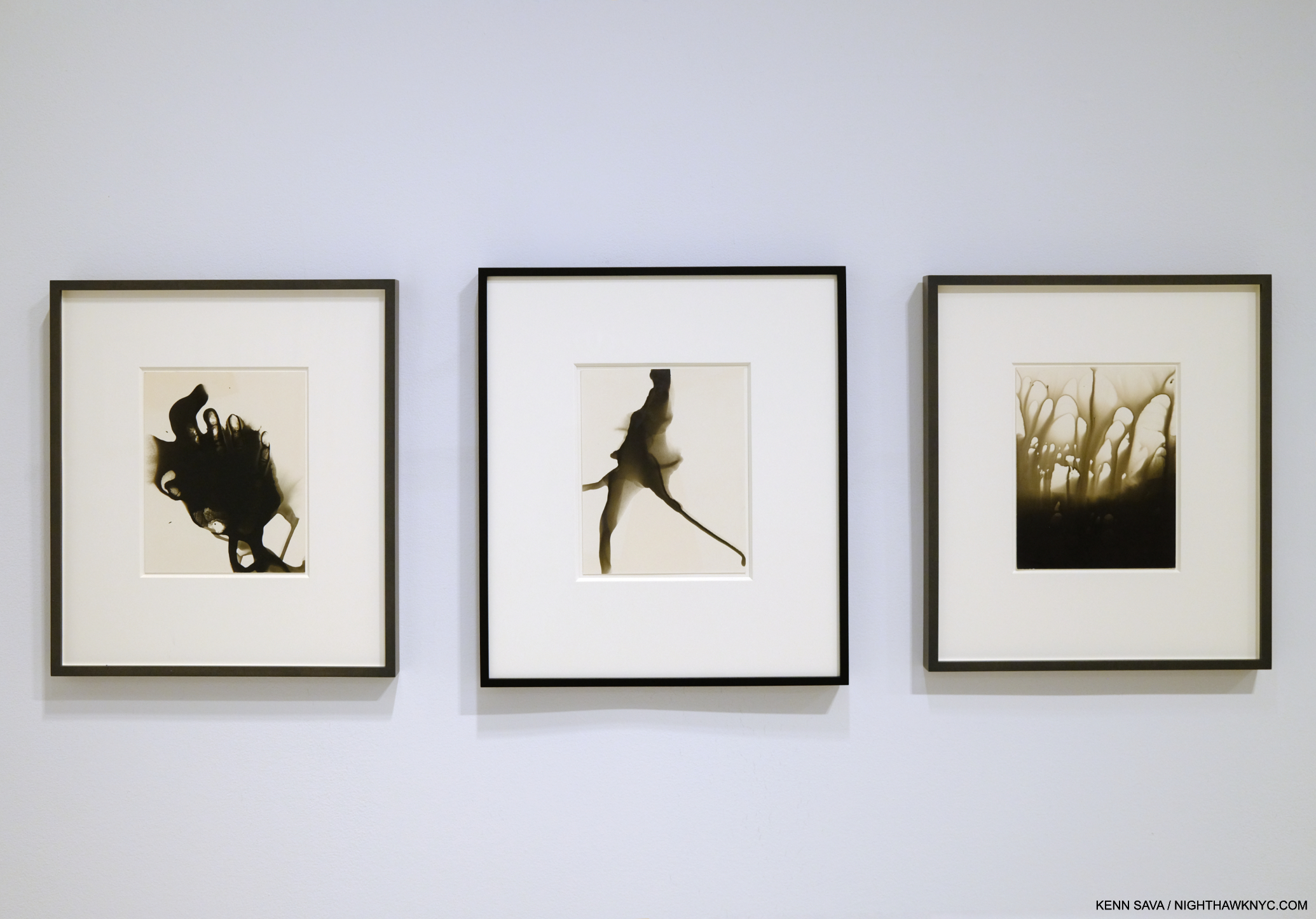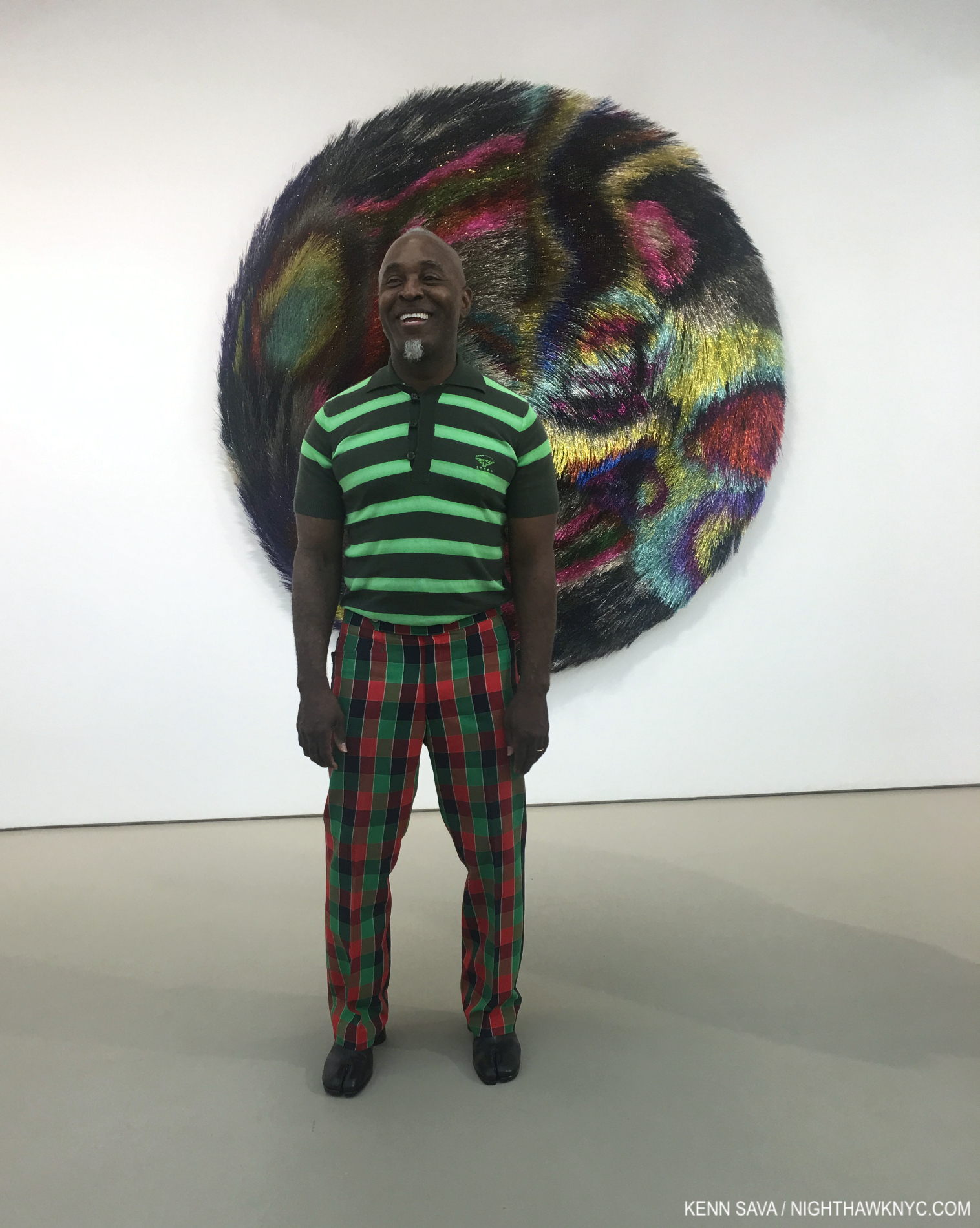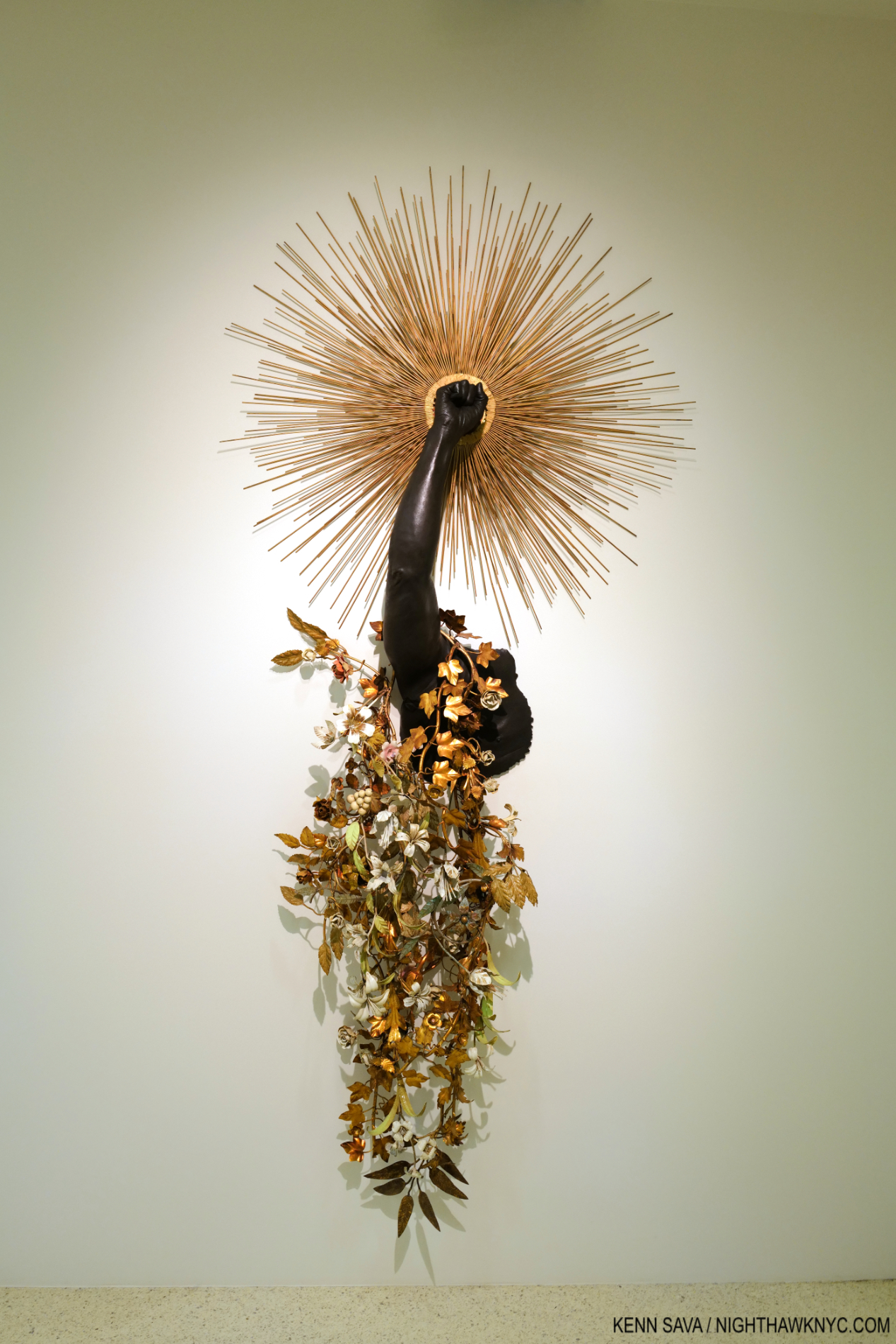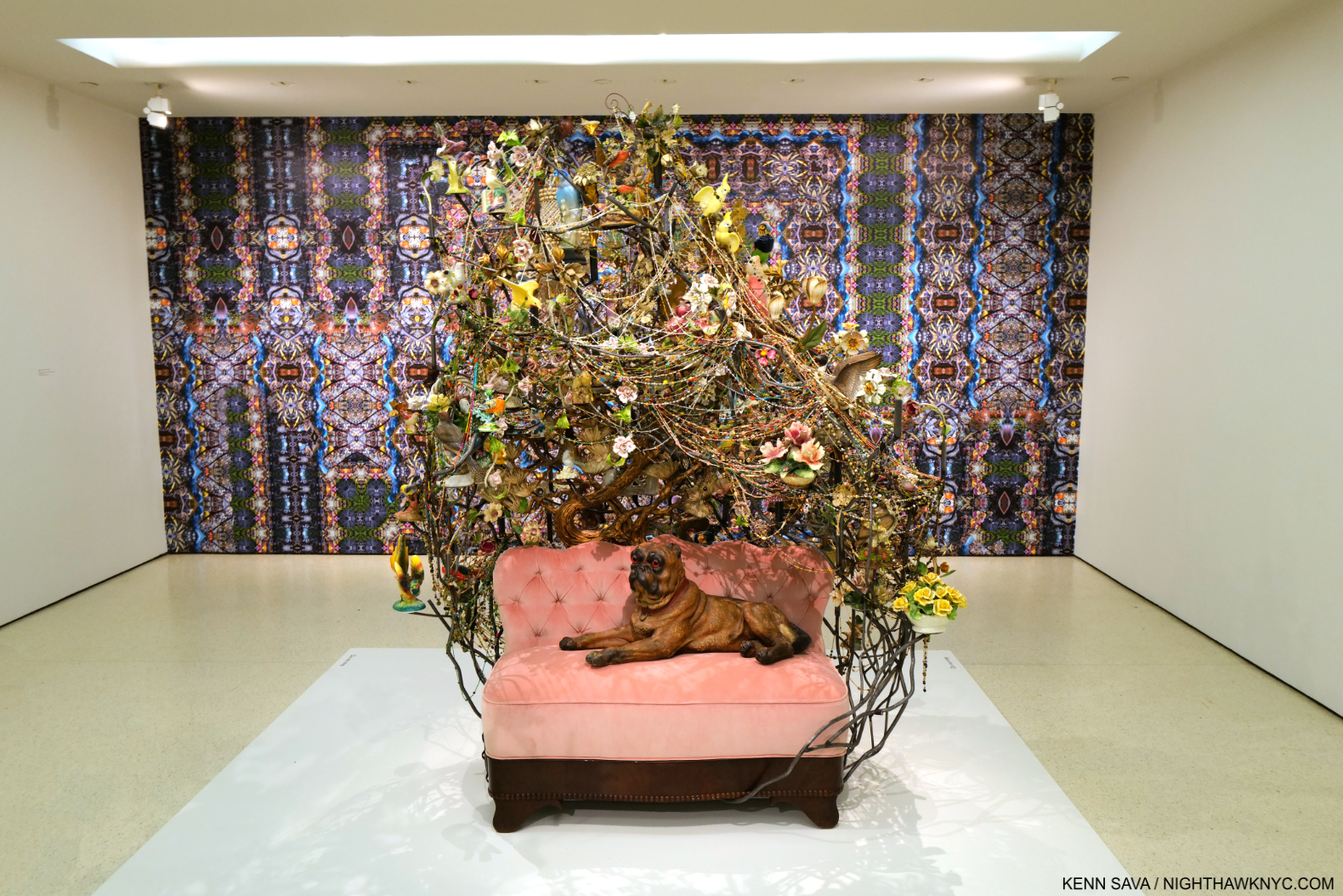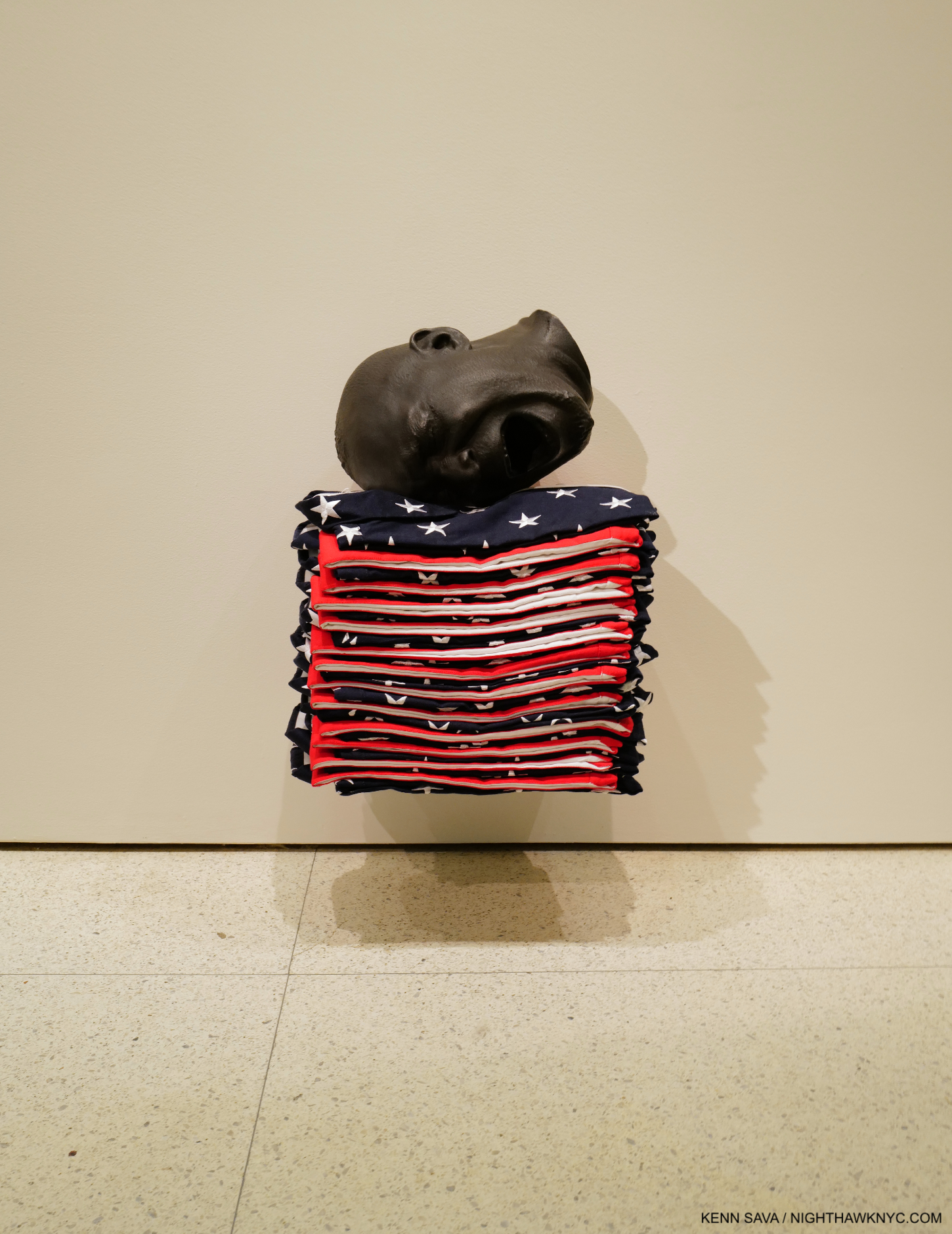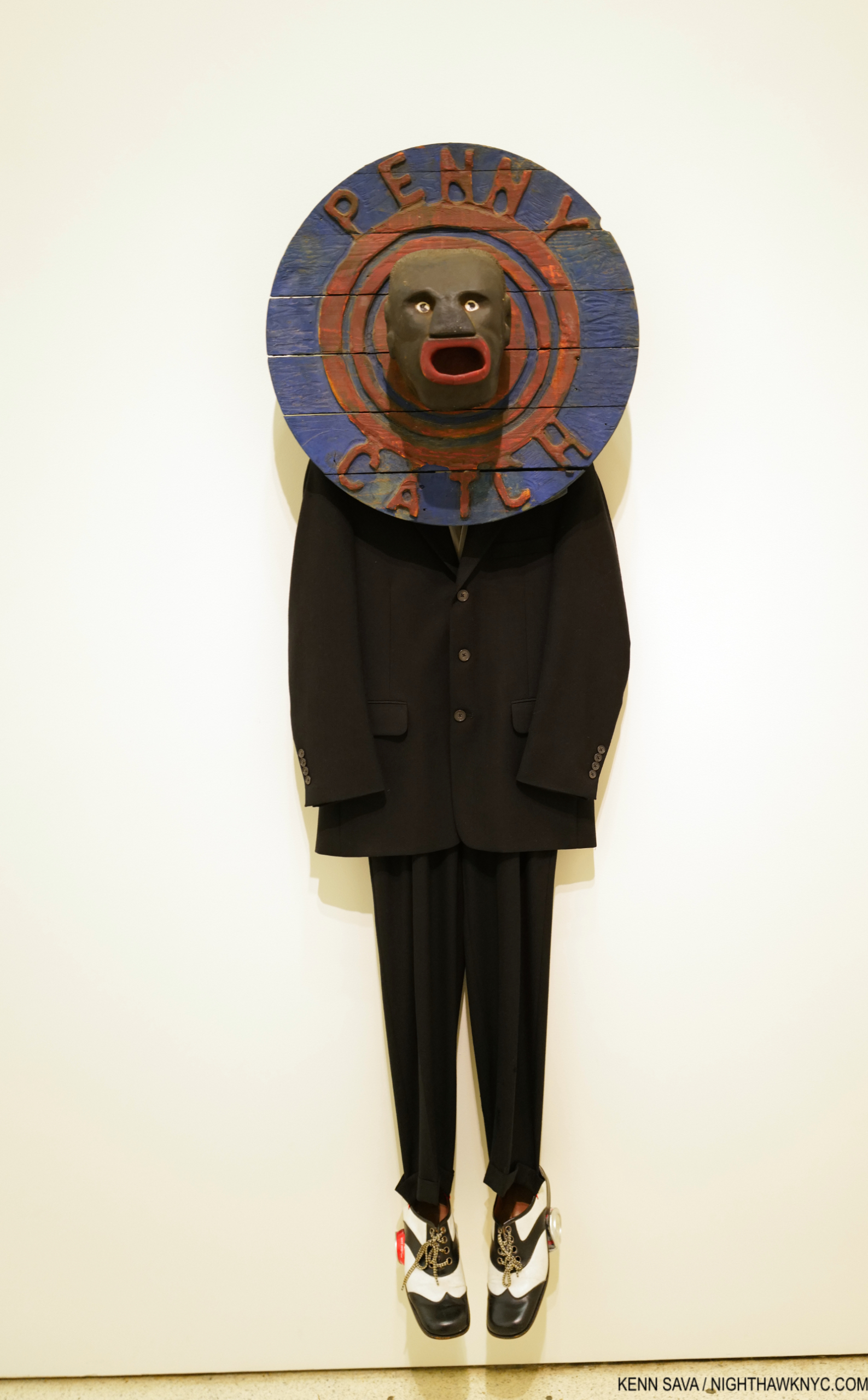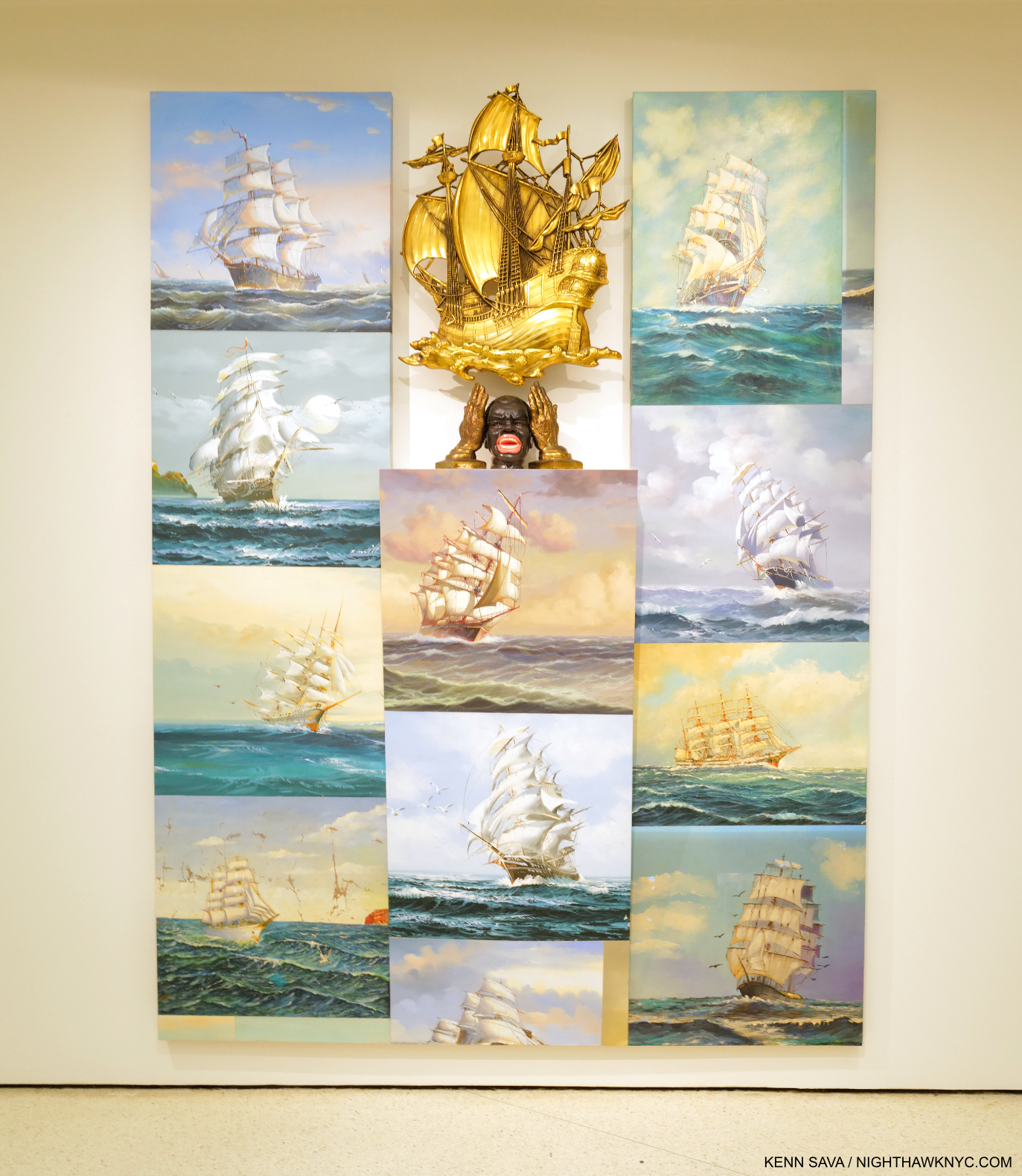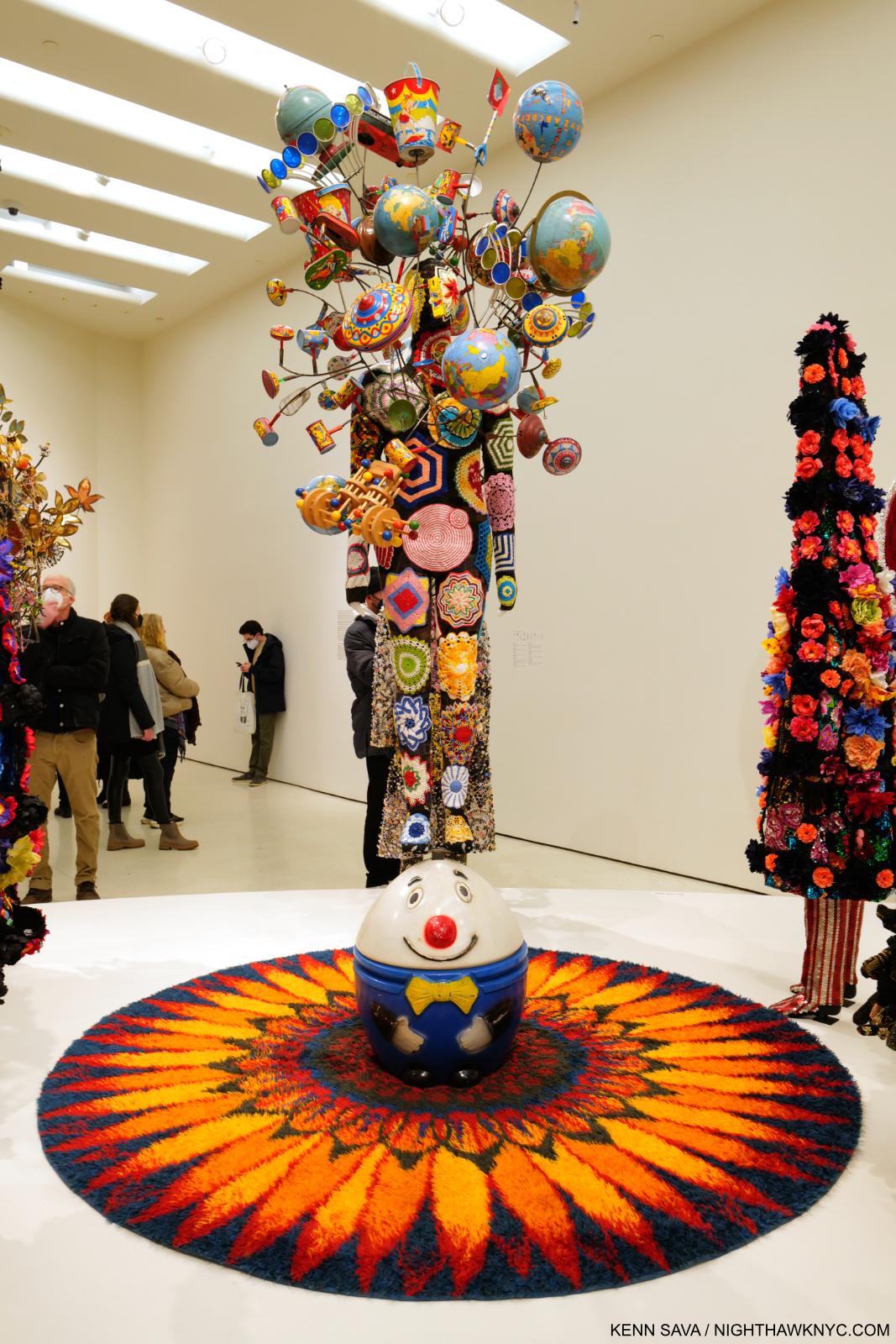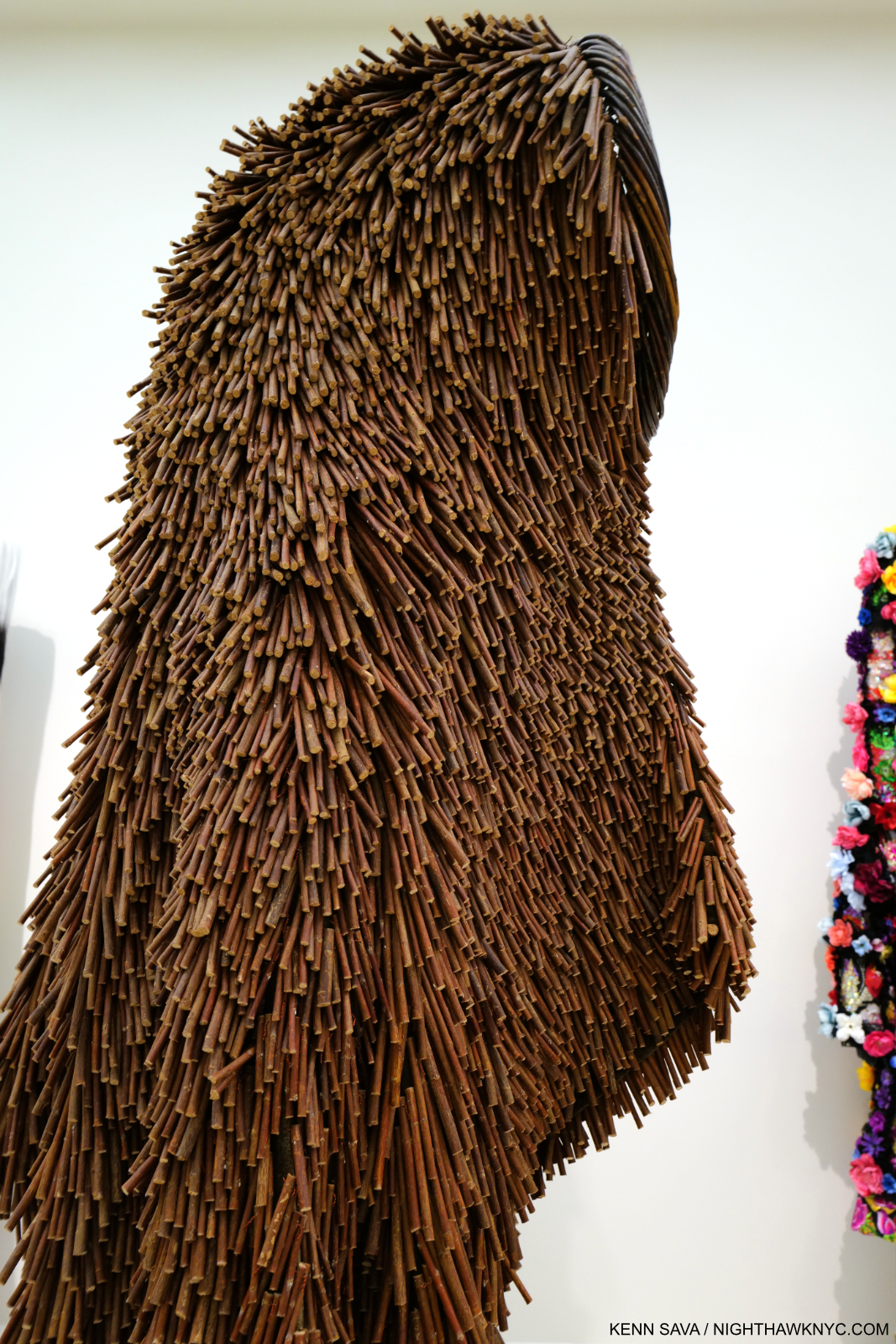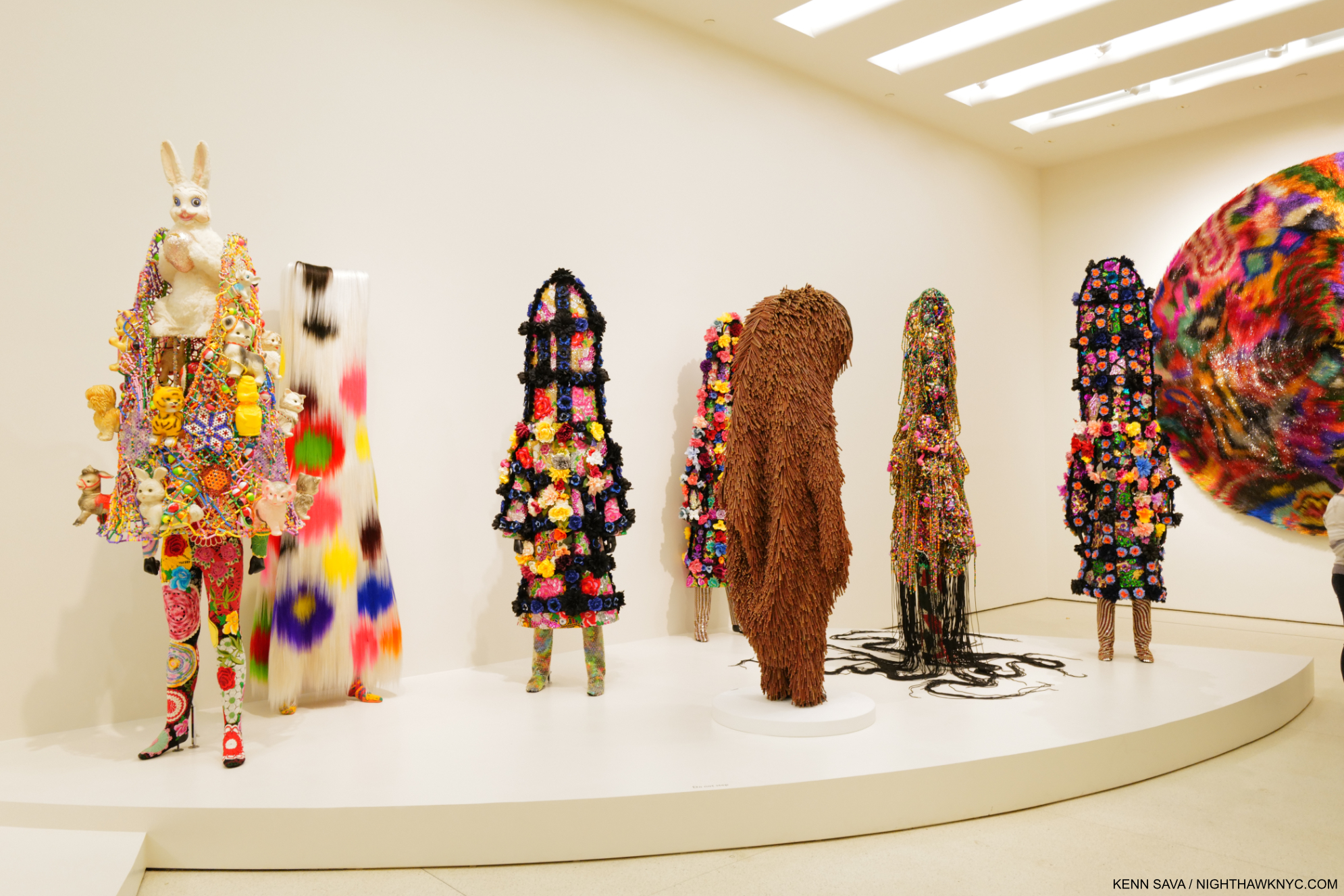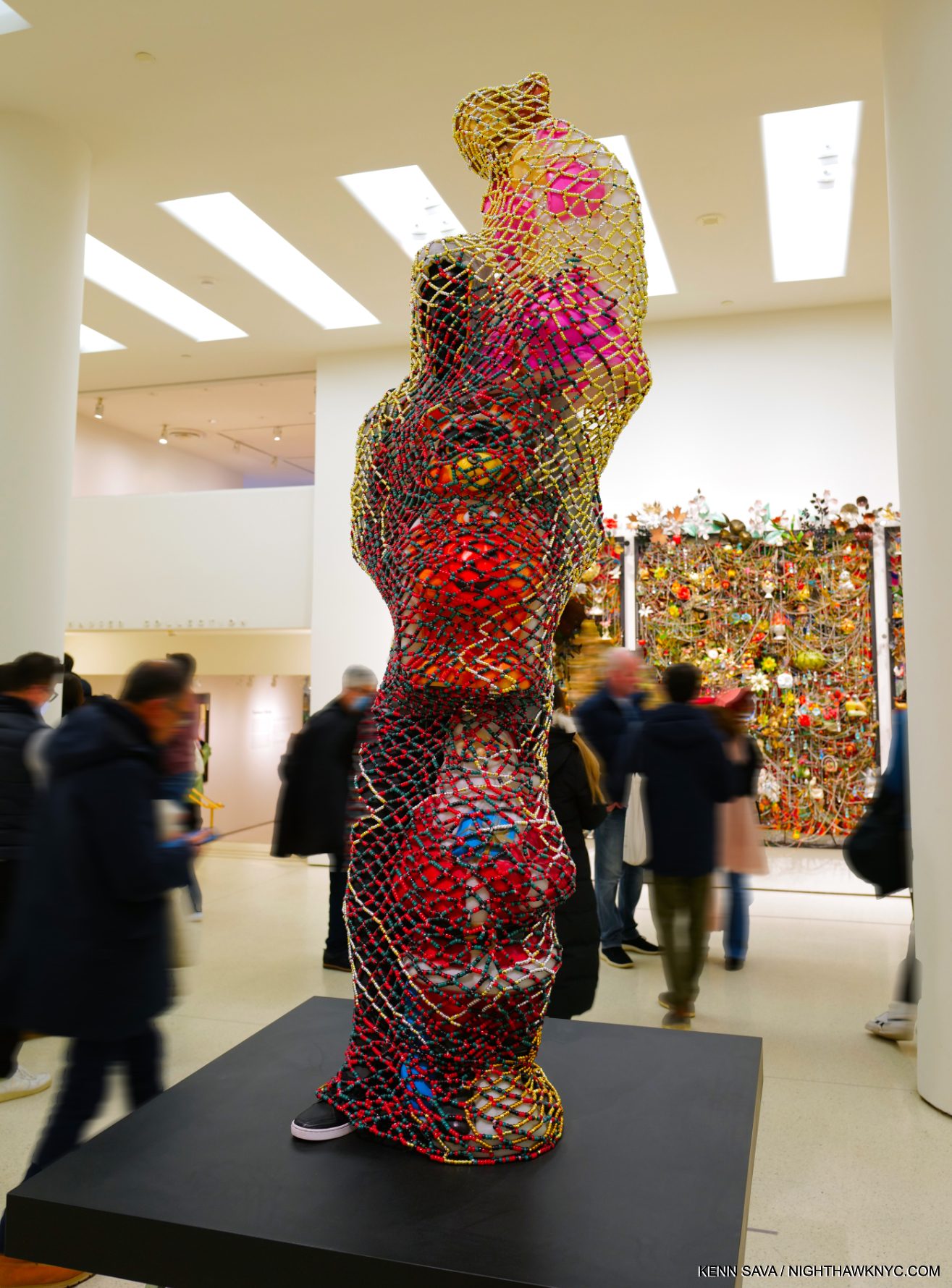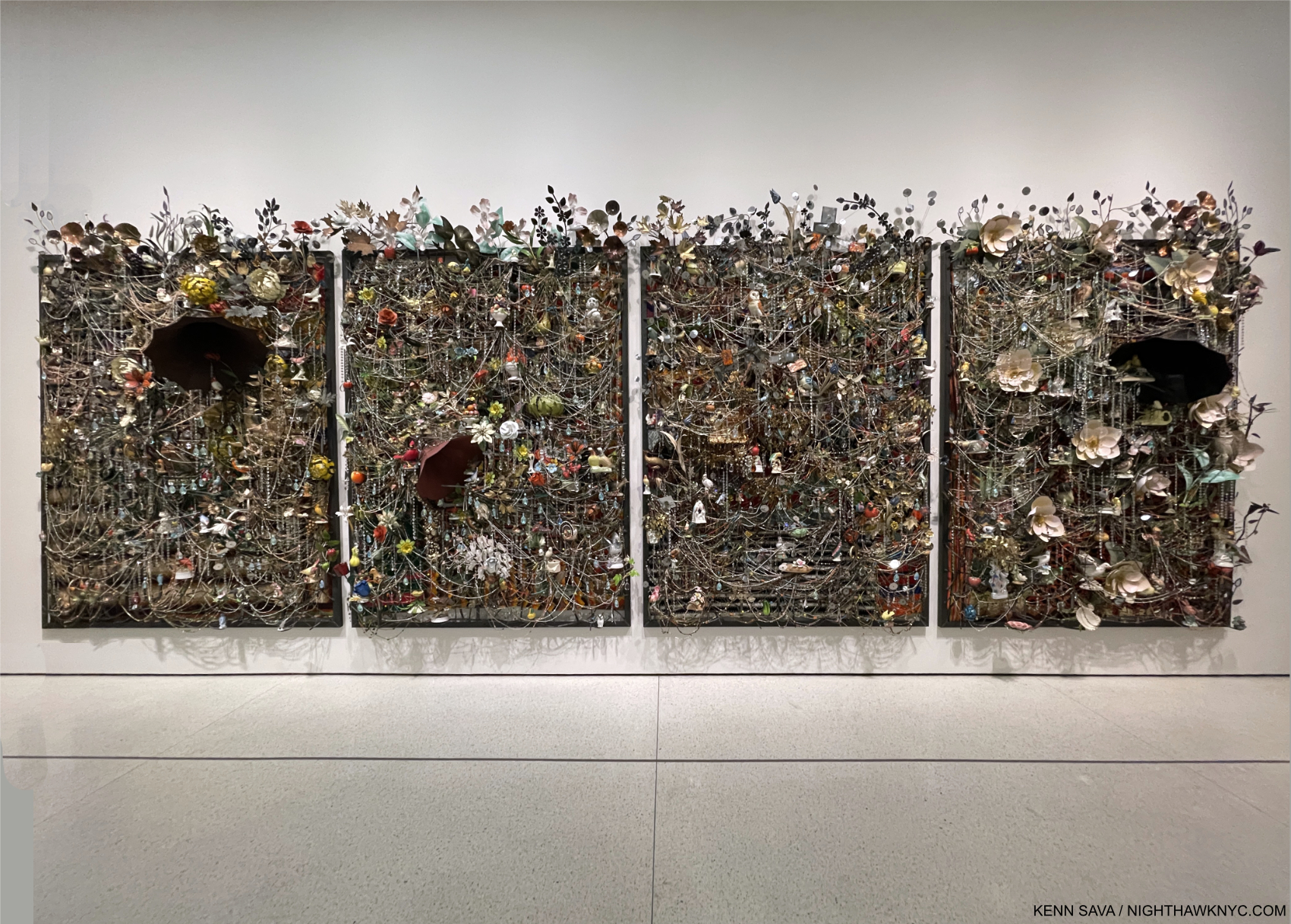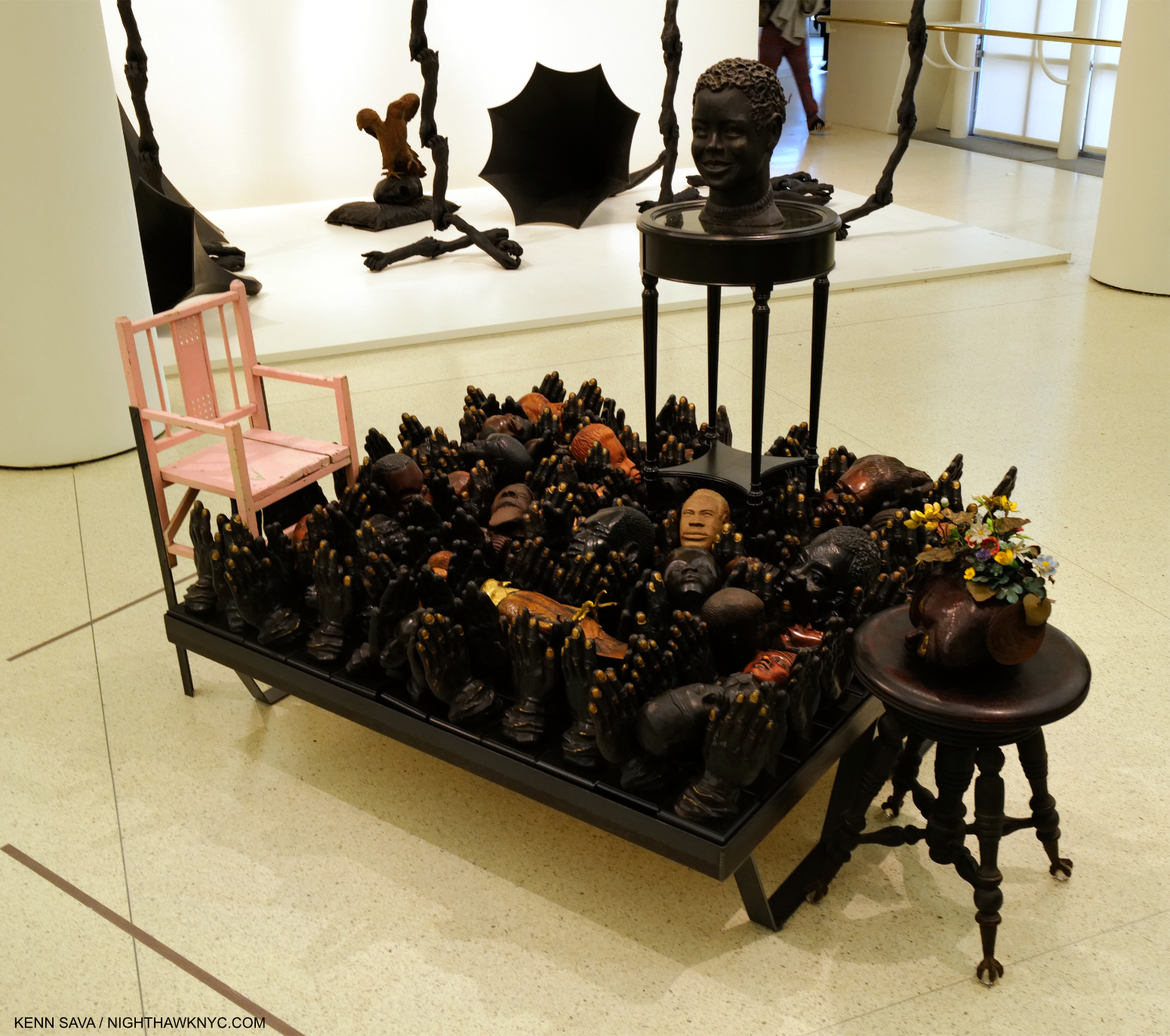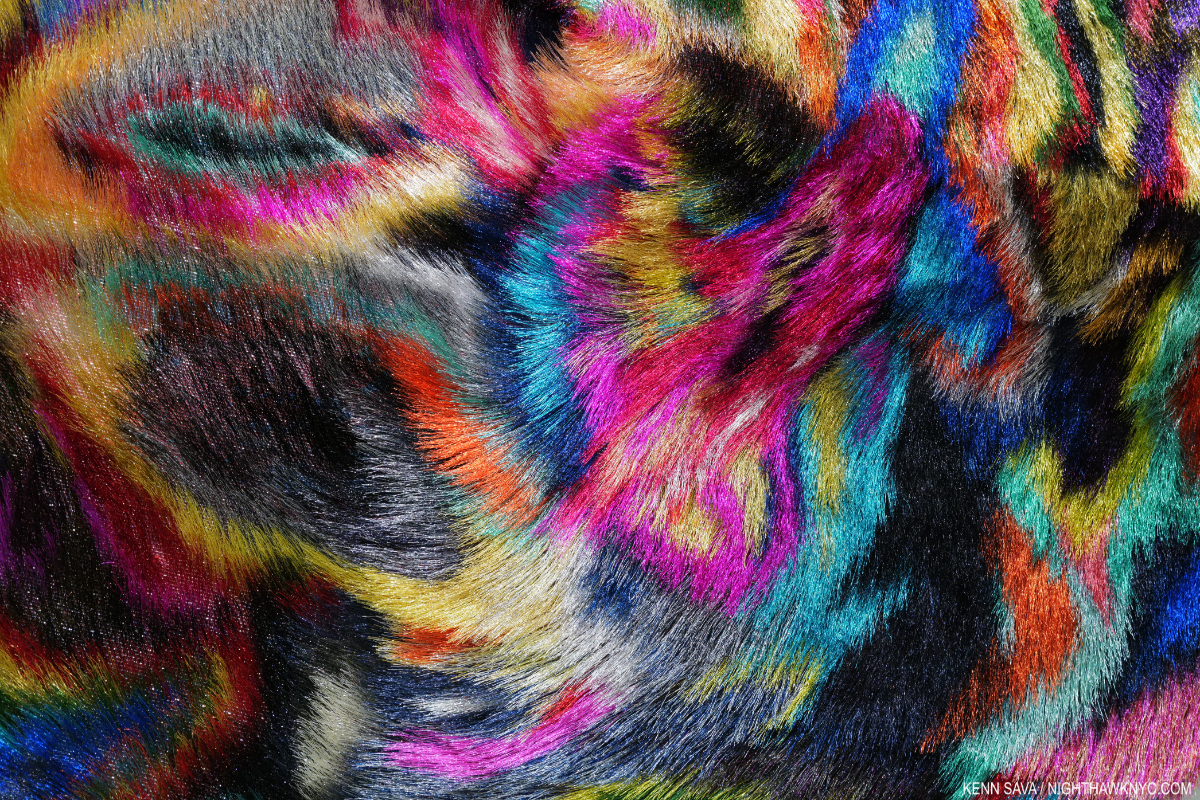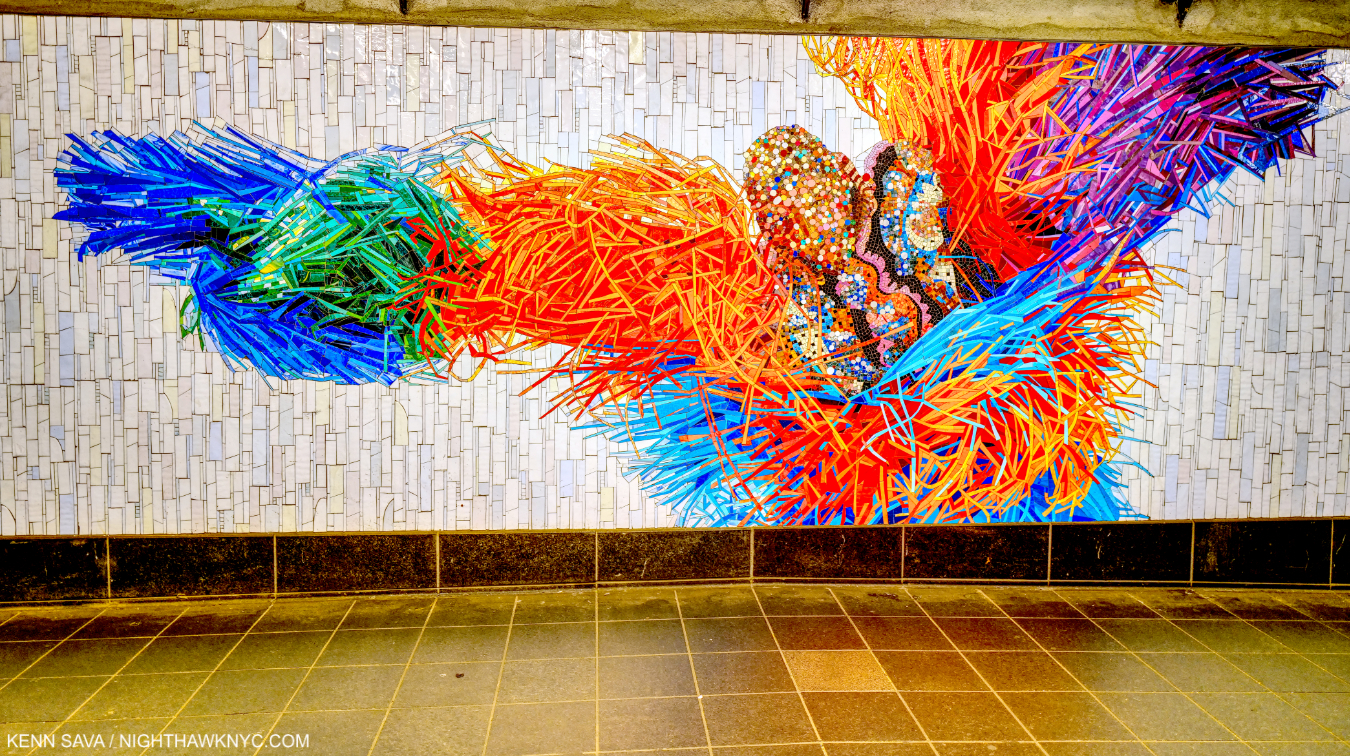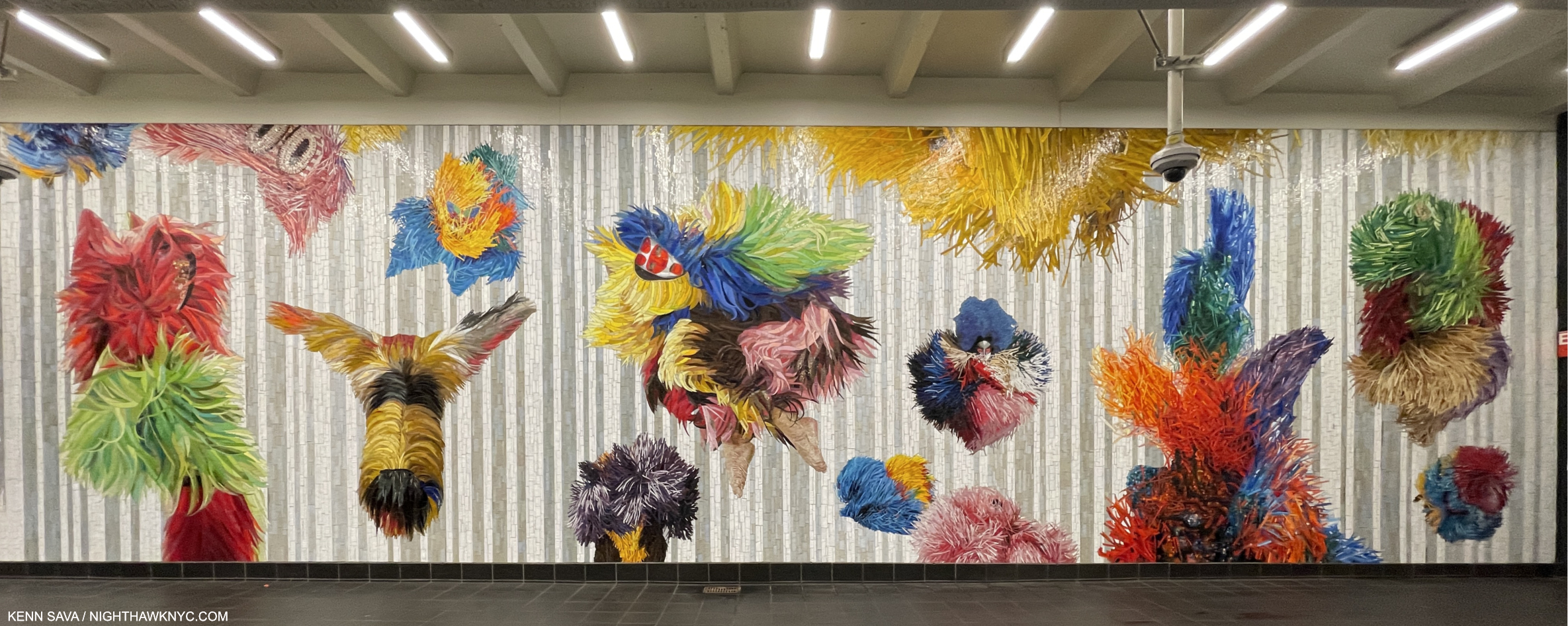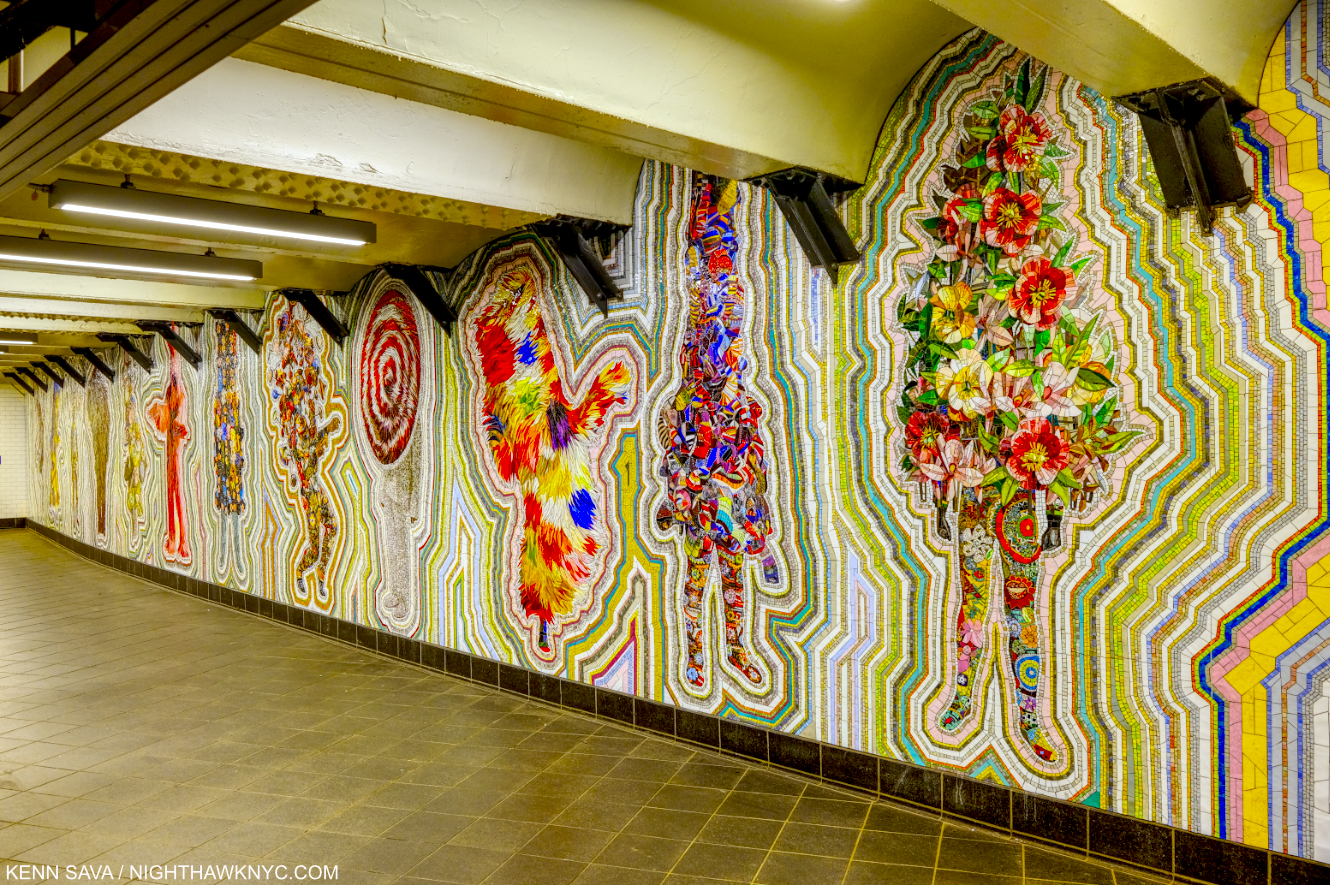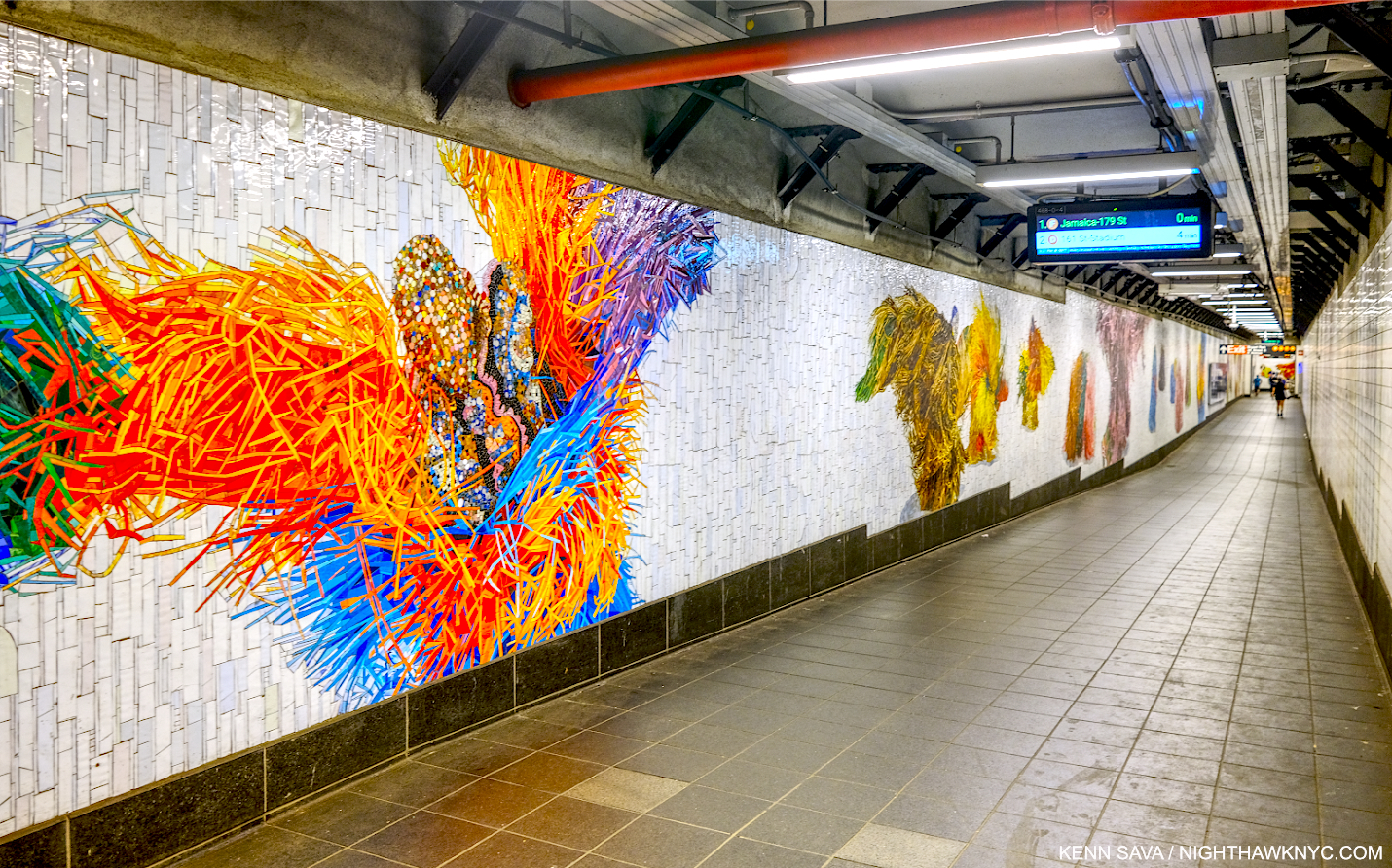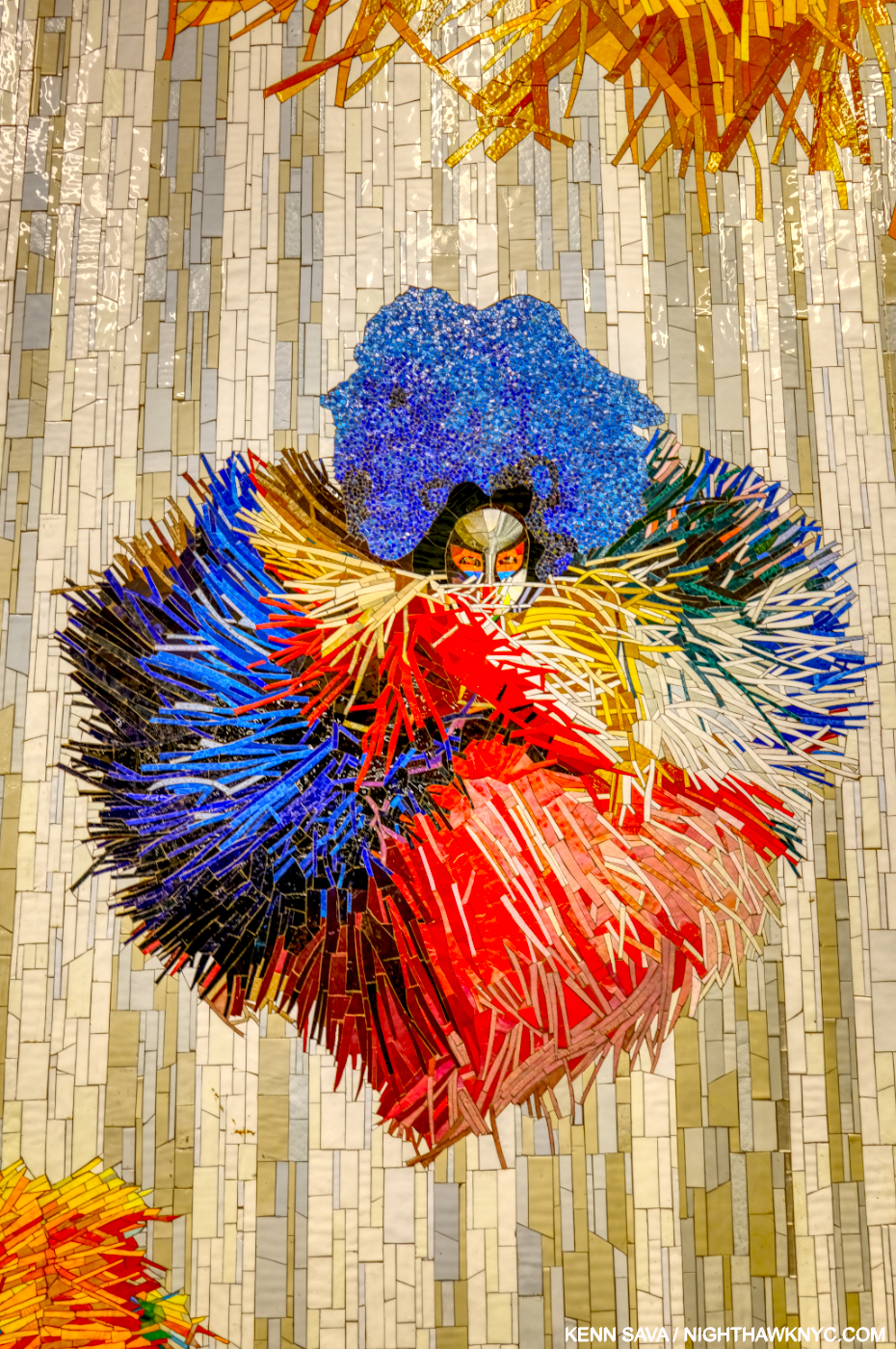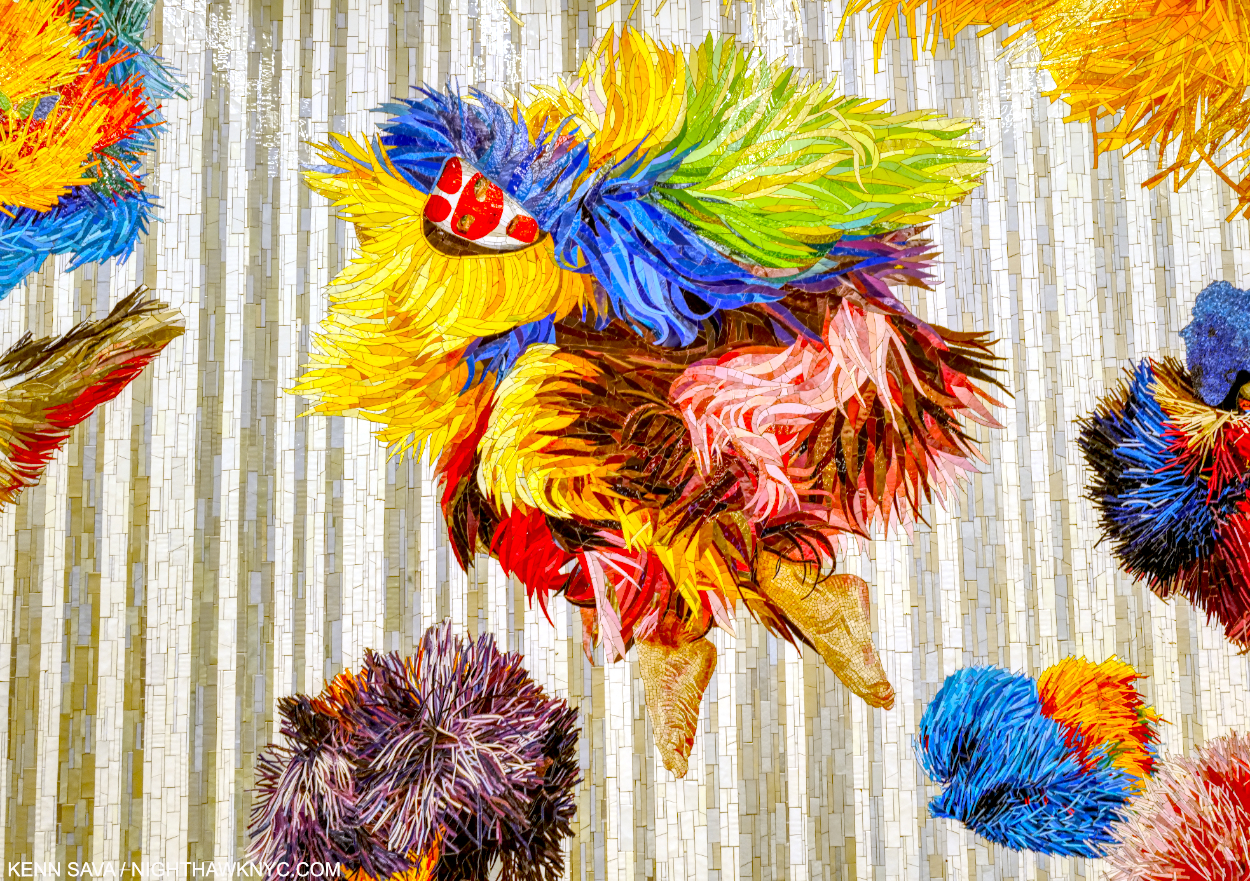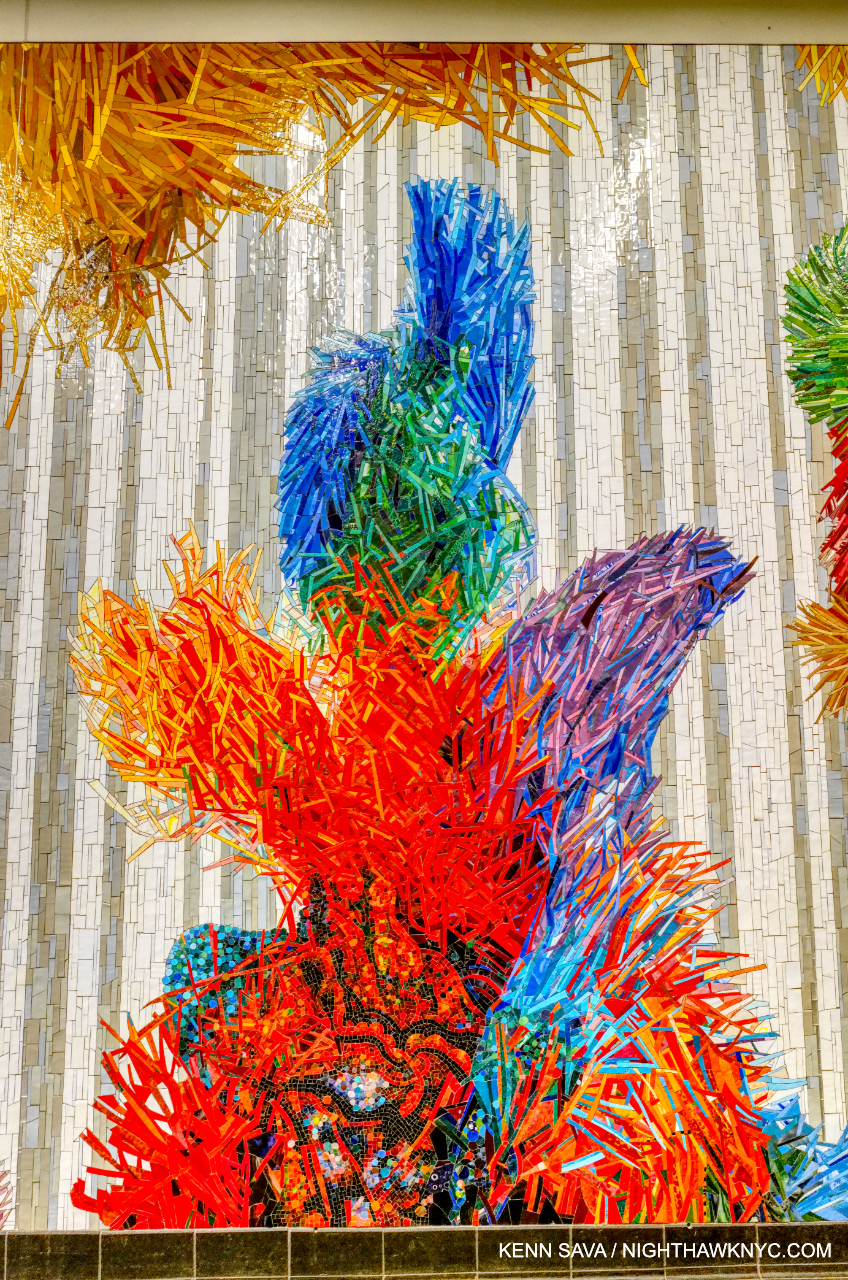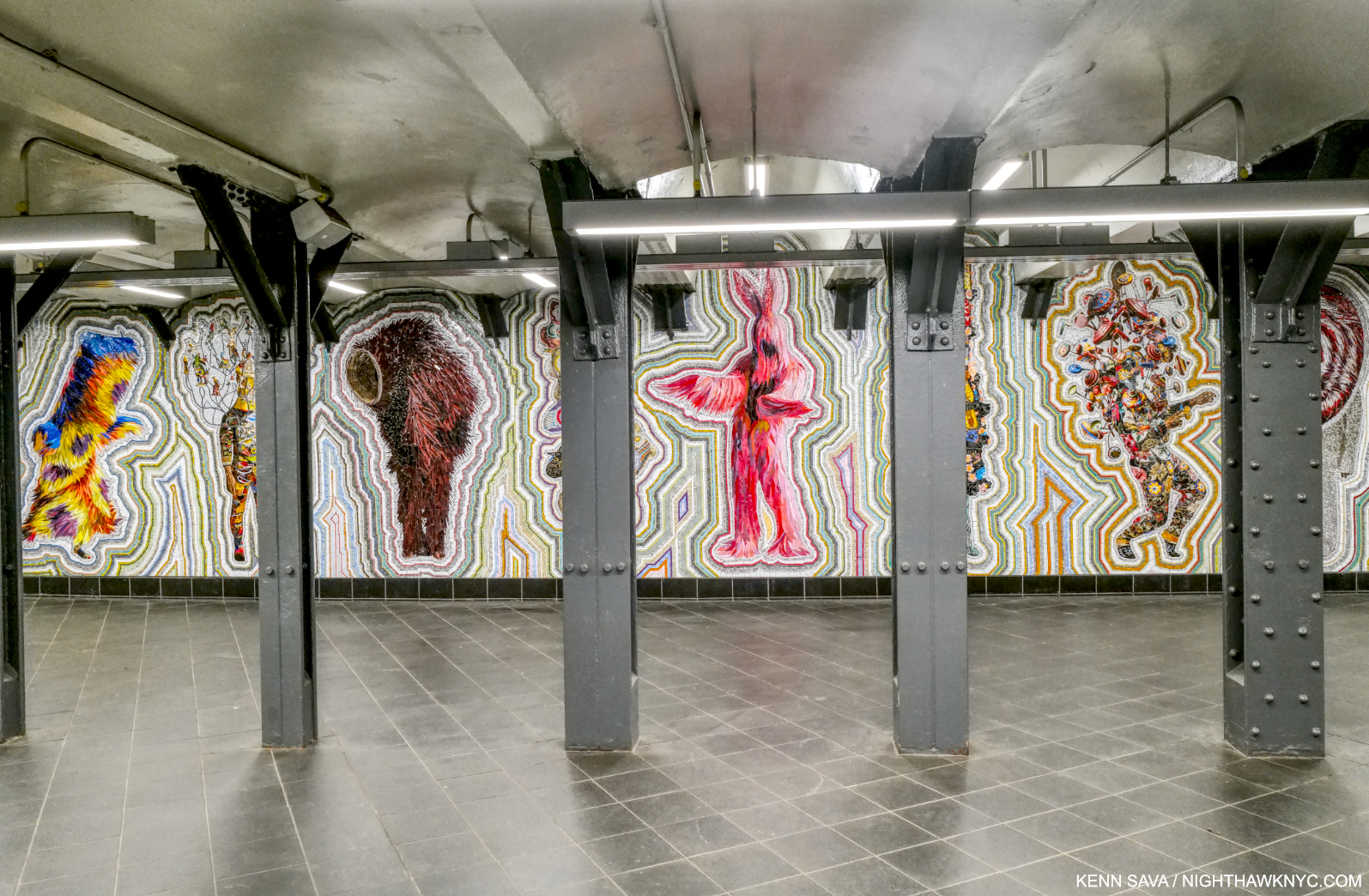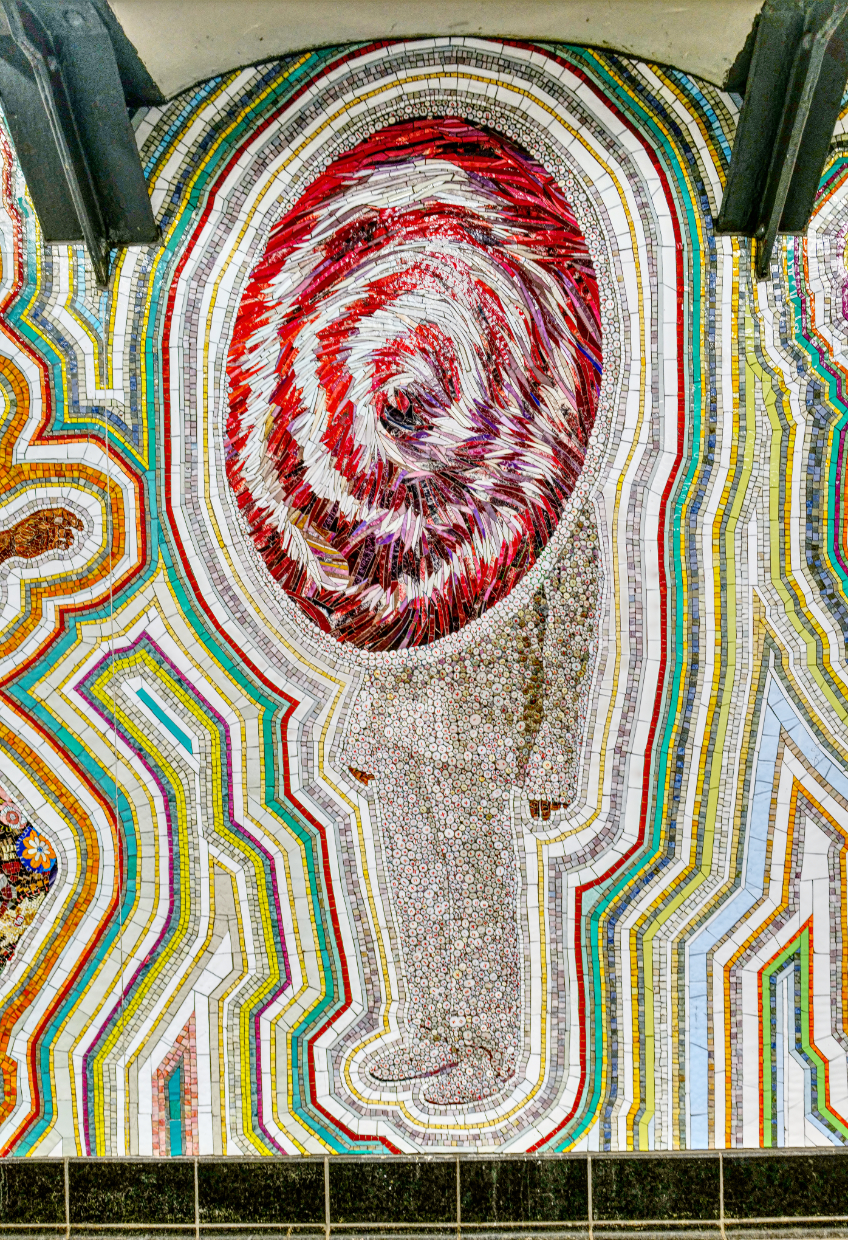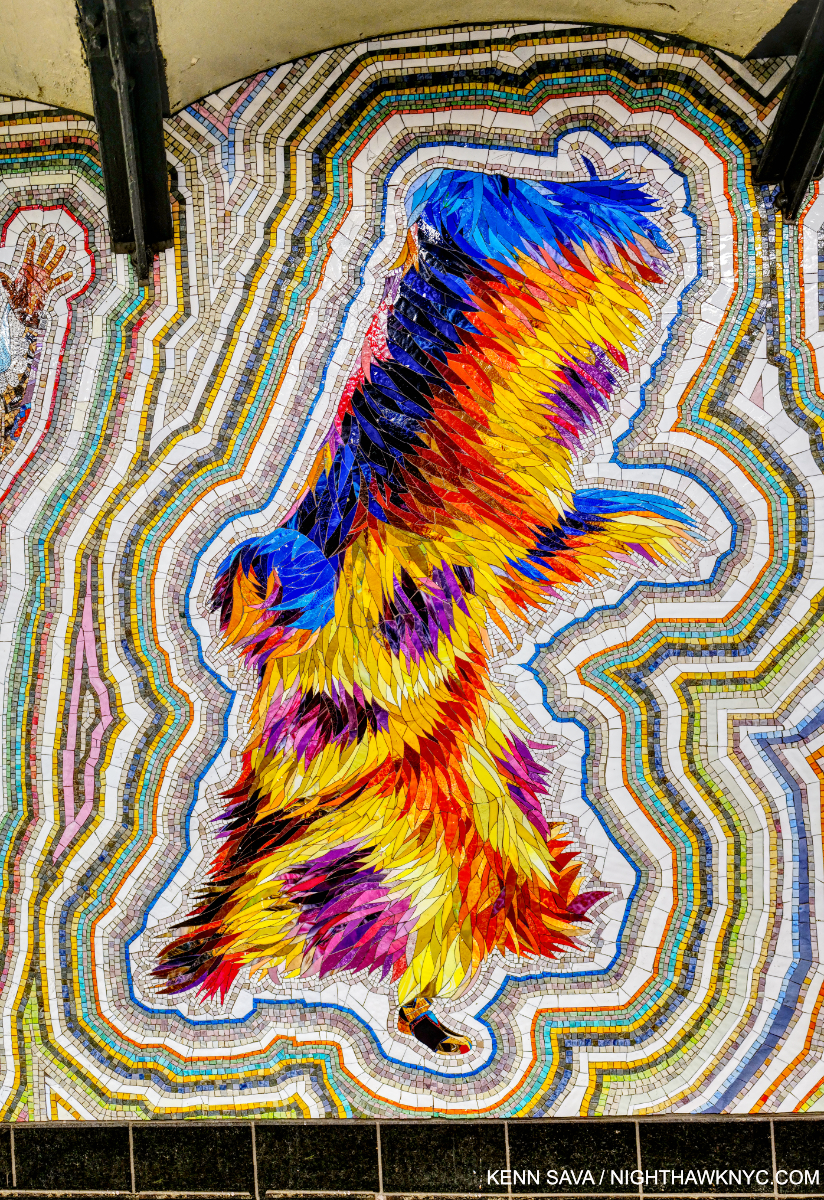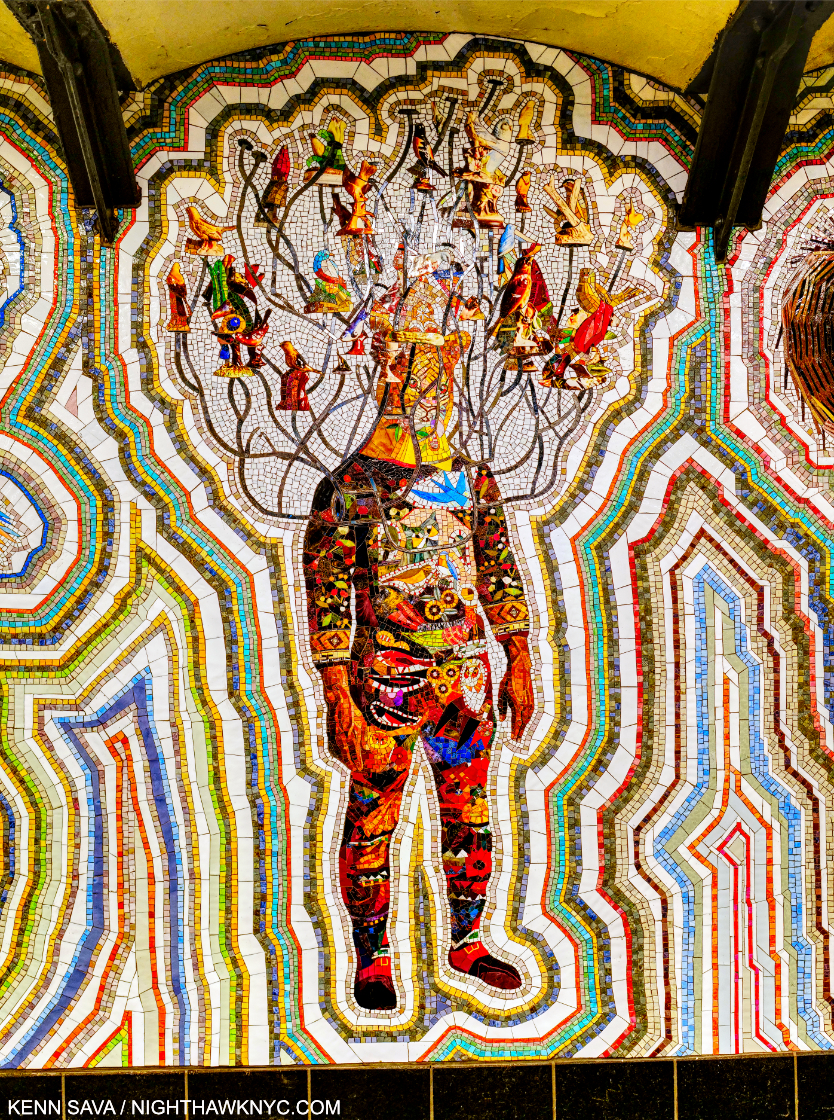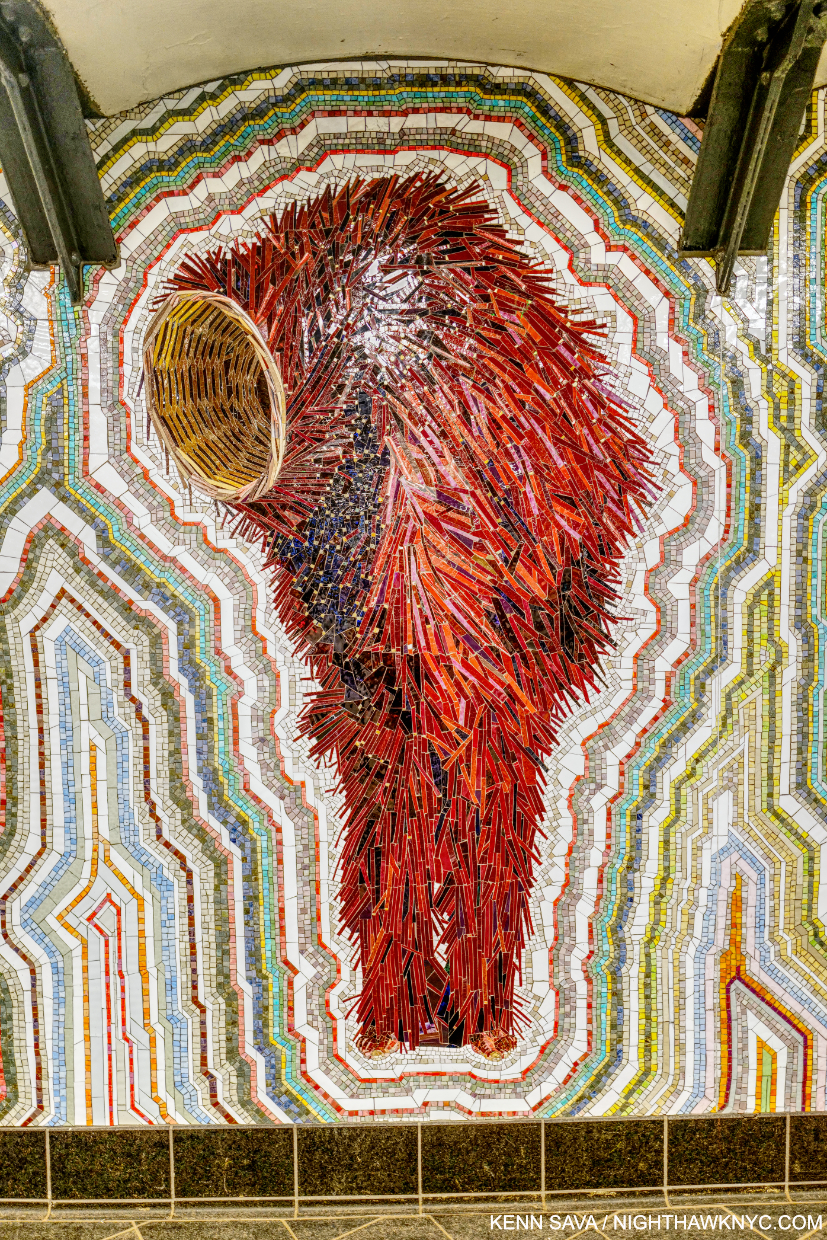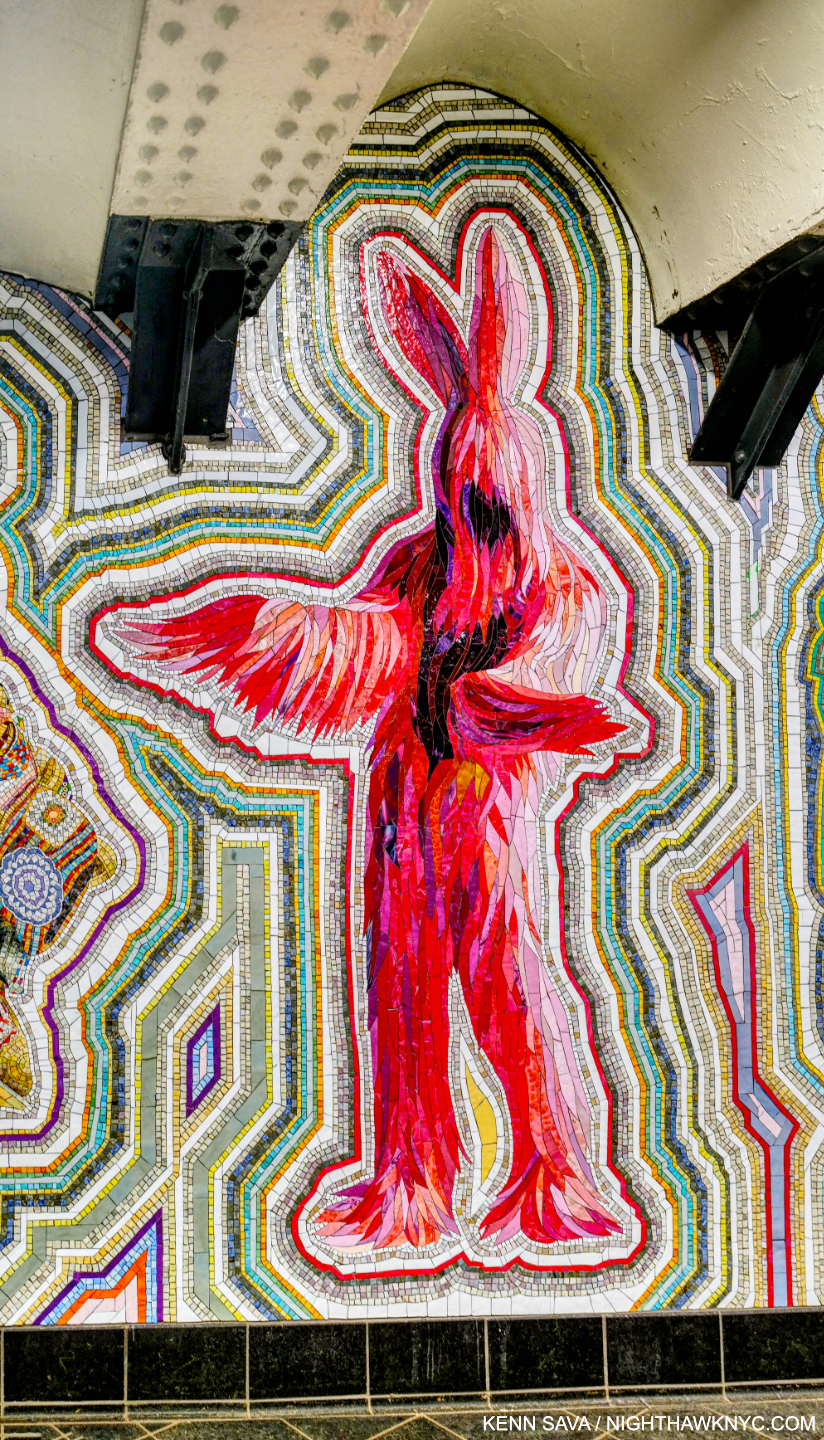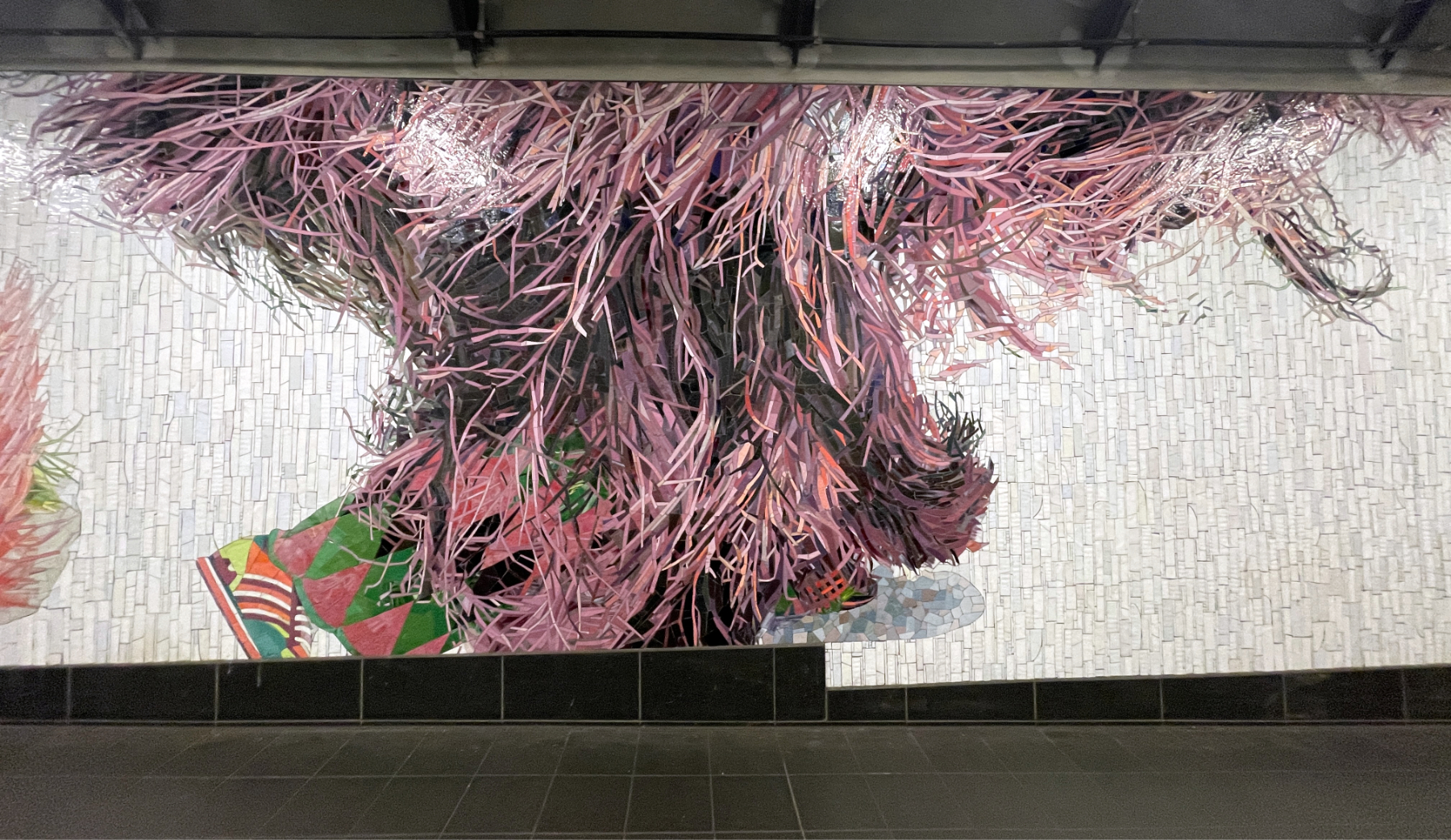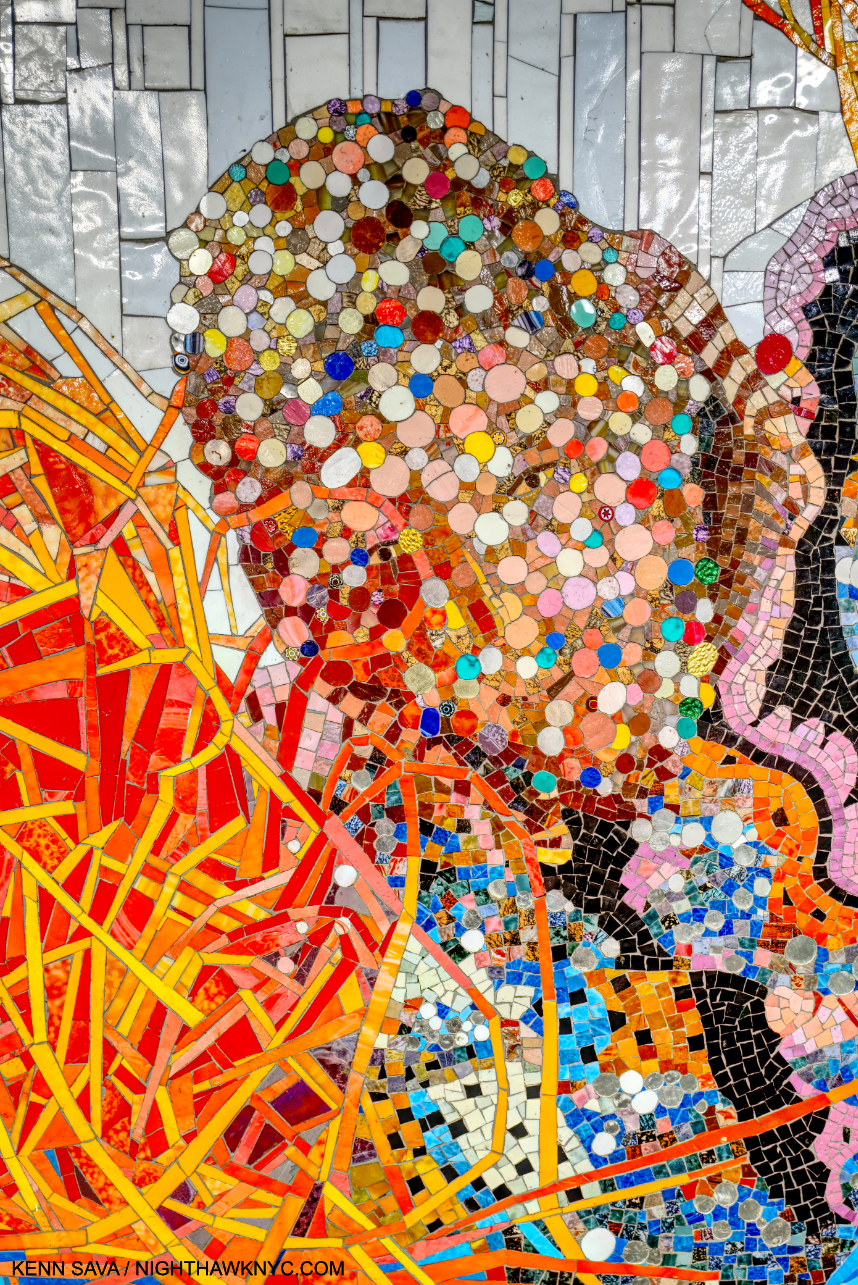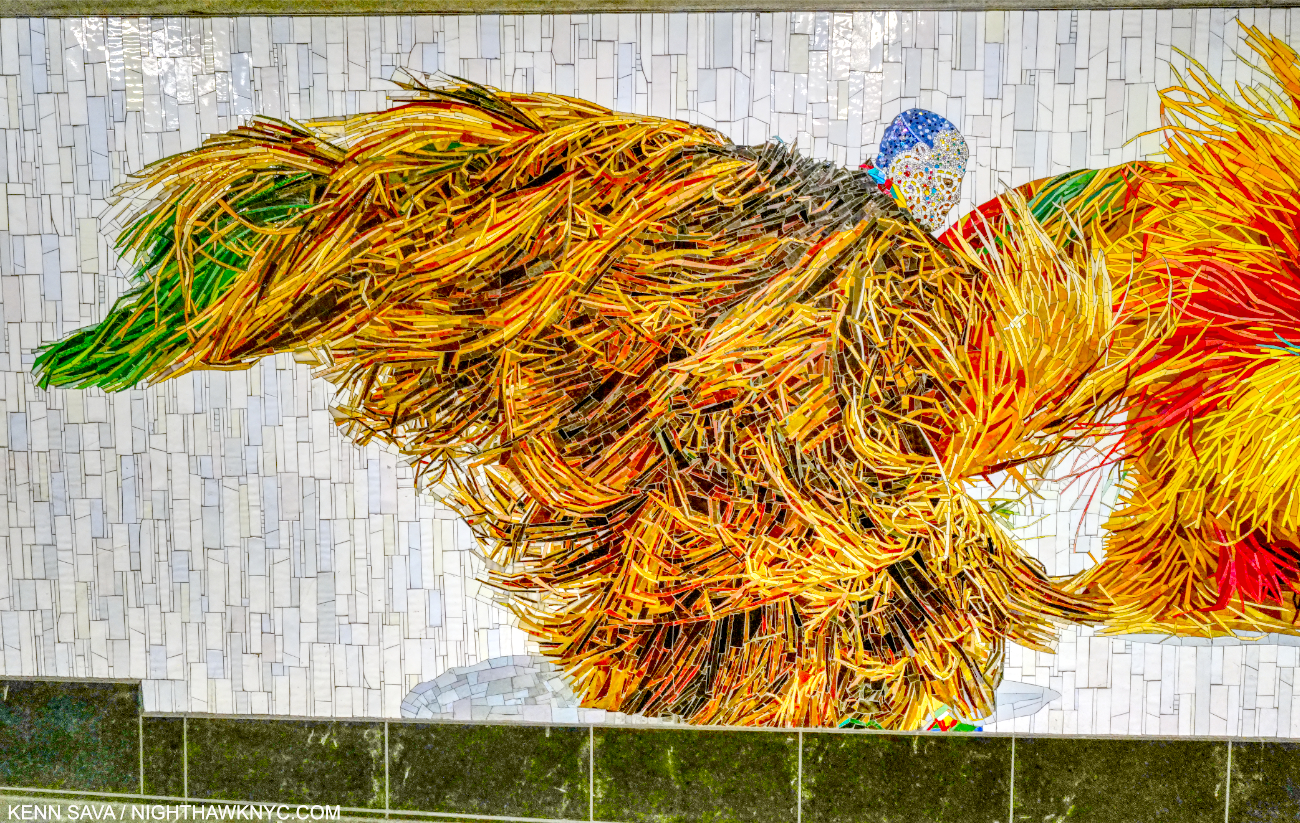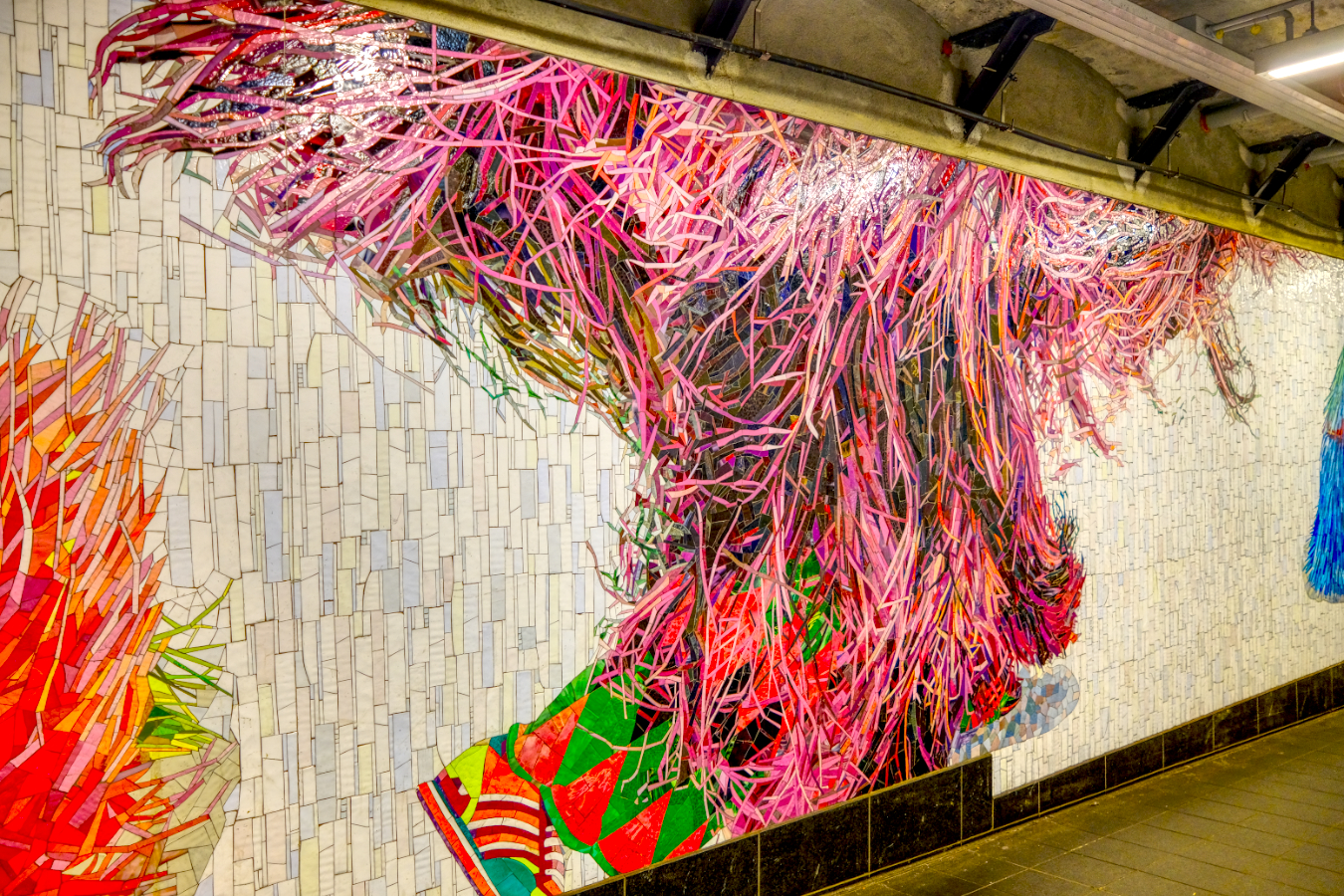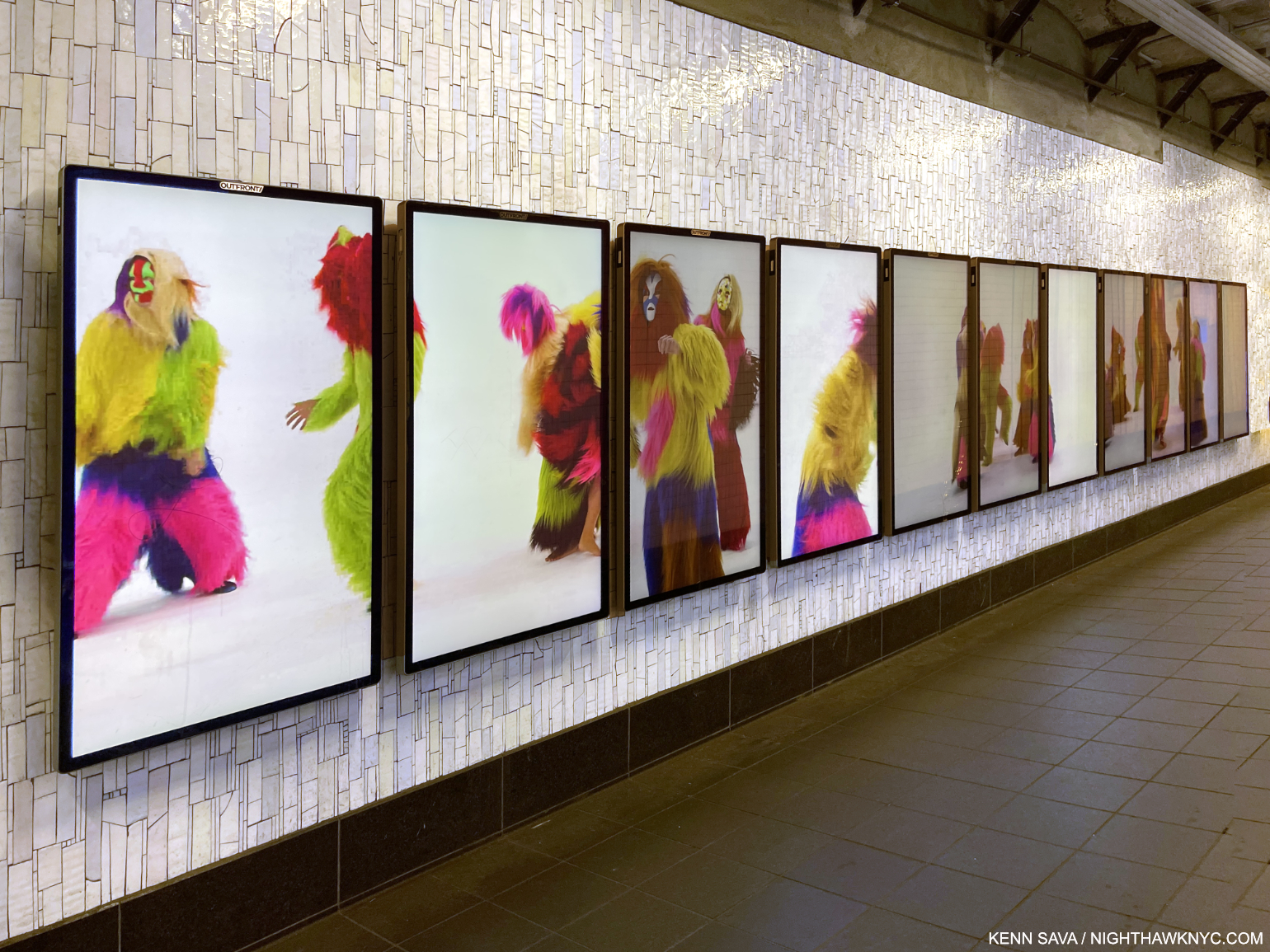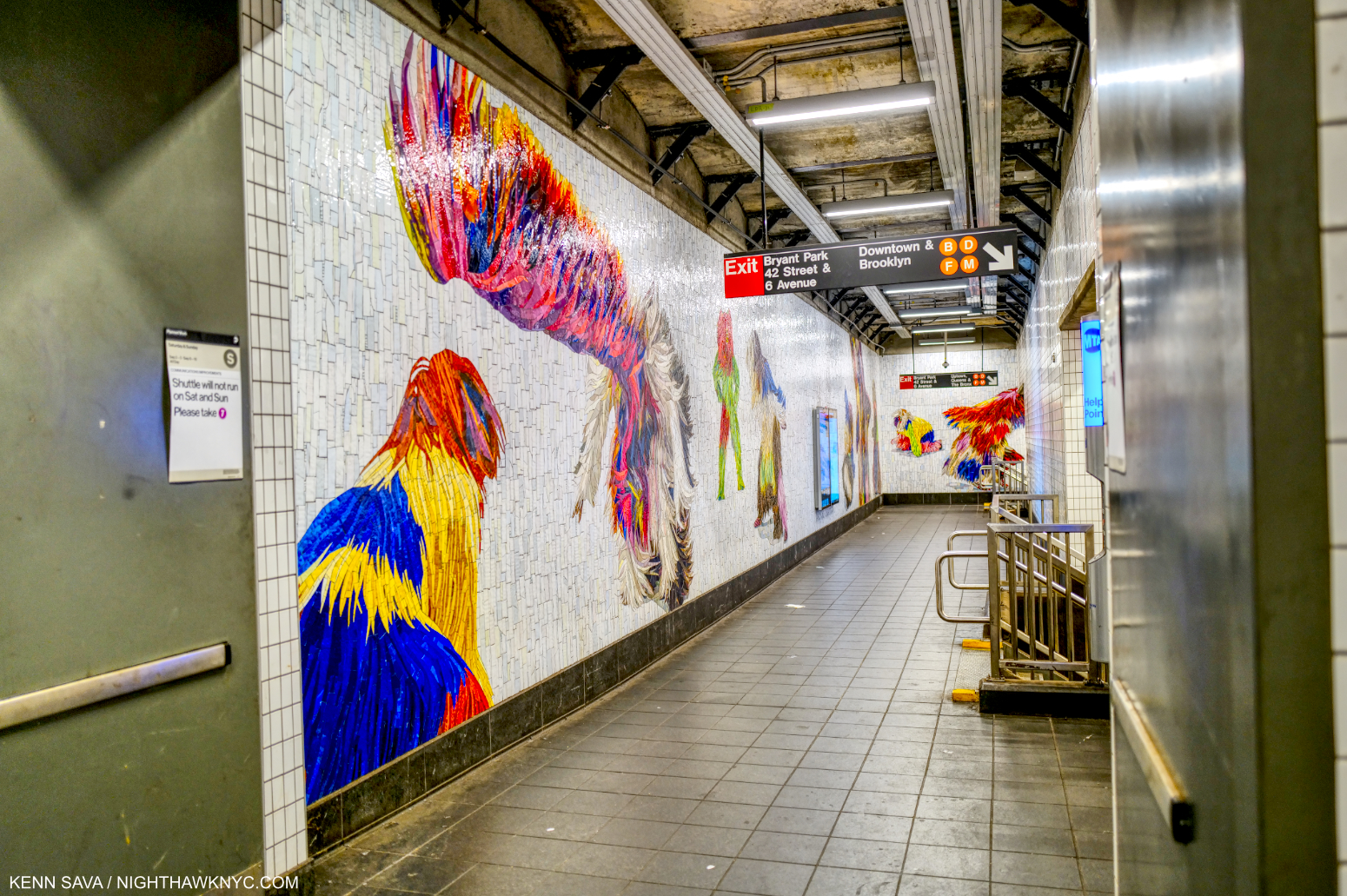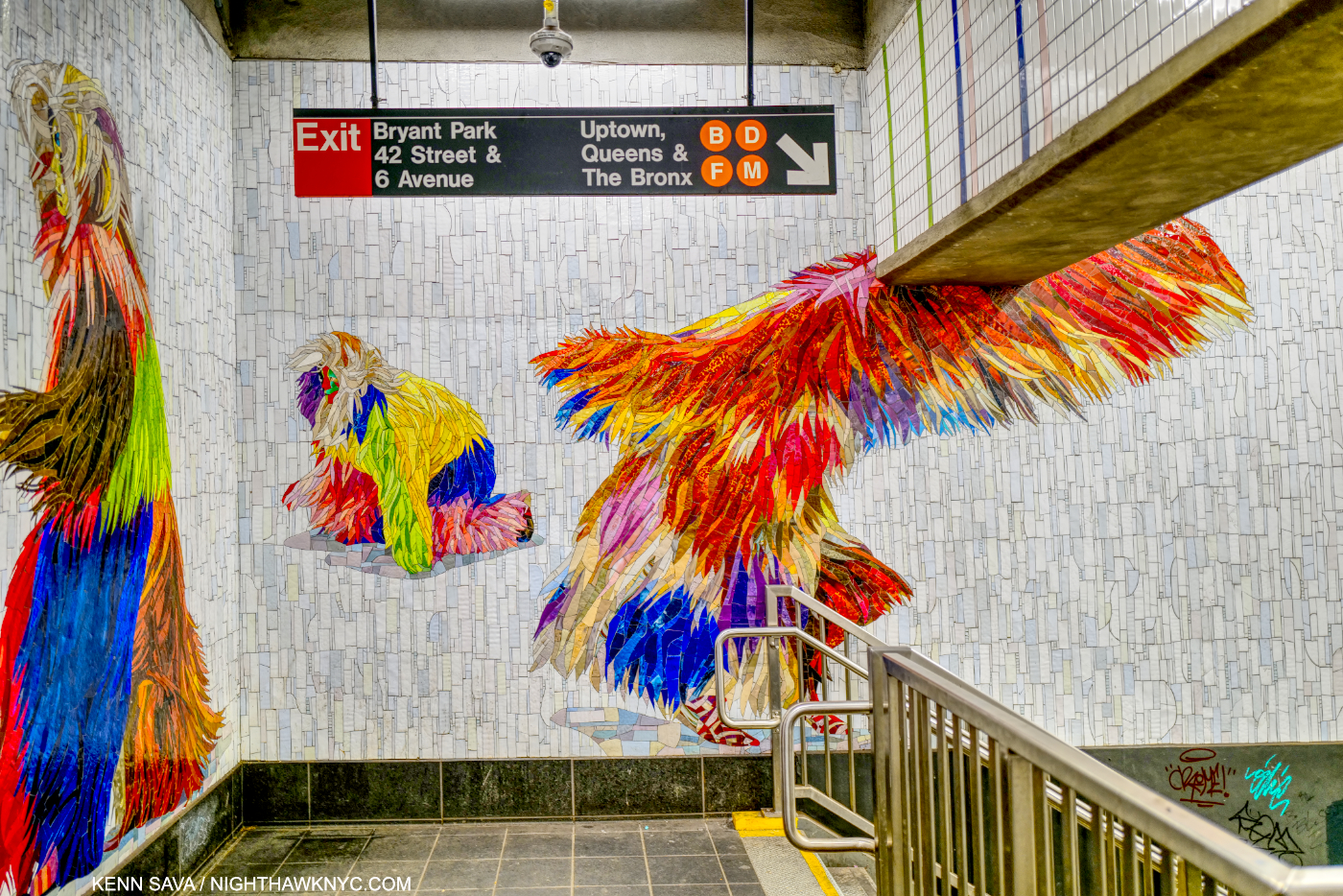This site is Free & Ad-Free! If you find this piece worthwhile, please donate via PayPal to support it & independent Art writing. You can also support it by buying Art & books! Details at the end. Thank you.
Written & Photographed by Kenn Sava
Art books were one of my first passions. I was about 8 when I first fell under their spell. The chance to see an Artist’s whole body of work in one portable object enthralled me then as much as it still does. For the next decade they were the only way I could see and explore Art. When the pandemic hit they were, once again, the only way I could see and explore Art. Now, between researching for an upcoming piece, checking out new and older Art & PhotoBooks, and discovering Artists I previously didn’t know, I’m in bookstores on an almost daily basis. Suffice it to say I see a lot of Art & PhotoBooks…
This past year, which isn’t nearly over yet, four books stood out for me among all the Art Books I saw in 2023. Since I don’t believe the “best” exists in the Arts, I prefer to call them “NoteWorthy,” i.e. books I most highly recommend among all those I saw in 2023. These books would be on my list for 2023 whether the year was 9 months or 13 months long so I’ve decided to announce my list early.
My criteria are the importance of the work shown and how well the book has been executed. All four of the subject Artists are among the more note worthy in Contemporary Art. Two of the four books are the first in-depth look at their subject, hence their importance, and all four are likely to remain the “go-to” references on their subject for the foreseeable future. They are listed in no particular order.
NoteWorthy Art Books, 2023
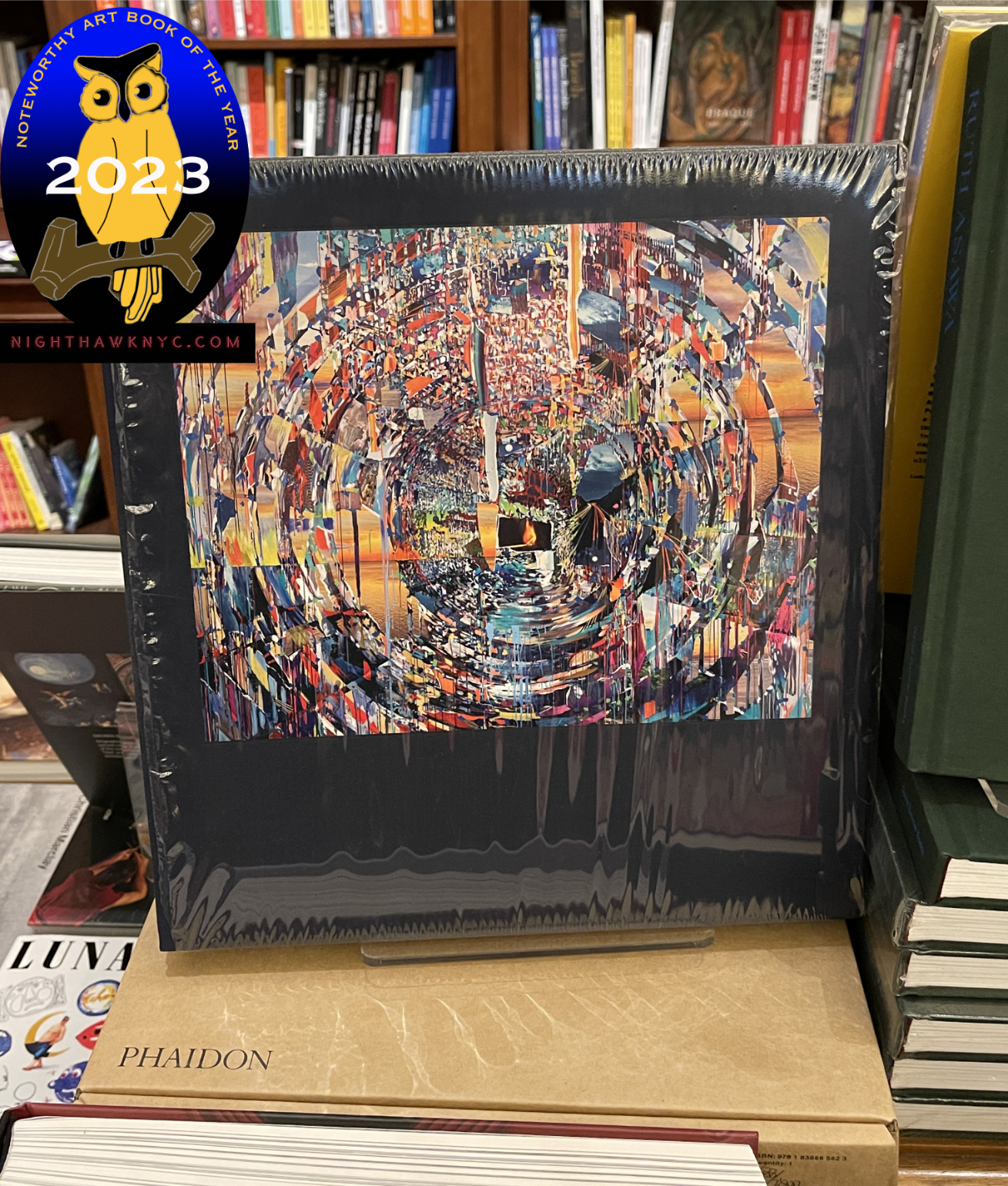
Sarah Sze: Paintings. A sealed copy of the hardcover sitting on top of its brown shipping box. Click any image for full size.
Sarah Sze: Paintings, Phaidon
I’d been going to Sarah Sze’s one-of-a-kind “Sculpture” (which is too small a word for what she creates) shows for a few decades when, in 2020, I was astonished to discover that not only is she also a Painter, but she started out as a Painter (and then was a Painting and Architecture student in school). When I first saw her Paintings in person, which I wrote about here, I was stunned. She sprang an accomplished, fully formed and revolutionary style on me. Whoa! Here she was already one of the foremost Artists of our time, now, she’s also one of our major Painters.
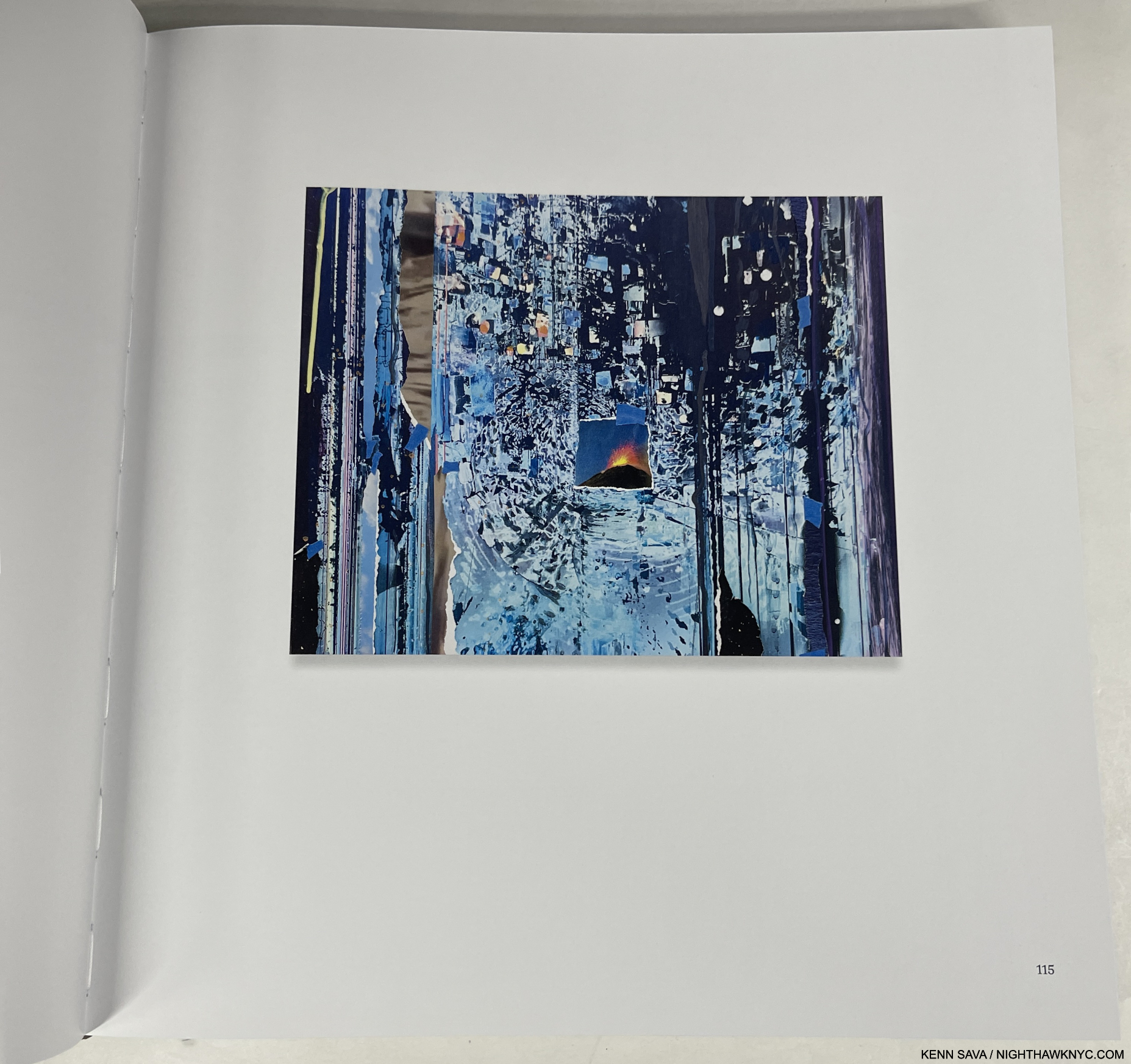
Ghost Print (Black Ripple), 2019, Oil, acrylic, acrylic polymers, ink, aluminum, archival paper, diabond and wood, 16 x 20 inches.
This year, Phaidon, the leading Contemporary Art book publisher among the major Art book publishers, immortalized her accomplishment in an absolutely gorgeous huge book, the best designed Art book I saw this year from the major Art book publishers. When I heard rumors of it coming, I wondered- Does she have enough Paintings to do a book of them? Seeing it in person left me dumbfounded. Inside the slipcase was a FOUR HUNDRED PAGE hardcover, the whole weighing 10 pounds! Paging through I was quickly lost. From the infinite, to the minute, is something that runs through Ms. Sze’s installations and now through her Painting.
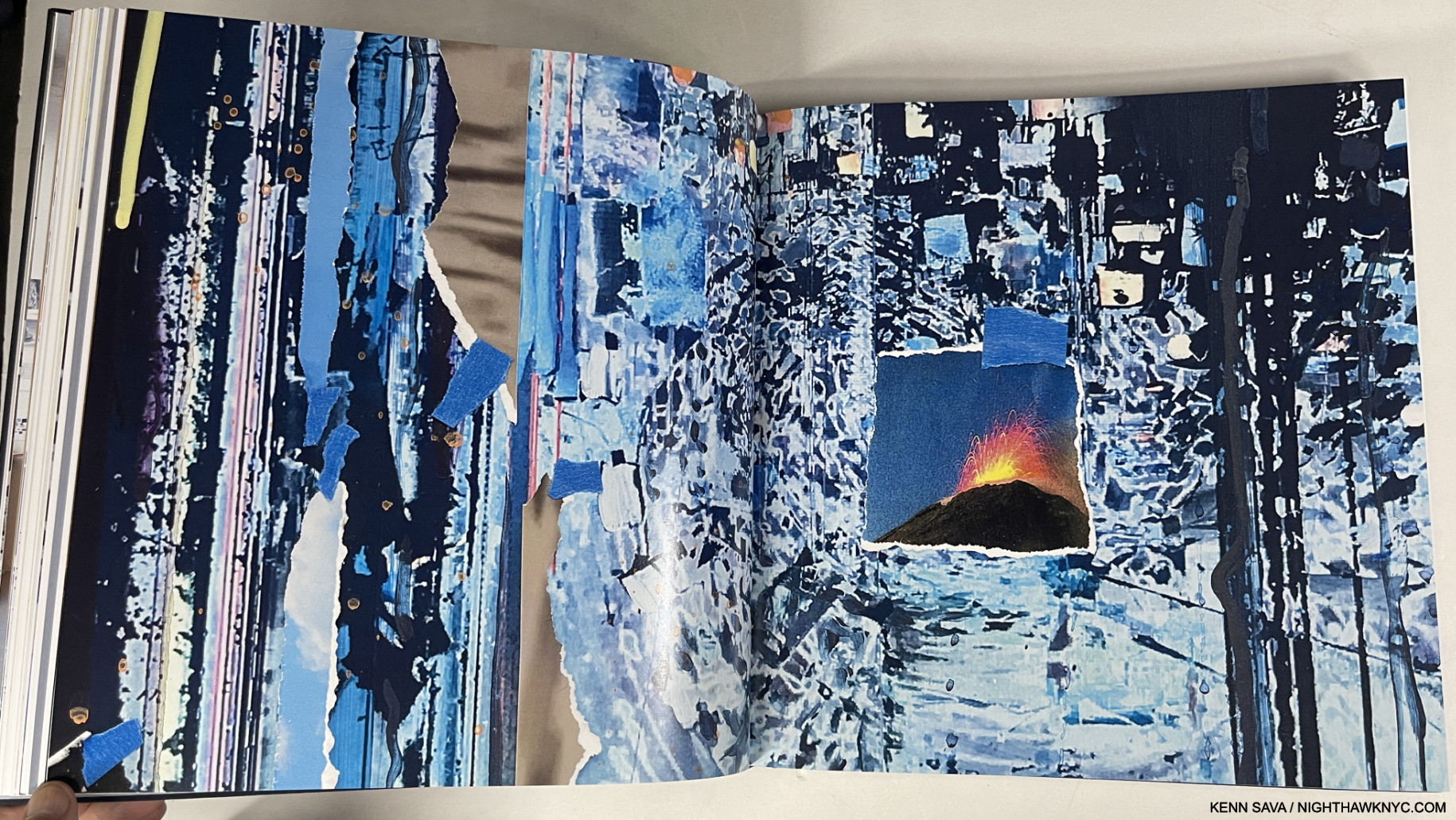
Gutters are one of the biggest problems with physical Art & PhotoBooks, one that an eBook should be able to solve. However, the vastly superior resolution of the printed page is still the only way to see Fine Art in print- decades after the invention of the eBook. Detail of Ghost Print (Black Ripple). Though I NEVER fully open a book and lay it flat, to preserve the binding. Even 3/4 open, as here, very little is lost to the gutter when compared with the Photo of the full piece, above.
Having Photographed her Paintings myself a number of times in two shows, even though the work is incredibly intricate, it’s hard to imagine the Photography of it in the book being improved on. It’s accompanied by a rock-solid binding, and top-notch attention to production detail throughout. Every copy is signed by the Artist & numbered. ALL of this I take as a sign of how closely Sarah Sze was involved in the making of this book. What more can anyone ask? Sarah Sze: Paintings is a state-of-the-Art Painting monograph.
Sarah Sze remains the only living Artist I’ve called a “genius” in the 8+ years of NighthawkNYC. I did so in my look at her most recent NYC gallery show in 2020, here. My look at her mesmerizing Summer, 2023 Guggenheim Museum show, Timelapse, is in preparation. If I hadn’t called her a genius in 2020, I’d call her one now.
Martin Wong: Malicious Mischief, Walther Konig
Is Martin Wong (1946-99) the most overlooked Painter of the later 20th century? A very strong case could be made that he is. The museums are wising up. More and more of his work is showing up in their hallowed halls. Now, from 2022 through February, 2024, three European museums- The Camden Art Centre, London; Museo Centro de Arte Dos de Mayo (CA2M), Móstoles, Madrid, and the Stedelijk Museum Amsterdam are hosting a traveling exhibition, Martin Wong: Malicious Mischief, of over 100 works, the largest show of his work so far. The Met had the spectacular Martin Wong shown further below up in the Contemporary Wing where I saw it this past year, which I believe they have now lent to the show. As far as I know, he never saw a book published on his work during his lifetime.
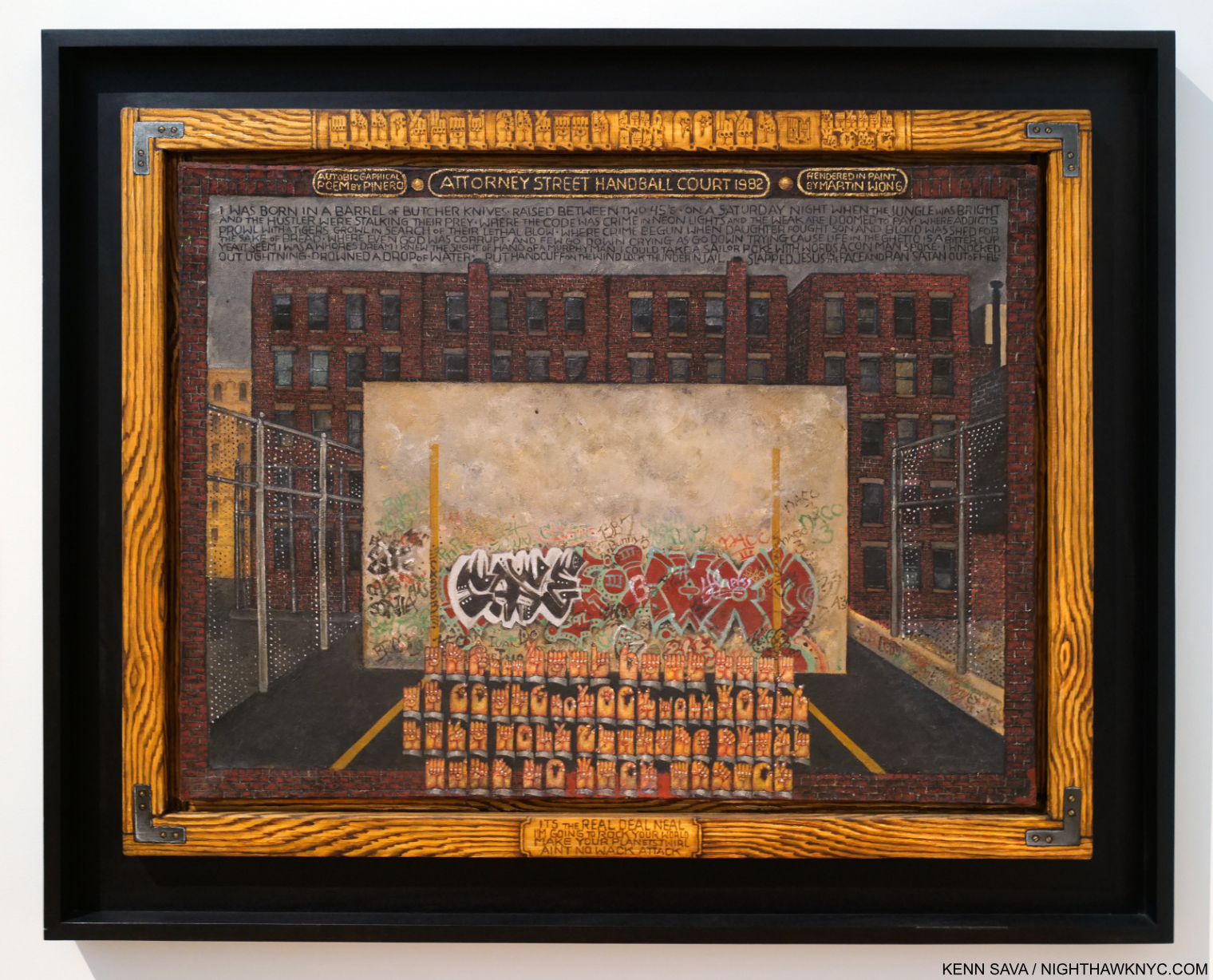
Martin Wong, Attorney Street (Handball Court with Autobiographical Poem by Piñero), 1982-4, Oil on canvas, 35 1/2 x 48 inches. Seen at The Met in June, 2022, Though he didn’t live to see a book on his work, he did live to see his work in The Met, who acquired Attorney Street in 1984, just after he finished it. Those hands along the top of the faux frame and near the bottom are speaking in American Sign Language.
Now, there have been two. Martin Wong: Malicious Mischief, the book, published to accompany the show, is the largest and most comprehensive book on his work so far. The only other one known to me, Martin Wong: Human Instamatic, published to accompany the show of the same name at the Bronx Museum in 2016, is long out of print, i.e. “expensive.” I have it, but I recommend Malicious Mischief. Here, his case has never been more completely and more beautifully made.
Martin Wong was something of the unofficial “Poet of the Lower East Side,” but never got the recognition or attention his contemporaries Jean-Michel Basquiat or Keith Haring did even though he outlived both. Still, twenty-four years after his passing, his work has continued to hold up and fascinate. It’s, also, every bit as timely, now, as it was when he Painted it. Blessed with being able to work in a wide range of styles, his work is characterized by its freedom from piece to piece. Throughout, his Draftsmanship forms a rock-solid base, which he carries through with an extremely high level of attention to detail.
It’s a paperback, unfortunately, a cardinal sin in my view for a book this important, and the cover is a bit on the malleable side; the paper stock could be thicker. Still, its importance outweighs these drawbacks. At 339 pages and over 3 pounds it’s a good-sized book with 8 1/2 by 11 inch pages which show the copious and fascinating detail in Mr. Wong’s work to advantage. Imported catalogs for shows, like this, have a habit of not staying available indefinitely. So act soon to “avoid disappointment and future regret” as the informercials say. Which reminds me- the next time I regret not buying something from an infomercial will be the first time.
Rod Penner: Paintings, 1987-2022, The Artist Book Foundation
What more/else can I say about Rod Penner: Paintings that I didn’t say in my in-depth review of it is here? Actually, I can say that it was on my original draft of my Desert Island Art Books, along with the Martin Wong, above. Pretty remarkable when you look at the publishing dates for the books on the final list. Realizing my draft list was too long, I made the hard choice of focusing on older books that have stood up for me for years, and left off the two that were less than one-year old. While I didn’t put them on that list, they deserve to be on this one.
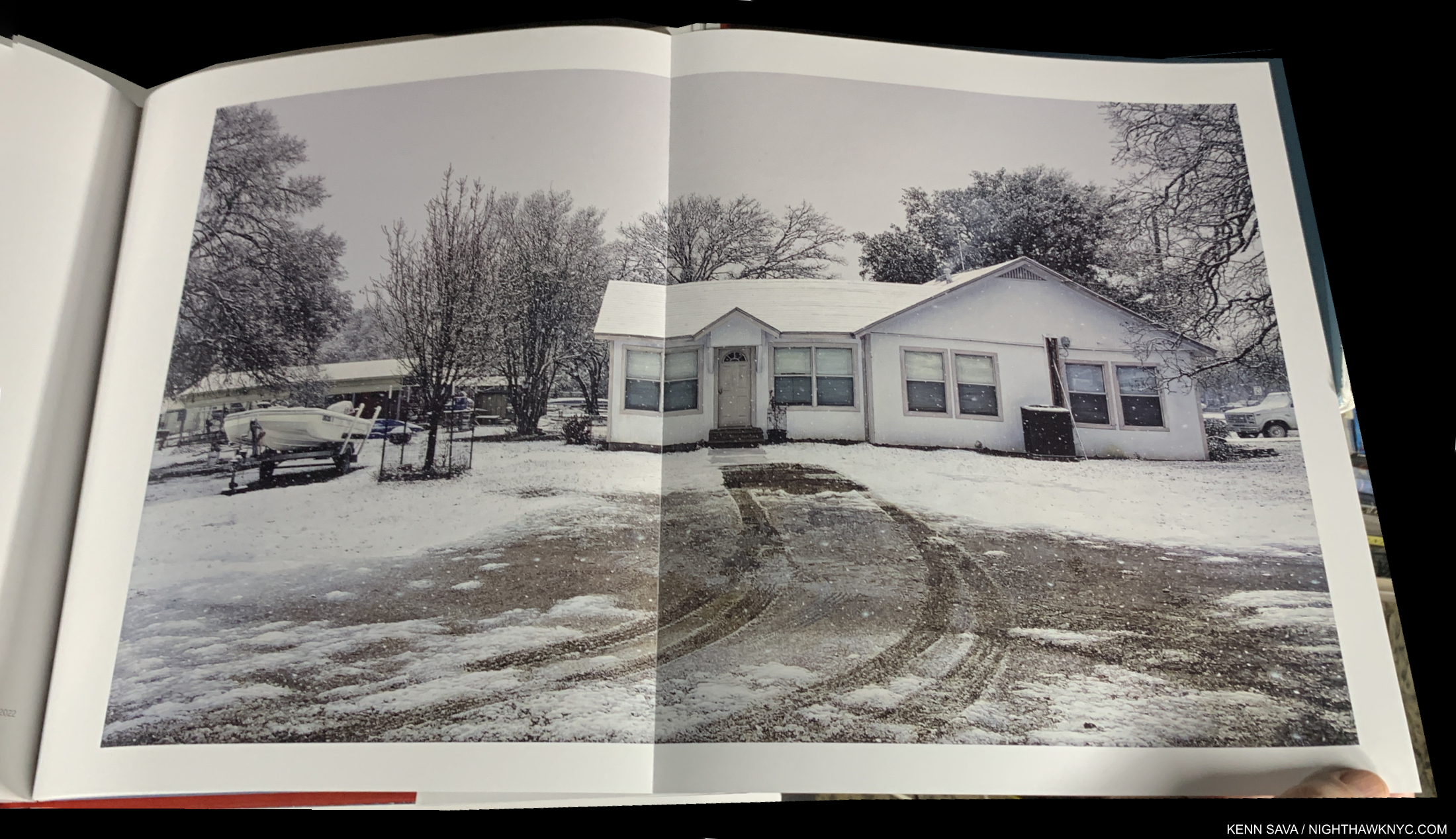
House with Skiff/Marble Falls,TX, 2022, Acrylic on canvas, 32 x 54 inches. The most recent work in the book shows that Rod Penner is still at the very top of his considerable game.
A full-length book on Rod Penner has been a long time coming. What we got is something unusual in my 50 years of Art book experience: a book that serves the dual purposes of being both a monographic overview of the Artist’s work these past 35 years, AND a Catalogue Raisonné containing everything the Artist has Painted through 2022. As such, it will serve those new to Rod Penner’s work, as well as collectors, curators and Art historians, well indefinitely.
My pieces on Rod Penner are here, including my recent look at his Spring, 2023 NYC show, where I said that Rod Penner is “the foremost Painter of small-town America working today.” I believe that after the distracting hype surrounding his remarkable technique dies down, and more people get down to looking at what he’s Painted, that that’s how this work will be thought of.
Nick Cave: Forothermore, Museum of Contemporary Art, Chicago/DelMonico
Nick Cave’s books are always gorgeous, and important. With only 10 published on his work so far (he says, though I’ve only seen 5), all are worthy of his extraordinary talent, and all worth seeking out. This is indicative of his involvement in them. Forothermore, the catalog accompanying his landmark mid-career retrospective at the Museum of Contemporary Art, Chicago, which traveled to the Guggenheim Museum earlier this year, is now my go-to choice among the 5 I’ve seen, a very hard choice to make. Of the show, I wrote, “I went in believing Mr. Cave is one of the more important Artists working today. I left speechless.”
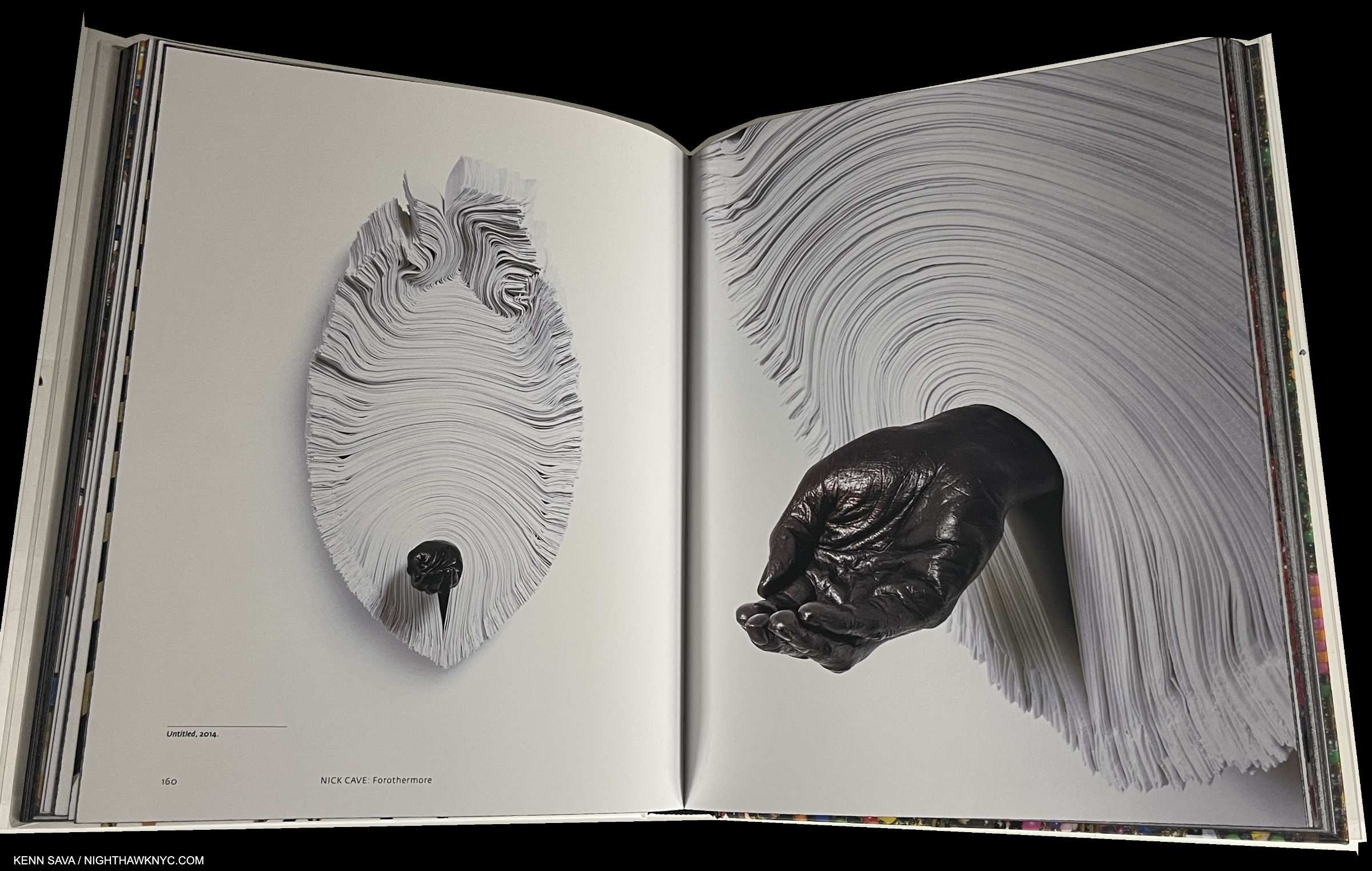
I wrote extensively about Nick Cave’s famous Soundsuits, in my piece on the show and they are featured throughout the book. Here is some of his other work, Untitled, 2014. As for the wonderful design, I love how he’ll often get around the problem of the gutter by putting the full work on one side, and a compelling detail on the other.
Luckily, exhibition catalogs live on indefinitely after their subject show, and some enhance their value to readers by serving more than one purpose. This is one example. It’s gorgeously & lovingly produced and features large Photos of Mr. Cave’s work throughout his career, which allows for closer study & appreciation of the incredible amount of detail and subtlety in his work (just look at the cover and remember that is all hand-made).
All of this makes Forothermore doubly important as both the exhibition catalog for the show and the go-to book with beautiful reproductions of the most comprehensive collection of Nick Cave Art over all of his career, including his recent work, among his excellent books. Speaking of them, if you want one Nick Cave book, I’d choose Forothermore right now, but do at least take a look at Until (2017); Epitome (2014); Meet Me at the Center of the Earth (2010); and Greetings From Detroit, (2015) if you want to see just how hard the choice is!
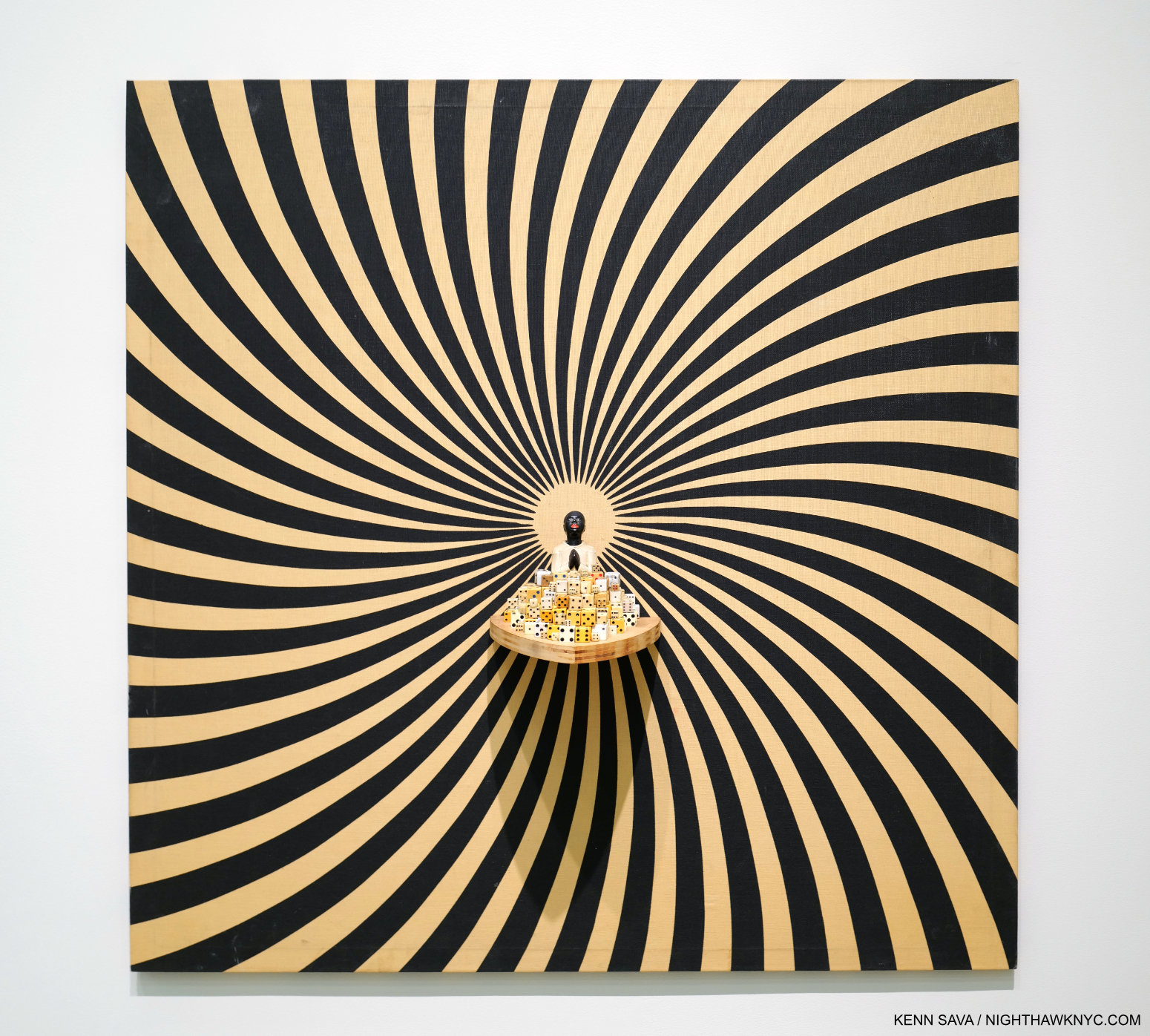
I Wouldn’t Bet Against It, 2007, Mixed media including vintage fabric, dice, and objects, 48 by 48 by 6 inches, as seen in the show, though it also appears on pages 154-5 of the Furthermore catalog.
Nick Cave is so unique, and so important, I can’t help thinking that we’re looking at someone who could very possibly become an Art “superstar.” Can you imagine his impact on the fashion world, if he chose to get involved in it? I also have the feeling that if and when “stardom” does happen for him, Mr. Cave would handle it with every bit as much class and purpose as he has everything else in his career.
My look at Forothermore, the show, is here. My look at Nick Cave’s just completed large NYC Subway Public Art Installation is here.
Also Recommended-
Salman Toor, No Ordinary Love, Baltimore Museum/Gregory Miller
I saw Salman Toor’s first solo museum show, How Will I Know, at the Whitney Museum in 2021, and put his name on my list. Still, I was not prepared for the depth and level of accomplishment his first book, No Ordinary Love, reveals. Published to accompany a show of the same name at the Baltimore Museum, both struck a nerve because the book evaporated (i.e. it’s already sold out). I’m really not surprised. His work is fresh, bold, sensual & beautiful with a unique sense of color, and in a style completely his own. His work echoes Paul Cadmus’s for me, but looks nothing like it. Stylistically, he seems closer to early and late Philip Guston and Lisa Yuskavage, but none of this is said in comparison. Salman Toor is, deservedly, the 2023 Art world phenomenon that previously touched Jordan Casteel and Jennifer Packer these past few years.
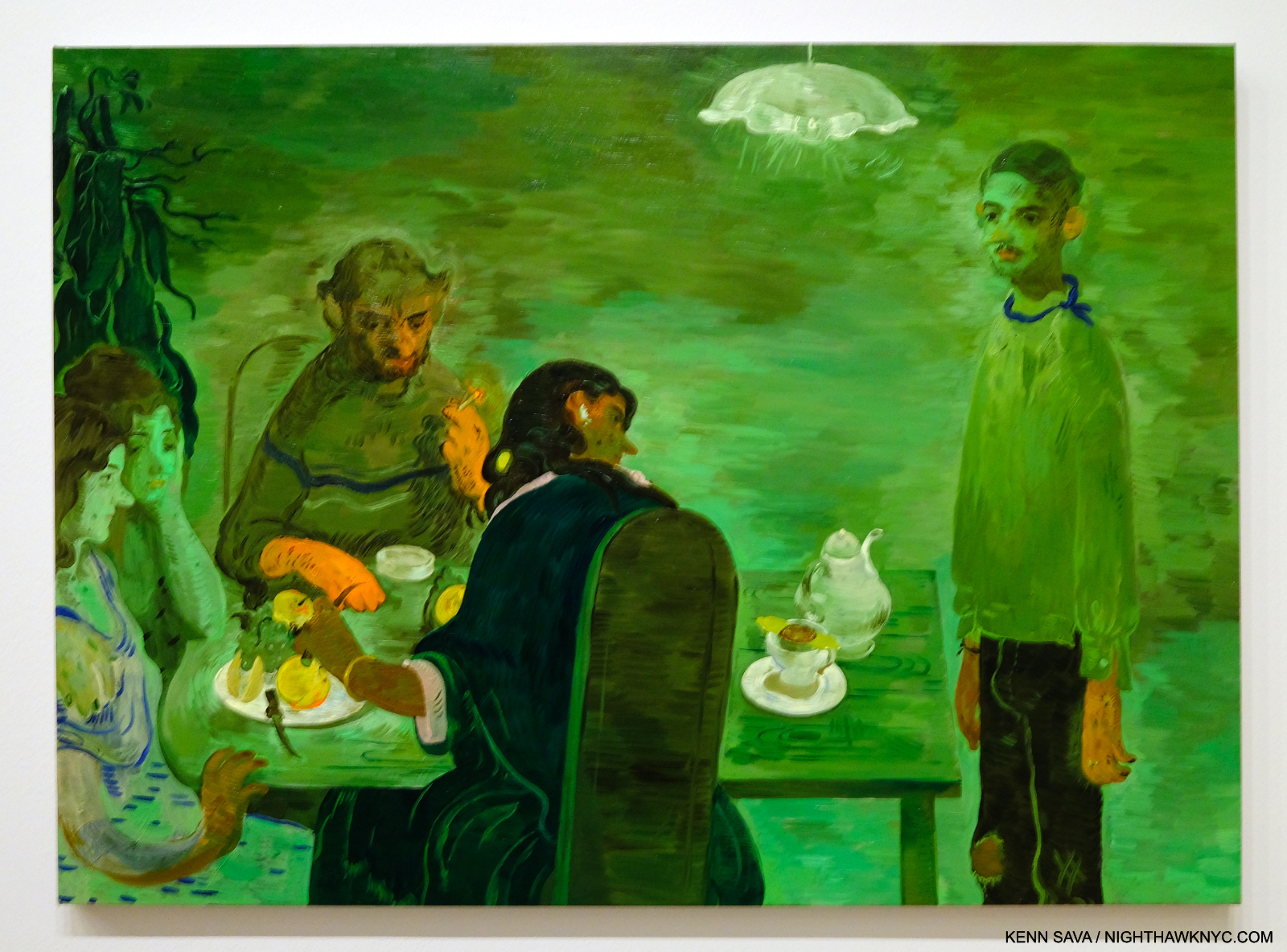
Tea, 2020, Oil on canvas. Seen at Salman Toor: How Will I Know, at the Whitney Museum on March 26, 2021.
Born in Lahore in 1983, and now American, Mr. Toor must have had (or will have) a terrific 40th Birthday after The Met bought one of his Paintings this year.
Jeffrey Gibson, et al, An Indigenous Present, DelMonico
Indigenous Artists have finally begun to get the attention they deserve.
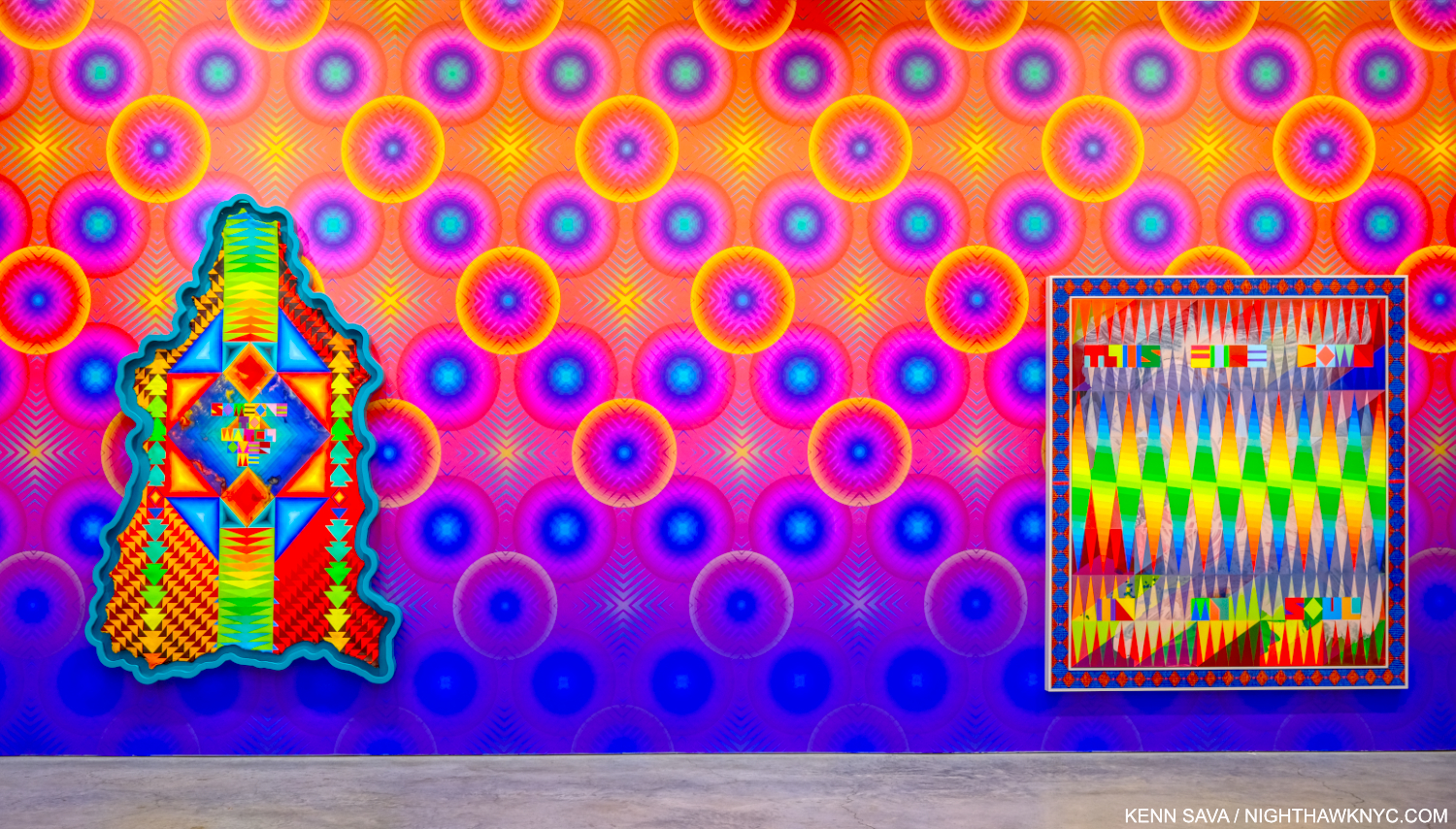
Have you ever seen a canvas shaped like this? Jeffrey Gibson, SOMEONE TO WATCH OVER ME, 2023, Acrylic paint on elk hide inset in custom wood frame, 103 x 69 x 5 inches, left, THIS FIRE DOWN IN MY SOUL, 2023, Acrylic on canvas, glass beads, artificial sinew, inset to custom wood frame, 88 x 80 inches, right. “Wallpaper” by the Artist. Seen in Jeffrey Gibson: ANCESTRAL SUPERBLOOM at Sikkema Jenkins, September 22, 2023.
Jeffrey Gibson, who has a beautiful show up as I write at Sikkema Jenkins, NYC, Jeffrey Gibson: ANCESTRAL SUPERBLOOM conceived this collection/overview of 60 of his fellow Indigenous Contemporary Artists. What an eye-opener! What impresses me is the vast depth of Artists who are doing their own thing, seemingly working outside the traditional model of Western Art, and instead basing their work on their traditions, heritage and experiences. “Ancestral,” to quote Mr. Gibson’s show title, is the key, apparently.
I find it a gust of fresh air.
I recently wrote about one Artist included, Jaune Quick-to-See Smith’s Witney Museum retrospective, and another, Wendy Red Star, in passing after Kris Graves published her first book in his Lost II set. What An Indigenous Present tells me is that we’re going to see much more from many other Indigenous Artists soon.
My final Also Recommended NoteWorthy Art Book of 2023 is Hughie Lee-Smith, published by Karma. I wrote about it here.
*-Soundtrack for this piece is “Conquistador” by Procol Harum from their great live album Live: In Concert with the Edmonton Symphony Orchestra, one of the first (if not the first) live albums paring a rock band with an orchestra, from around the time I first fell under the spell of Art books.
Also see the companion piece- NoteWorthy PhotoBooks, 2023, which includes a book by an Artist.
My previous NoteWorthy Art Book lists-
NoteWorthy Art Books (and Bricks), 2021
THERE ARE NO AFFILIATE LINKS IN THIS PIECE!
NighthawkNYC.com has been entirely self-funded & ad-free for over 8 years, during which 300 full-length pieces have been published! If you’ve found it worthwhile, PLEASE donate to allow me to continue below. Thank you, Kenn.
You can also support it by buying Art, Art & Photography books, and Music from my collection! Art & Books may be found here. Music here and here.
Written & photographed by Kenn Sava for nighthawknyc.com unless otherwise credited. To send comments, thoughts, feedback or propositions click here. Click the white box on the upper right for the archives or to search them. Subscribe to be notified of new Posts below. Your information will be used for no other purpose.

